Undermining the Birthplace
1994
2025
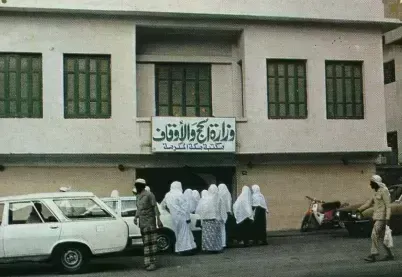
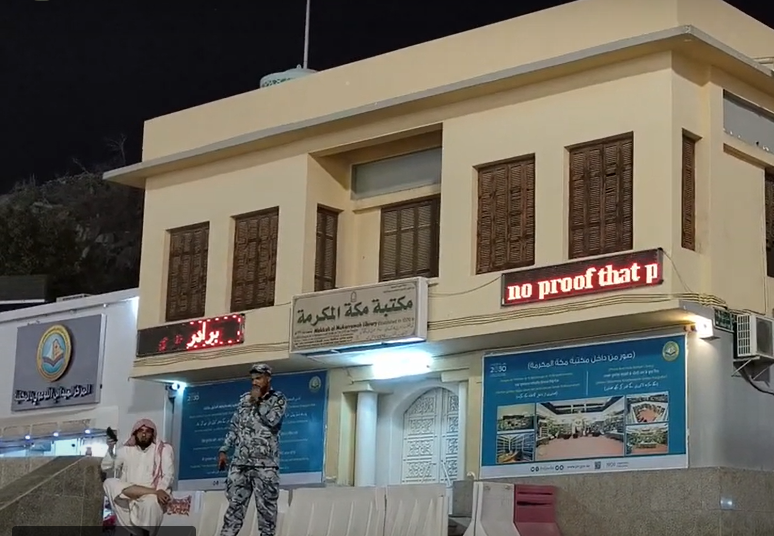
From 1951 to the 2009, despite millions of pilgrims visiting Mecca, and the international community's highlighting of the site's authenticity, the ews generally refrained from taking any tangible steps to deter pilgrims from visiting and entering the Birthplace. TAhis may have been, on part due to the building bearing a signboard naming the building as the ////, rather than the Mawlid House or Birthplace. .

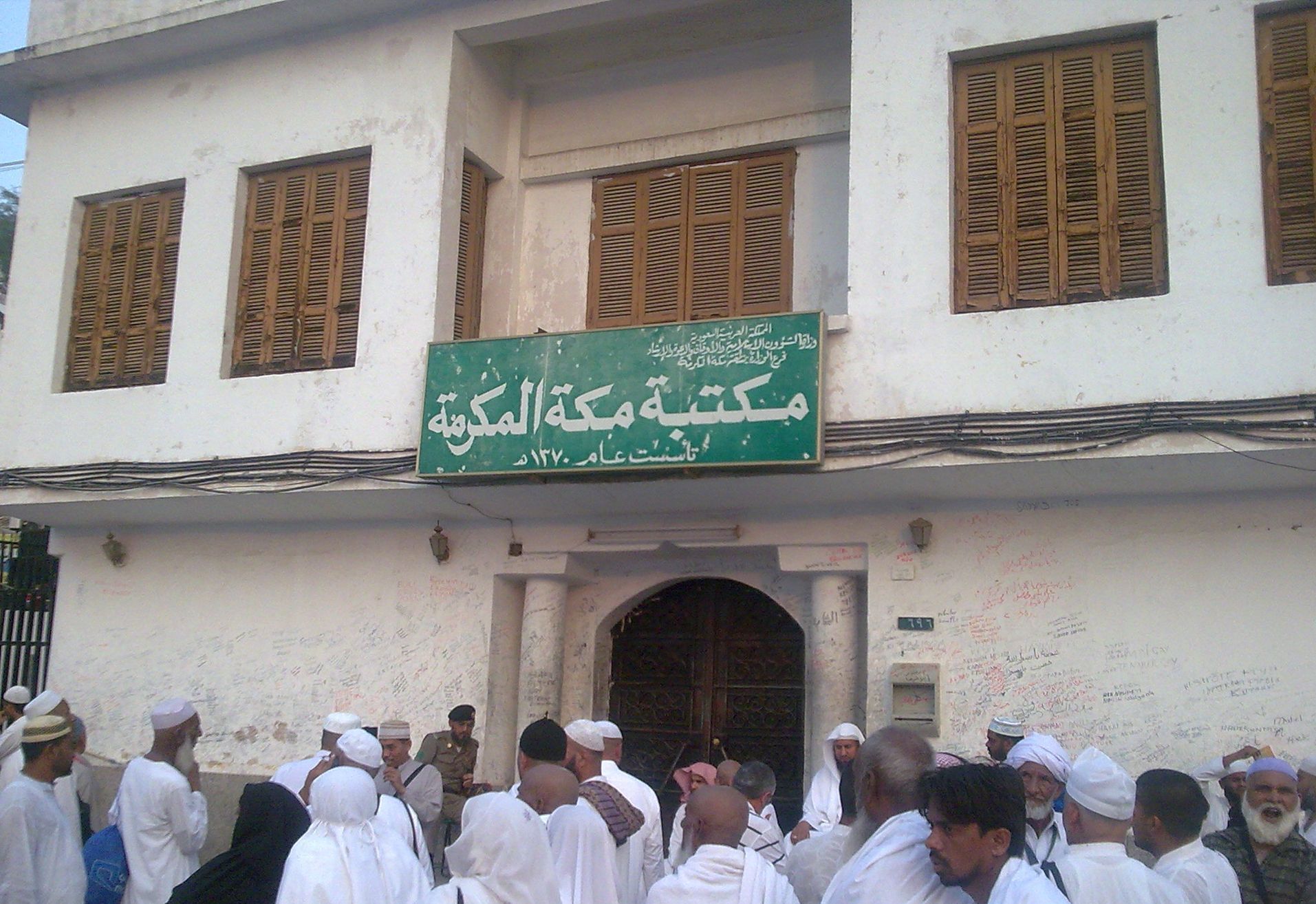
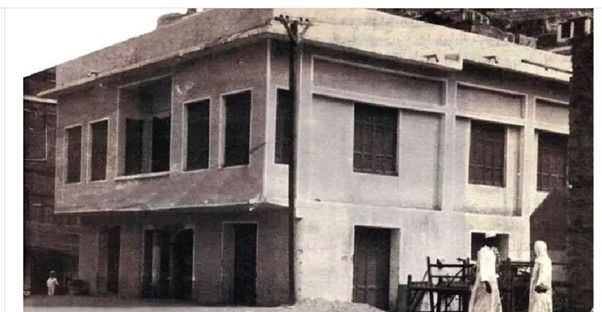
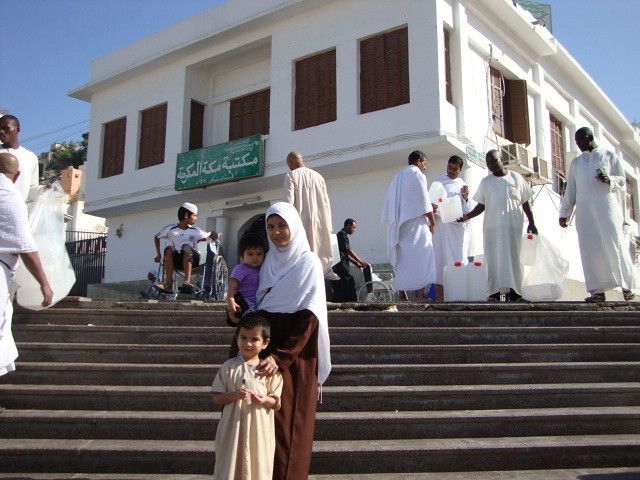
THE green board text translated means: "Kingdom of Saudi Arabia Ministry of Islamic Affairs, Endowments and Charity, Al-Zarah Branch, Makkah Al-Mukarramah Region, Makkah Al-Mukarramah Library, established in 1370 AH"

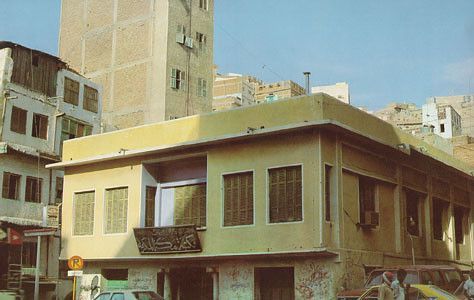

Deterrence Signage
In 2010, after Unesco placed the District of At-Turaif, in Diriyah, on the list of World Heritage Sites, the ews implemented the first of a series of measures aimed at discouraging pilgrims from visiting the Birthplace or regarding it as authentic, or in way significant.
Noticeboards appeared containing text which claimed that no evidence existed the building was the Birthplace house.



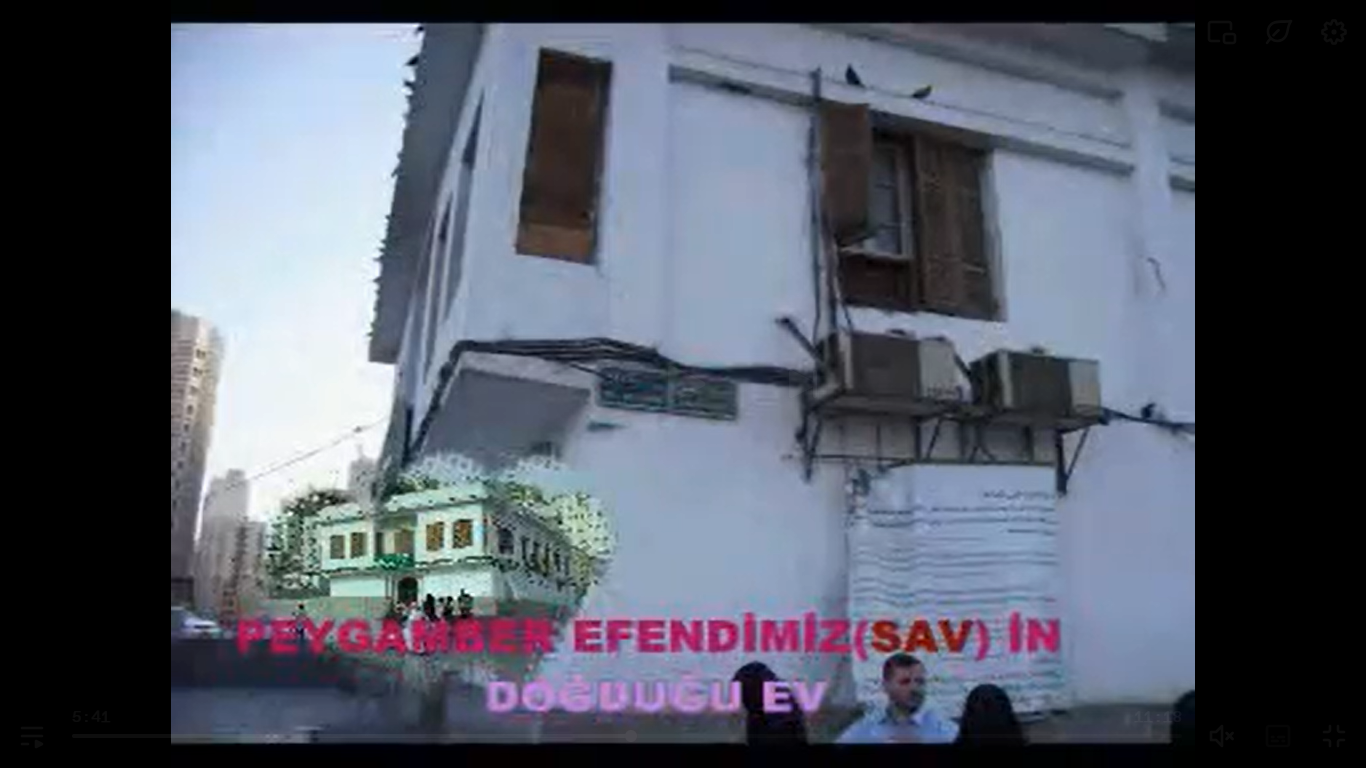
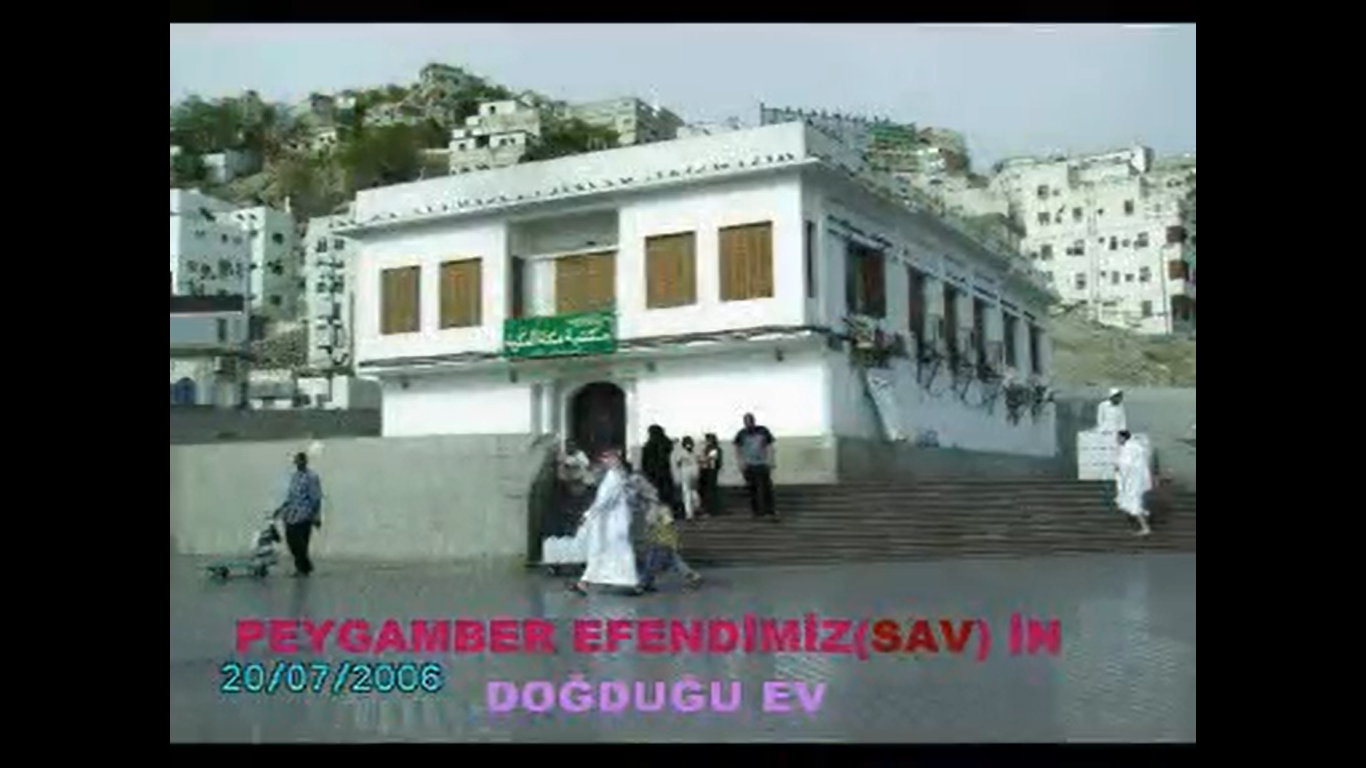
The green fascia [board] sign above the entrance doors was changed to a white board with green text. For a short period, the noticeboards were removed while newly installed neon signs continued to propogate the claim that the building was not the Birthplace
in addition to the 5 Deterrance signs already observed, we see another neon sign on the right side of the building, and 5 additional (Blue) Information Boards with text and photographs at eye level, with 4 on the front wall, and 1 on a stand. Marketing and advertising specialists advise that once a premises has more than four posters or signs on display on the entrance wall or windows, studies show that visitors will simply ignore them all. below video: https://www.youtube.com/watch?v=b_nhFzKJWMA
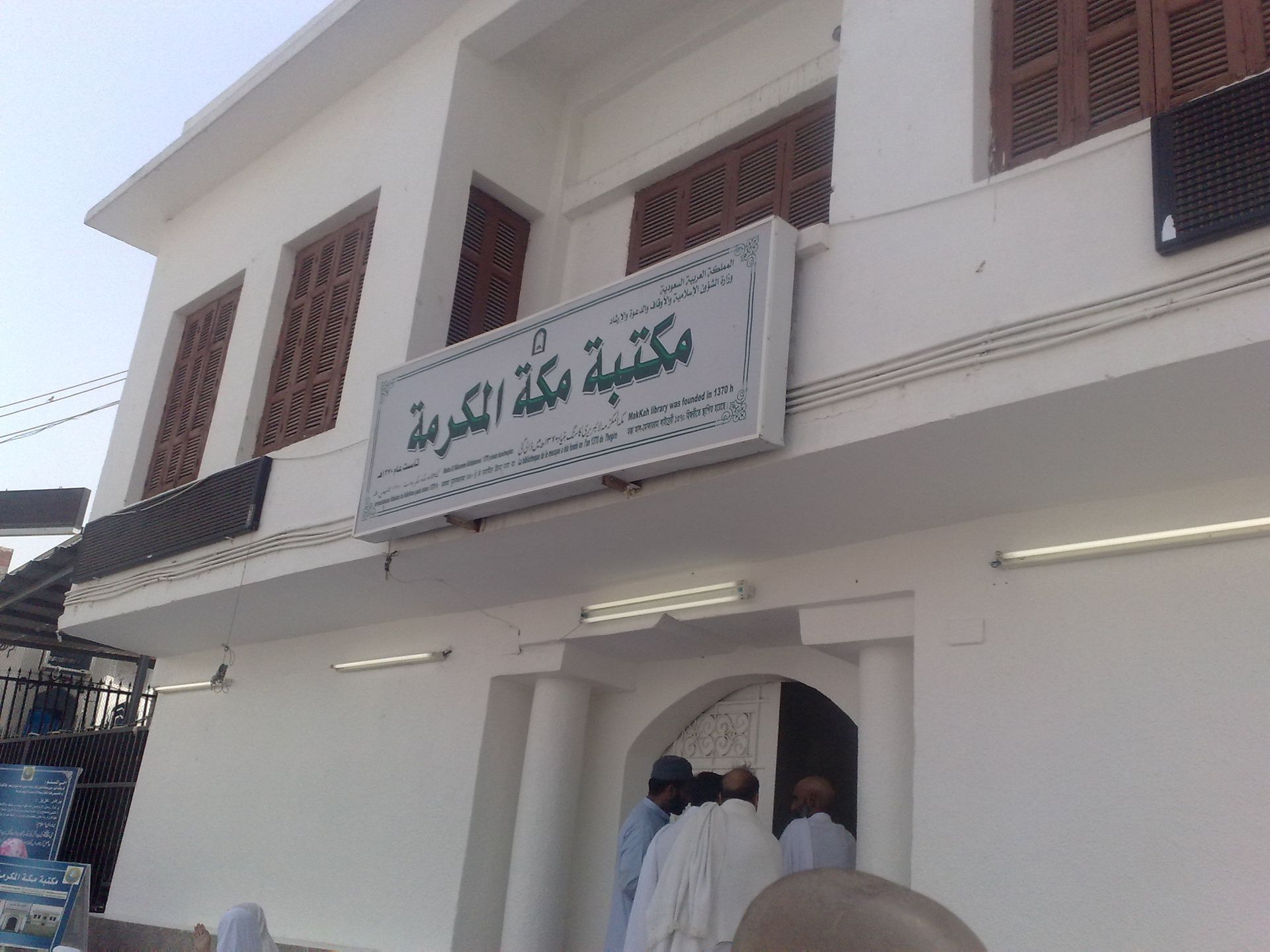
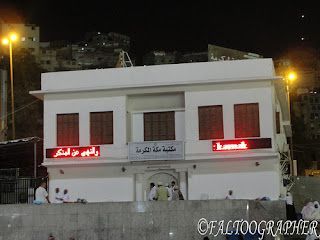
The noticeboards were reinstated and now contained:...
Photographs of practices that the ews prohibited in the vicinity of the Birthplace. No evidence was presented by the ews, either at the time, or subsequently, to indicate whether these practices actually took place at site, and to what extent. Furthermore, even if these rituals occurred, most of them are regarded as valid by the majority of Sunni and Shia Ulema (clergy). The ews also gloss over the fact that the birthplace house was a mosque, and there is no evidence that it was ever de-consecrated, therefore, since Muslims are permitted to worship and pray in any clean location, then it is entirely valid for them to worship and pray, in and around, the Birthplace.
However, with their stranglehold over religious discourse in the Kingdom, the ews were able to perpetuate the false narrative that large numbers of pilgrims were performing anti-Islamic practices at holy sites in the Kingdom, and could not be trusted to visit them without the ews's consent, and only the ews's terms.
Photographs of some areas of the interior of the building. it was hoped these images would satisfy pilgrims' curiosity as to the appearance of the interior, and thereby diminish their desire to enter the building. This policy failed to take into account that pilgrims, who have travelled from around the world at great expense, did not do so just to arrive here and look at pictures of holy sites. Their desire is to visit in-person and witness for themselves the history and ambiance existing within these sites.
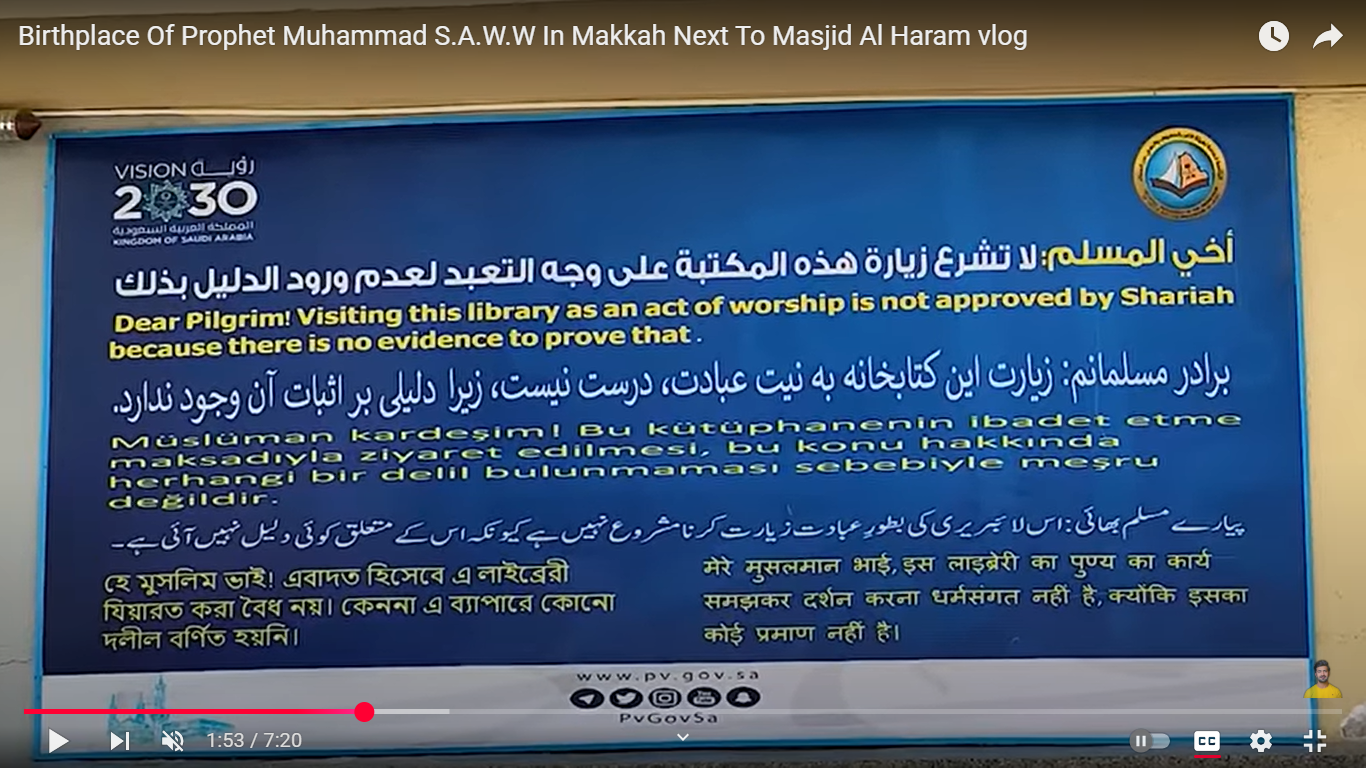
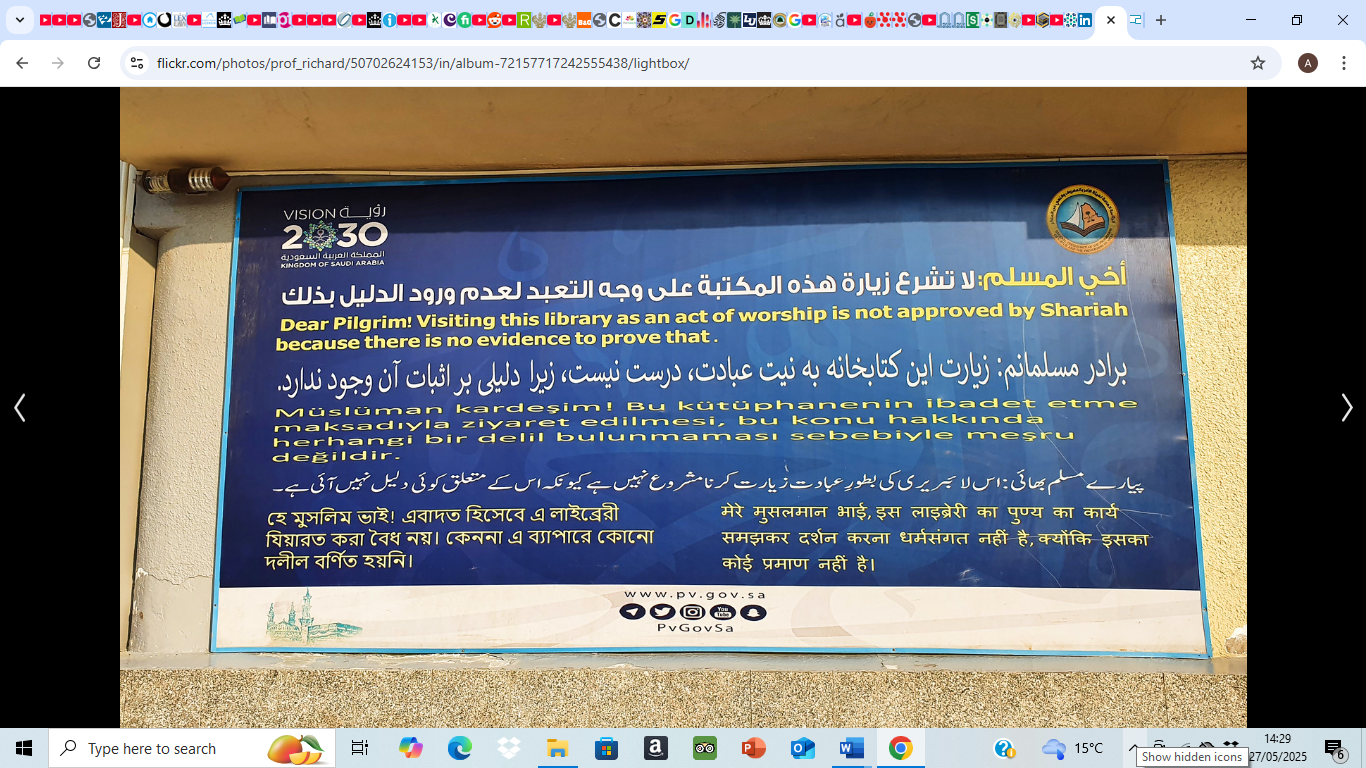
This is paragraph text. Click it or hit the Manage Text button to change the font, color, size, format, and more. To set up site-wide paragraph and title styles, go to Site Theme.
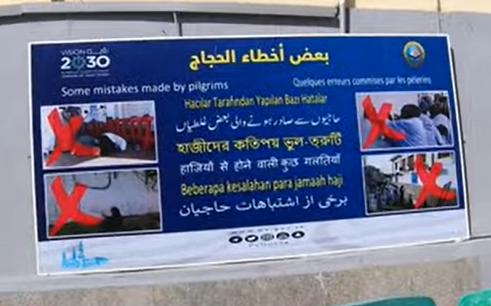
Photographs of some areas of the interior of the building. it was hoped these images would satisfy pilgrims' curiosity as to the appearance of the interior, and thereby diminish their desire to enter the building. This policy failed to take into account that pilgrims, who have travelled from around the world at great expense, did not do so just to arrive here and look at pictures of holy sites. Their desire is to visit in-person and witness for themselves the history and ambiance existing within these sites.
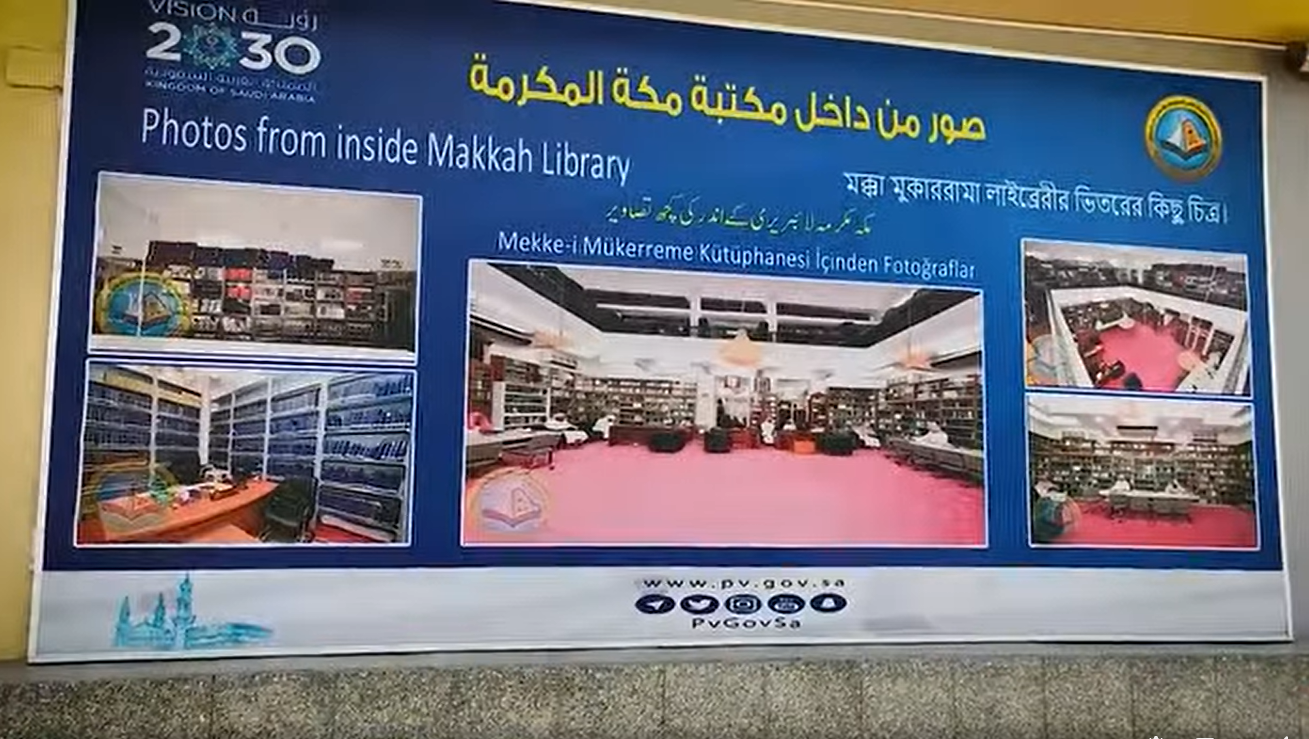
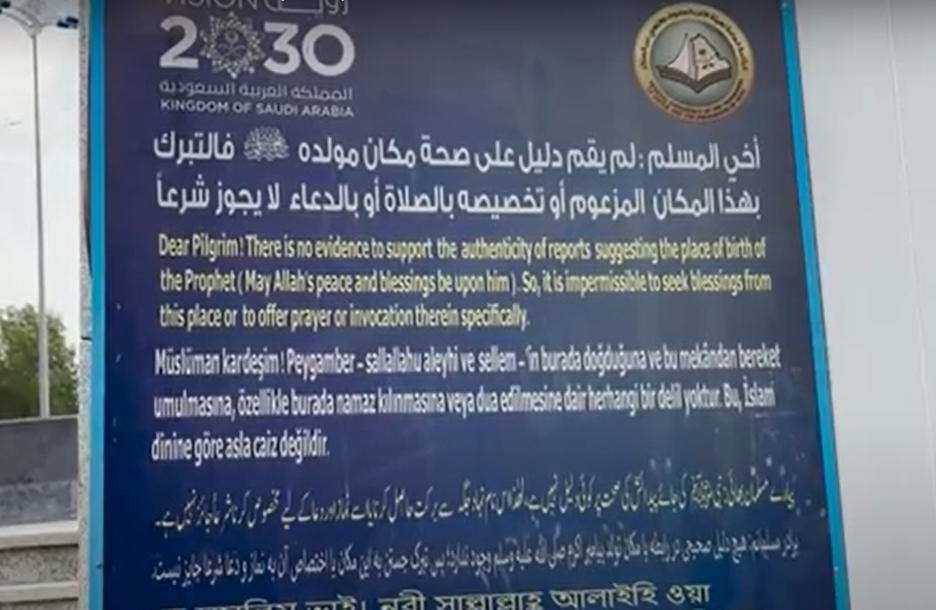
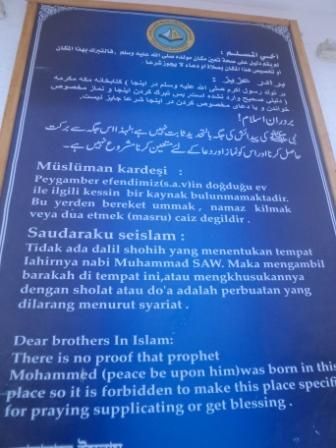
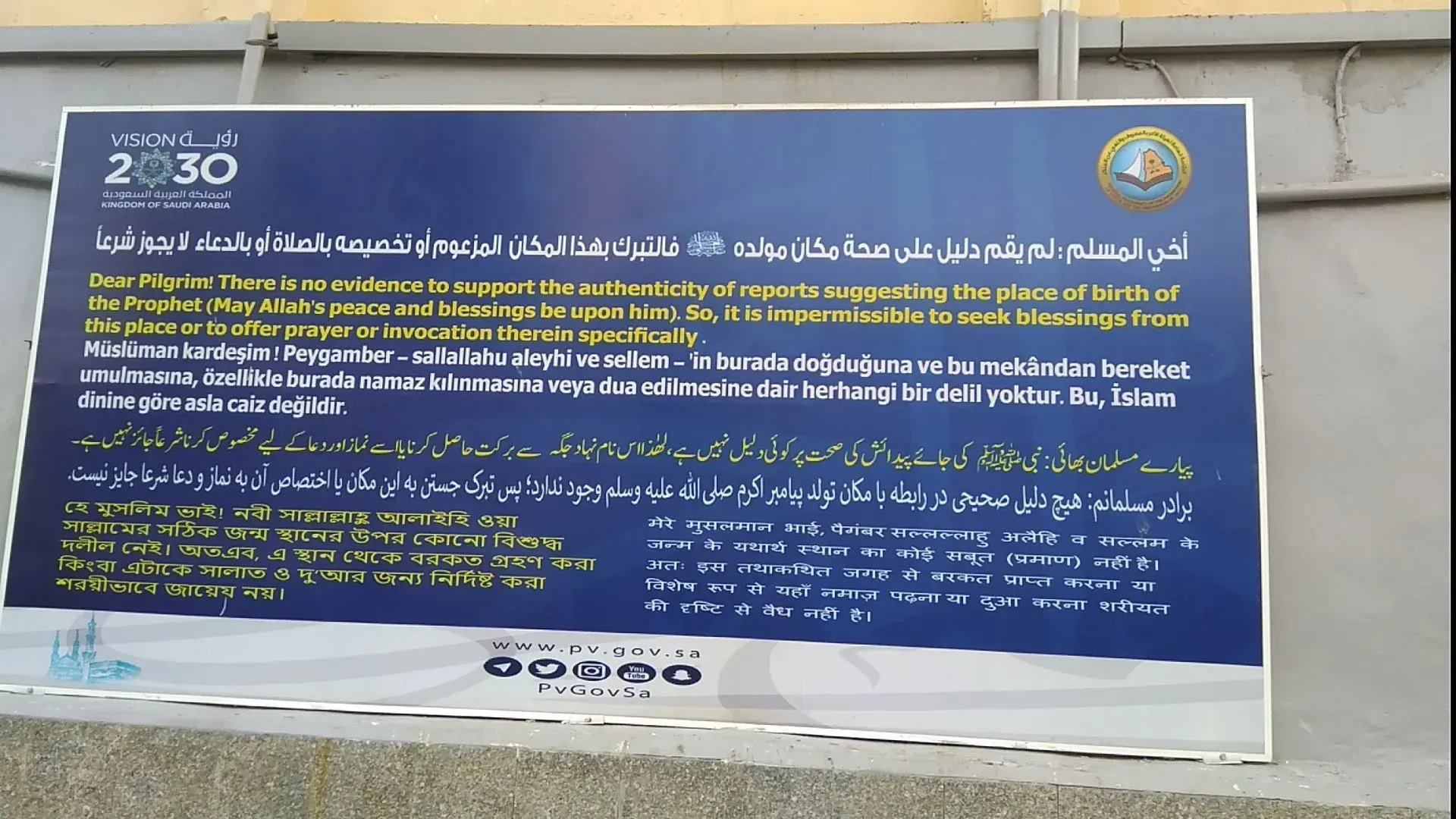
The standard-sized notice boards were replaced by larger, more impactful boards
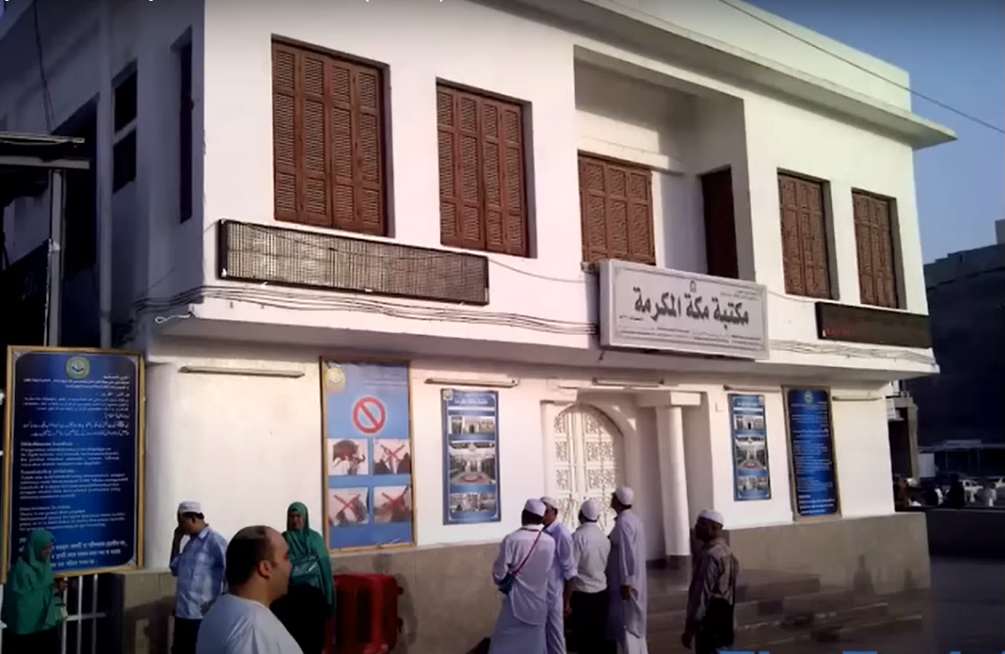
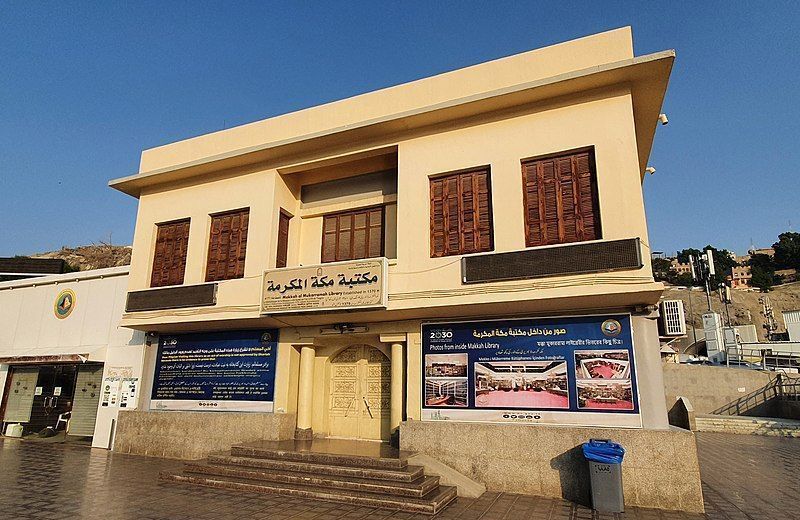
Two signs have been placed on the roof, facing right and left, declaring that this is the mm library, as opposed to the Birthplace..
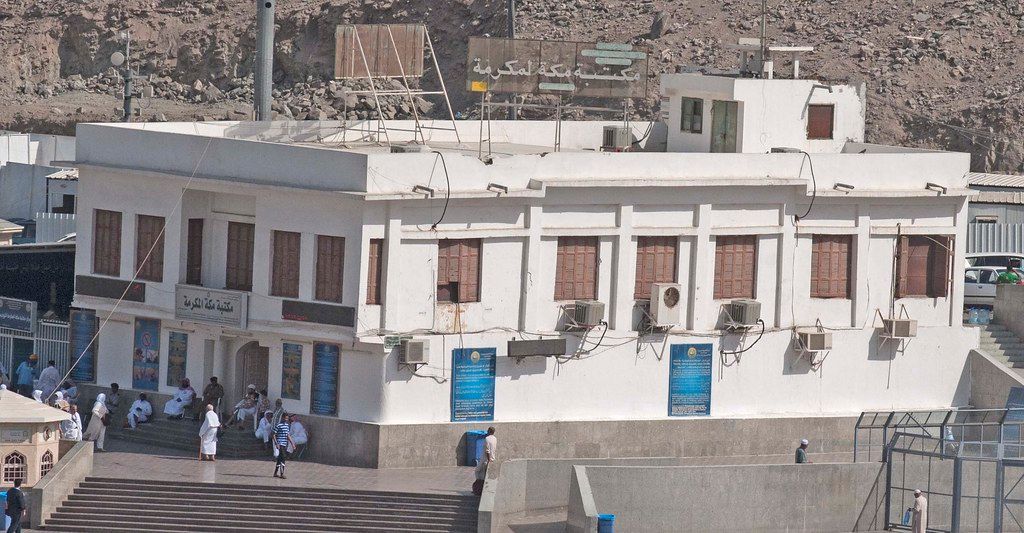
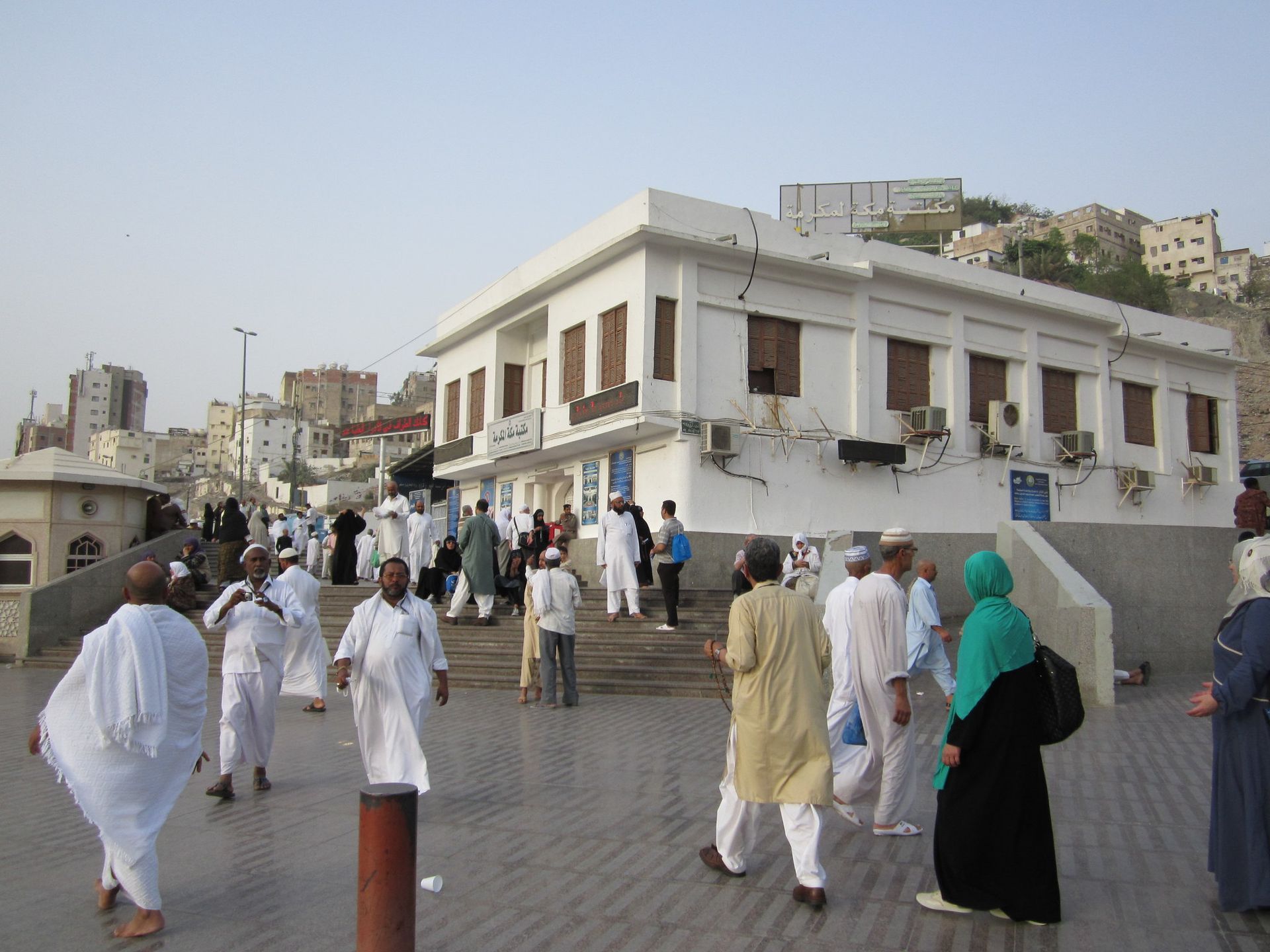
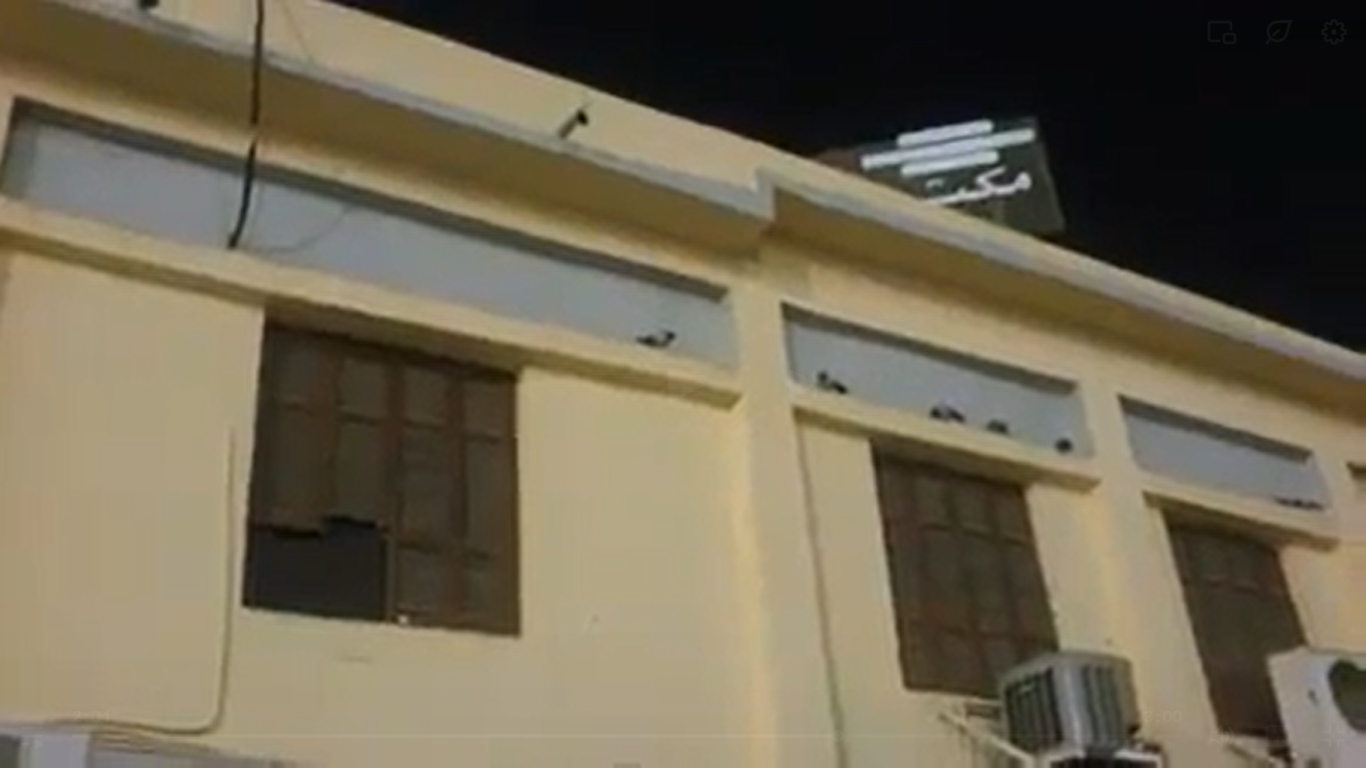
With the combination of glaring neon [[LED ] signs and brightly coloured notice boards, the Birthplace began to look more like a road-side fast food outlet, rather than a religious site. No other historic site in the Kingdom has been subjected such derogatory signage.

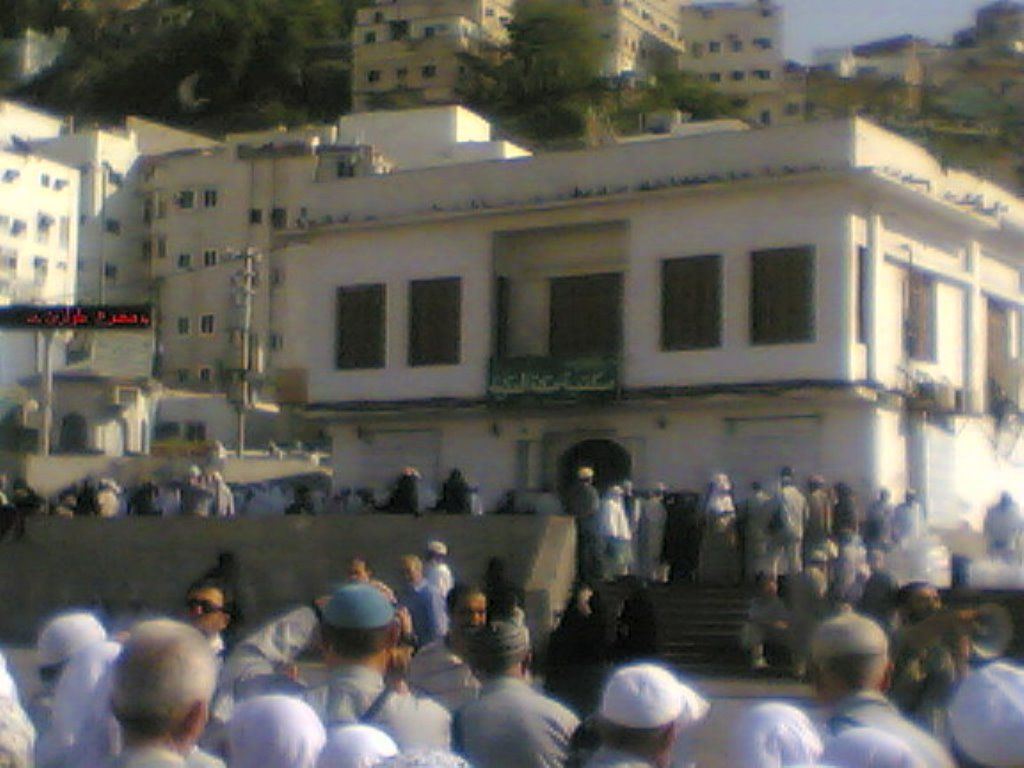
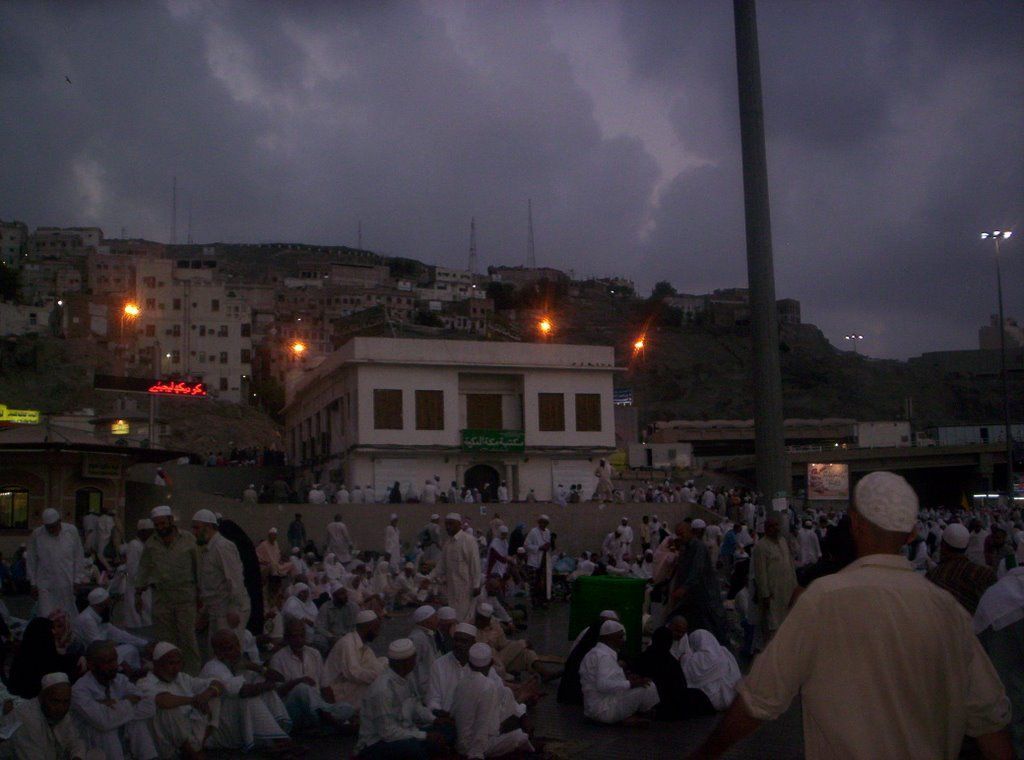
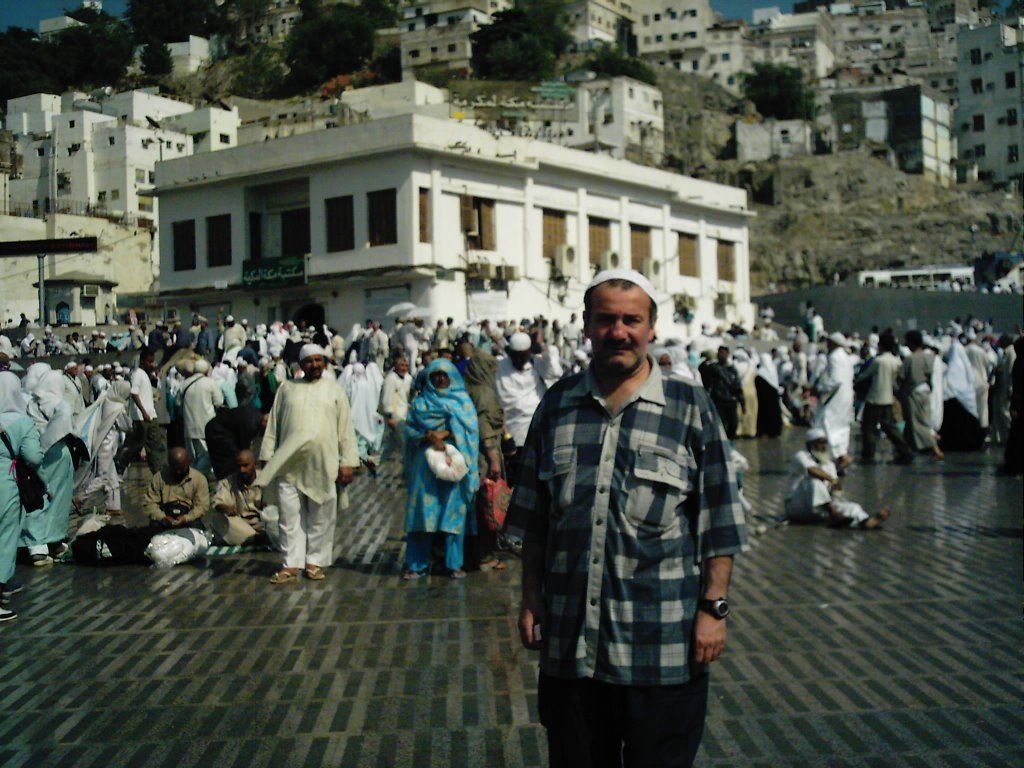
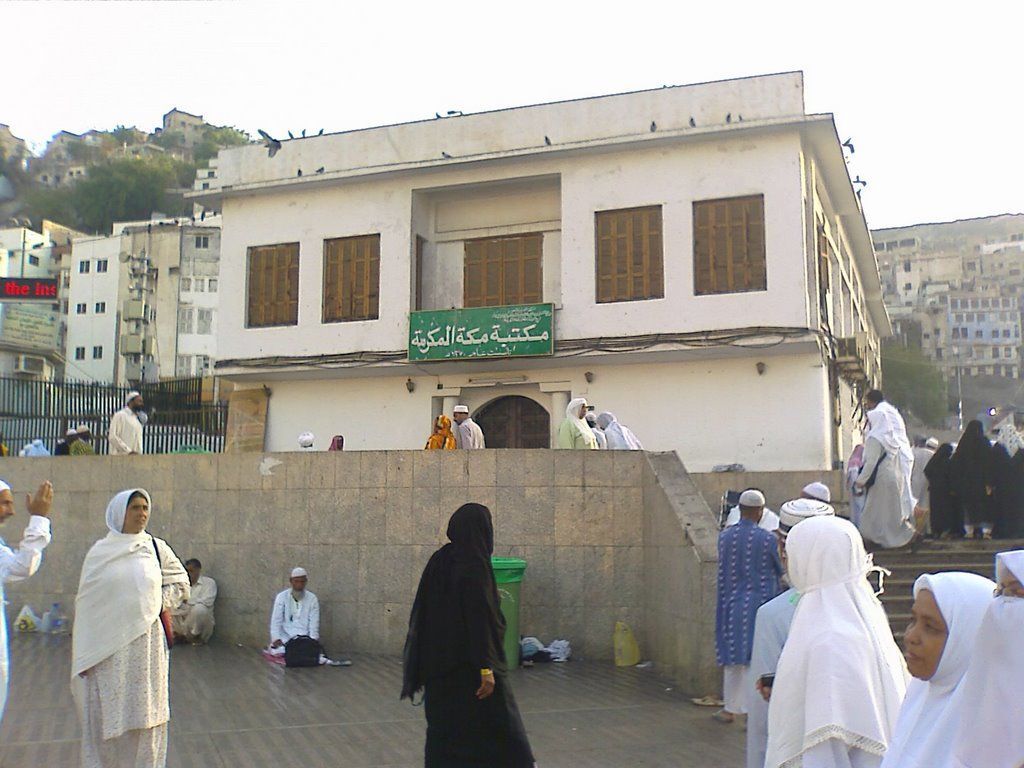
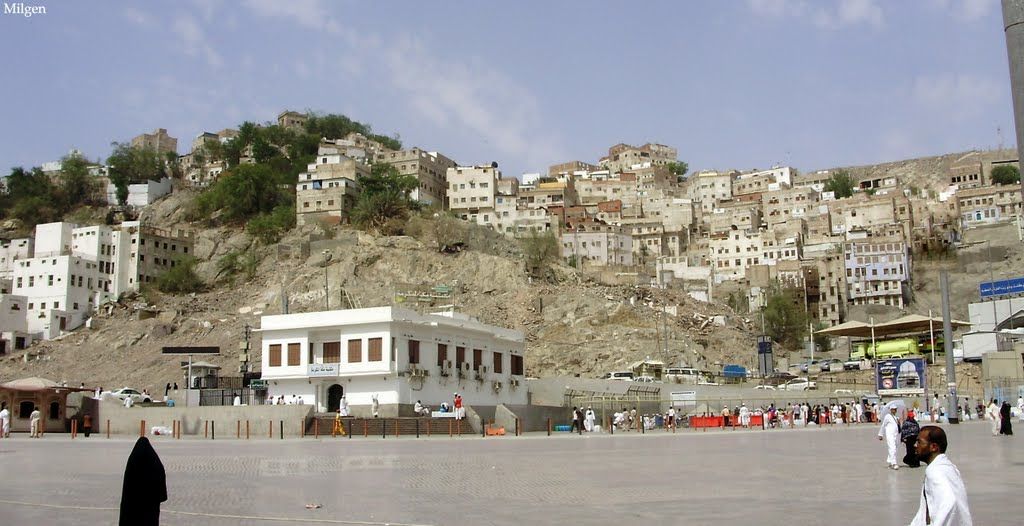
New Paragraph
This is paragraph text. Click it or hit the Manage Text button to change the font, color, size, format, and more. To set up site-wide paragraph and title styles, go to Site Theme.
https://www.arabnews.com/node/2432616/saudi-arabia
December 27, 2023
Islamic Ministry exhibition draws 50k visitors in Morocco
- Visitors were briefed on the common pavilions and digital applications between Saudi Arabia and Morocco
Riyadh: The Jusoor (Bridges) Exhibition, organized by the Ministry of Islamic Affairs, Dawah and Guidance in collaboration with the Moroccan Ministry of Awqaf and Islamic Affairs at the Hassan II Mosque in Casablanca, has attracted more than 50,000 visitors since launching on Dec. 13.
Visitors were briefed on the common pavilions and digital applications between Saudi Arabia and Morocco, such as the King Fahd Complex for the Printing of the Holy Qur’an, the VR technology pavilion that enabled virtual visits to Grand Mosque and the Prophet’s Mosque, and a virtual 3D Hajj and Umrah application.
Through the app, users can immerse themselves in an augmented reality experience while learning the ritual steps involved in performing Hajj and Umrah. A high-quality realistic modeling system is used by the app through phones, and its services are interactive and require no internet connection.
The app has received praise for its content and technical capabilities, as well as for providing pilgrims with valuable information related to Hajj and Umrah.
Rare Islamic manuscripts and literature are also on display, as well as photos and documentaries about Makkah and Madinah, and images of historic mosques.
Visitors toured the exhibition’s film hall, in which documentaries are shown about the construction stages of the Grand Mosque in Makkah, time science in Morocco, the Moroccan mosque’s architecture and tiles, an introduction to the Mohammed VI platform for the Prophet’s Hadith, and a written Qur’an display by 73,000 women who took part in a literacy program.
The Jusoor Exhibition opens daily from 10 a.m. to 9 p.m. and will continue until Dec. 31.
Last month, the Saudi ministry concluded the Jusoor Exhibition at Skanderbeg Square in Tirana, Albania. The event ran for 13 days and attracted more than 70,000 visitors. About 10,000 copies of the Holy Qur’an were distributed to visitors, along with Albanian and Macedonian language translations.
SEE PHOTO BELOW:
SO IT MAYBE THEY'VE DONE OTHER EXHIBITIONS BEFORE ABOVE ON IN 2023
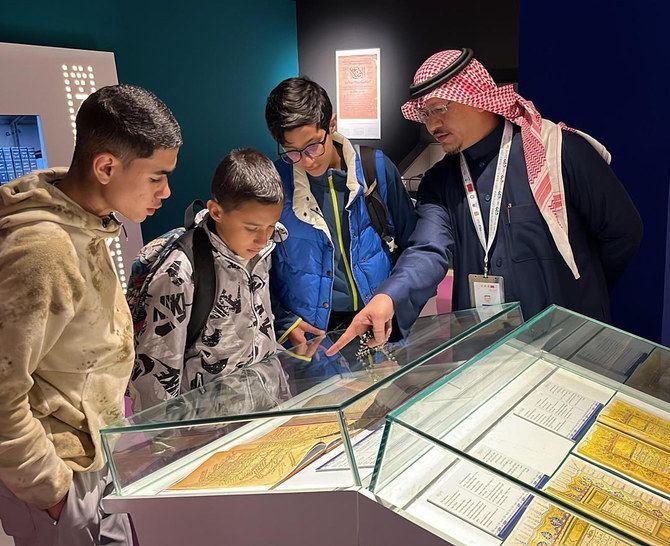
In 2024, a scurry of activity was noted in ad around the BP. After almost 15 years of derogatory led signage around the Bp, the 5 led signage was removed in 2024. In addition, some of the 70 years old doors were changed or painted. Acess was granted to a few officials. No explanation was given for these alterations at the time.
However, these reason for these minor works became apparent in May the exhibition held in May 2025, in which the rare manucripts were contained within the BP, were used to
ot was clear in the planning phase of the exhibition, that the BP would be a major focal point of the exhibition, and contents of the led signs and the neglected interior would reflect mgatively on the curators of the BP.-- oe whilst the mauscripts were being reserved the building they were in, was being neglected.
https://www.alriyadh.com/2132688
May 19, 2025
Makkah Library attracts attention through its rich heritage
The Ministry of Islamic Affairs, Call and Guidance showcased a treasure trove of rare Islamic manuscripts and publications, embodying the Kingdom's cultural, historical, and scientific depth, through its Makkah Library pavilion. This is part of its active participation in the second Bridges Exhibition in the Kingdom of Morocco and the seventh globally. The exhibition is being organized by the Ministry in cooperation with the Moroccan Ministry of Endowments and Islamic Affairs, and will run from May 10-19, 2024. [[2025]]
The pavilion featured a collection of rare manuscripts and Islamic works that represented significant milestones in the history of Islamic law and linguistics. The most prominent of these included a copy of the Holy Qur’an dated 1255 AH, a copy of a book on the principles of jurisprudence dating back to 726 AH, and a copy of the book “Al-Adhkar” dated 786 AH, in addition to a collection of valuable books on Islamic interpretation and scientific history.
Visitors expressed their admiration for the rare manuscripts and the Kingdom's distinguished scientific efforts in preserving this intellectual heritage. They praised the Ministry's diligent efforts in documenting and preserving these Islamic treasures, making them available to contemporary generations in a manner that preserves their authenticity and highlights their scientific and historical value.
The Makkah Library is one of the oldest Islamic libraries, having been established in 1370 AH. It is distinguished by its diverse collection of rare manuscripts and publications, which serve researchers and students of knowledge.
The Ministry's participation in the "Bridges" exhibition affirms its significant role in preserving religious and historical heritage, by highlighting Islamic and historical heritage and consolidating the Kingdom's position as a center of scientific and cultural influence in the Islamic world.
-------------
https://www.arabnews.com/node/2601089/saudi-arabia
17 May 2025
KSA highlights Islamic heritage in Morocco
RIYADH: The Ministry of Islamic Affairs showcased a treasure trove of rare Islamic manuscripts and publications at the Makkah Library pavilion in Morocco, reflecting Saudi Arabia’s cultural, historical, and scientific depth.
This was part of the ministry’s second Jusoor exhibition in Marrakech and the seventh globally, the Saudi Press Agency reported.
Organized in cooperation with the Moroccan Ministry of Endowments and Islamic Affairs, the exhibition began on May 10 and runs until May 19.
The pavilion features rare manuscripts and Islamic works marking key milestones in Islamic law and linguistics.
Notable items include a copy of the Holy Qur’an dated 1839 and a book on jurisprudence principles from 1326, the SPA reported.
Visitors expressed admiration for the manuscripts and Saudi Arabia’s distinguished scholarly efforts to preserve this intellectual heritage.
They praised the ministry’s commitment to documenting and preserving these treasures, making them accessible to modern generations while maintaining their authenticity and highlighting their scientific and historical value.
Meanwhile, the Kingdom’s technology pavilion has drawn visitors interested in technology and Dawah. It showcases the ministry’s use of modern tools to serve Islam and promote Dawah with a moderate and balanced approach.
The pavilion highlights key digital platforms and applications, including artificial intelligence-powered technologies, interactive reality, and smart solutions that expand global access to Qur’an and Dawah content tailored to diverse communities.
The King Fahd Glorious Qur’an Printing Complex in Madinah is also participating, underscoring the Kingdom’s efforts in Qur’an dissemination.
Its pavilion offers a comprehensive display of the complex’s publications in various sizes and editions, the SPA added.
It also presents approved translations of the Qur’an’s meanings in more than 78 languages, along with explanations of the rigorous review process and advanced printing technologies that set the complex apart.
-------------------
https://menamagazine.com/2025/05/20/makkah-library-draws-attention-to-rich-saudi-heritage-at-morocco-exhibition/
Makkah Library Draws Attention to Rich Saudi Heritage at Morocco Exhibition
May 20, 2025
The Saudi Ministry of Islamic Affairs, Dawah and Guidance showcased a treasure trove of rare Islamic manuscripts and publications at the Makkah Library pavilion, embodying the Kingdom’s cultural, historical, and scientific depth, the Saudi Press Agency reported.
This is part of its participation in the second ‘Jusoor’ Exhibition in Morocco and the seventh globally, it said. The exhibition, organized by the ministry in cooperation with the Moroccan Ministry of Endowments and Islamic Affairs, started on May 10 and will last until May 19.
The pavilion featured a collection of rare manuscripts and Islamic works that represented illuminating milestones in the history of Islamic law and linguistics. Most notable among these were a copy of the Holy Qur’an dated 1255 AH, a copy of a book on the principles of jurisprudence dating back to 726 AH.
Visitors also expressed their admiration for the rare manuscripts and Saudi Arabia’s distinguished scholarly efforts to preserve this intellectual heritage.
They praised the ministry’s diligent efforts in documenting and preserving these Islamic treasures and making them available to contemporary generations in a manner that preserves their authenticity and highlights their scientific and historical value, SPA added.
--------------
https://www.maroc.ma/en/news/morocco-saudi-arabia-marrakech-hosts-2nd-edition-joussour-exhibition
Morocco-Saudi Arabia: Marrakech Hosts 2nd Edition of 'Joussour' Exhibition
12 May 2025
The opening of the second edition of the "Joussour" exhibition, which aims to shed light on the historical relations between the Kingdom of Morocco and the Kingdom of Saudi Arabia and to showcase rare Islamic manuscripts and artworks, took place on Saturday at the Mohammed VI Administrative and Cultural Complex in Marrakech.
Organized by the Ministry of Islamic Affairs, Dawah and Guidance of the Kingdom of Saudi Arabia in partnership with Morocco’s Ministry of Endowments and Islamic Affairs, this exhibition—running until May 20—aims to promote religious dialogue between Morocco and Saudi Arabia and to spread the values of moderation and balance.
On this occasion, an official delegation composed of the Saudi Minister of Islamic Affairs, Dawah and Guidance, Sheikh Abdullatif bin Abdulaziz bin Abdulrahman Al Al-Sheikh, the Moroccan Minister of Endowments and Islamic Affairs, Ahmed Toufiq, the Saudi Ambassador to Rabat, Sami bin Abdullah Al-Saleh, and the Wali of the Marrakech-Safi region and Governor of the Marrakech Prefecture, Farid Chourak, visited the various sections of the exhibition, which highlight the religious and cultural aspects of both countries.
These include areas dedicated to rare manuscripts and Islamic works, historical mosques, Hajj rituals, as well as Quran recitation and Arabic calligraphy competitions.
The exhibition also features interactive experiences through various technical and cultural areas, along with dedicated spaces for children.
Additional sections are devoted to Saudi and Moroccan hospitality, the depth of bilateral relations under the theme "Rooted Relations," and welcoming visitors.
In a press statement, Saudi Minister Sheikh Abdullatif bin Abdulaziz bin Abdulrahman Al Al-Sheikh noted that the exhibition highlights a range of activities in service of Islam and Muslims, as well as the efforts of the leaders of both nations to uphold true Islamic values, praising the strength of relations between the two countries and emphasizing their deep foundations in religion, shared traditions and customs, and mutual affection between their peoples.
Sheikh Al Al-Sheikh also highlighted the humanitarian initiatives undertaken by both countries, which reflect the greatness and civilization of Islam.
For his part, Morocco's Minister Ahmed Toufiq noted that the visit of the Saudi minister to Morocco reaffirms the depth of fraternal ties between the two peoples, under the leadership of His Majesty King Mohammed VI, Commander of the Faithful, and the Custodian of the Two Holy Mosques, King Salman bin Abdulaziz Al Saud, as well as the dynamic cooperation between the two kingdoms at all levels.
Toufiq also stressed that this exhibition, which documents key milestones in Moroccan-Saudi cooperation, invites the public to appreciate the shared memory between the two peoples and to reflect on how to enhance this historical heritage through deeper knowledge and greater openness to contemporary contexts.
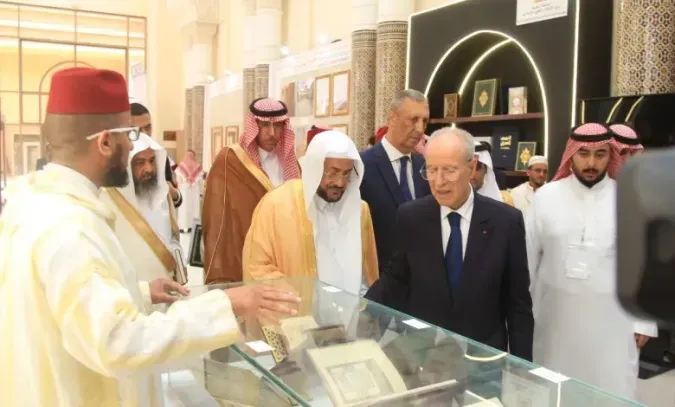
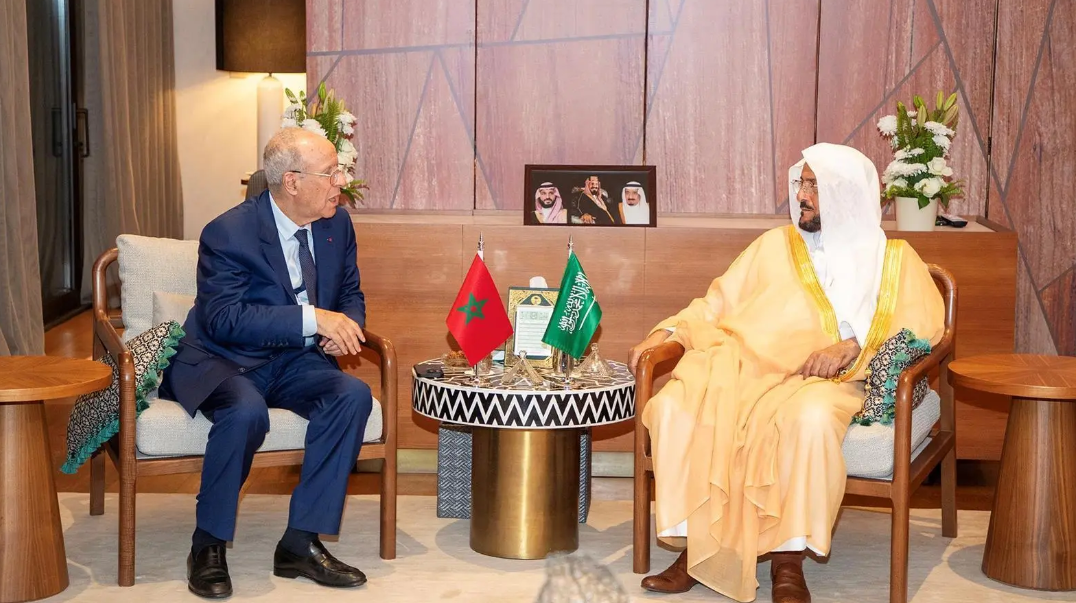
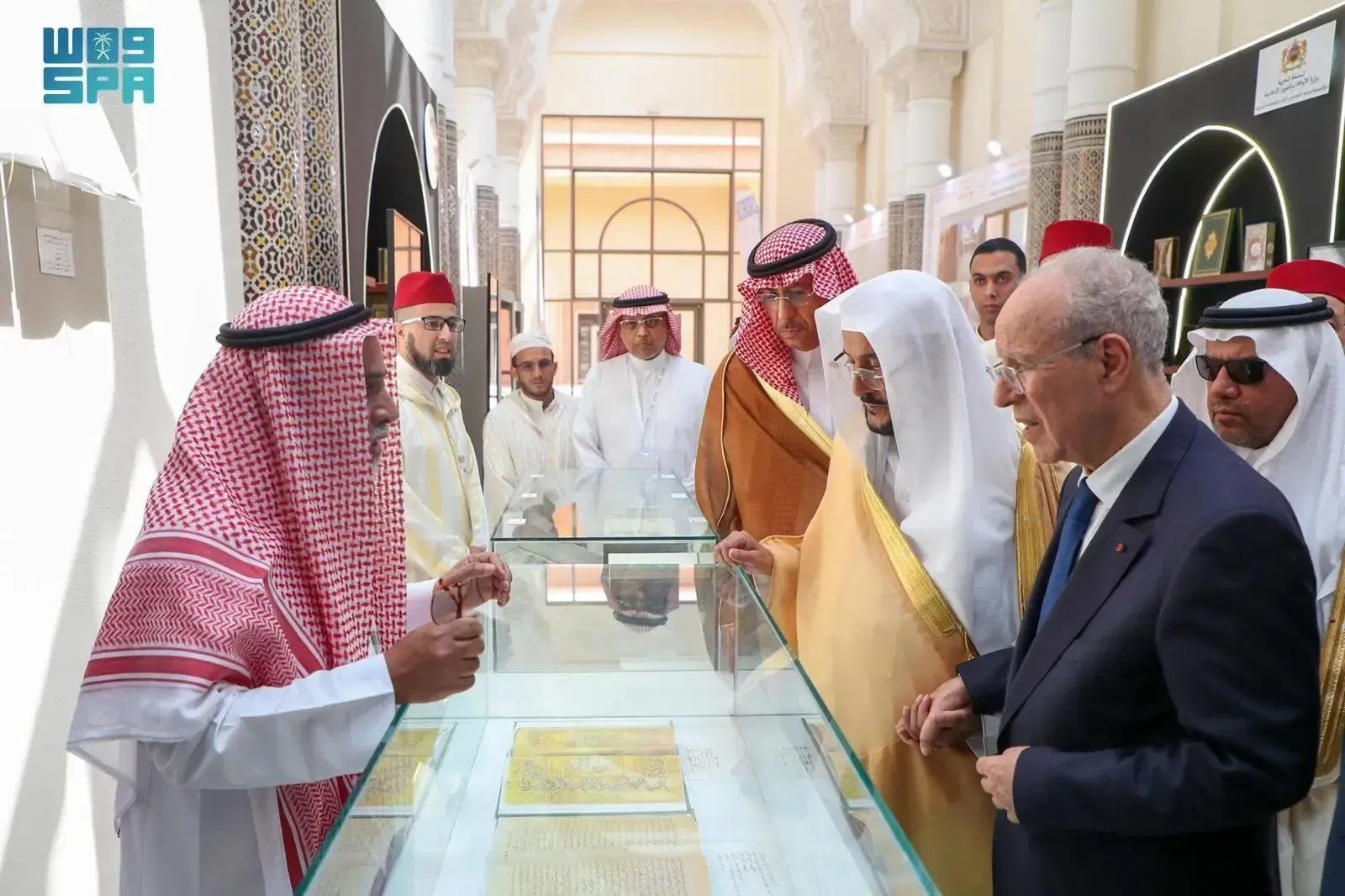
https://www.moia.gov.sa/MediaCenter/News/Pages/09111446_2.aspx
05/07/2025 7 may
The Ministry of Islamic Affairs showcases a rich intellectual heritage through the Makkah Library pavilion at the Bridges Exhibition in Kosovo
The sixth edition of the Bridges Exhibition, organized by the Ministry of Islamic Affairs, Call and Guidance in the Kosovar capital, Pristina, witnessed a remarkable turnout at the Makkah Library pavilion, which showcased a collection of rare historical Islamic manuscripts. The exhibition was one of the most prominent attractions, attracting visitors from a wide range of backgrounds.
Visitors expressed their great admiration for the pavilion’s heritage rarities that embody the depth of Islamic civilization, especially the Qurans and manuscripts dating back centuries, including a handwritten Quran dating back to 1247 AH, and another book from 1270 AH, in addition to the book “Ahkam Al-Ahkam” by Ibn Daqiq Al-Eid, copied in 793 AH, and the book “Al-Fath Al-Mubeen” by Ibn Hajar Al-Makki, copied in 974 AH.
Visitors learned about the history and value of these manuscripts through detailed explanations provided by specialists, adding a cultural and educational dimension to their experience inside the pavilion and enhancing their awareness of the importance of preserving Islamic heritage.
It's worth noting that the Makkah Library, which houses these treasures of knowledge, was established in 1370 AH during the reign of the founding King Abdulaziz Al Saud (may God have mercy on him). It is considered one of the oldest Islamic libraries specializing in rare manuscripts and publications. This pavilion is part of the "Bridges" exhibition, part of the Ministry of Islamic Affairs' efforts to strengthen cultural and religious ties between the Kingdom and Muslim communities by highlighting Islamic and historical heritage through its participation in international forums.
SEE PHOTO BELOW LEFT
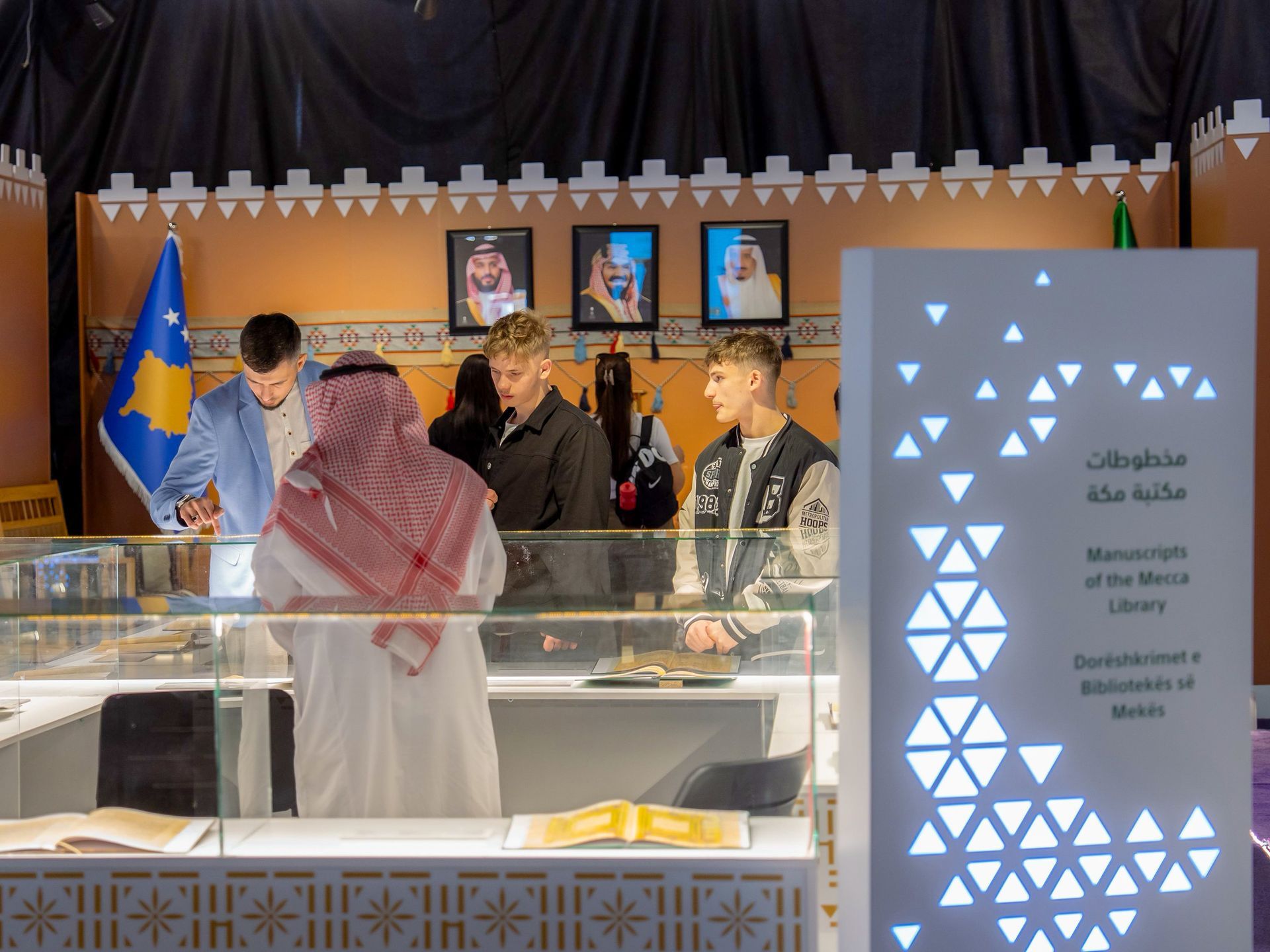
https://www.mnbr.news/346146.html
01/05/2023
Makkah Library showcases historical manuscripts at the 37th Tunis International Book Fair
The Ministry of Islamic Affairs, Call and Guidance, represented by the Makkah Library, showcased a number of historical manuscripts at the 37th Tunis International Book Fair, held in the capital, Tunis, from April 28 to May 7. The exhibition was held at the ministry's booth within the Kingdom's pavilion at the fair.
Among the most important manuscripts on display are the Holy Qur’an, written in 1270 AH; the Shatibiyyah manuscript, "Hirz al-Amani," written in 724 AH; the Adhkar manuscript by Imam al-Nawawi, written in 786 AH; the Ahkam al-Ahkam manuscript by Ibn Daqiq al-Eid, written in 793 AH; the At-Tawshih manuscript on al-Jami’ al-Sahih by Imam al-Suyuti, written in 995 AH; the Fath al-Mubeen manuscript by Ibn Hajar al-Haytami al-Makki, written in 975 AH; and the Nahj al-Mardhiyyah Sharh al-Alfiyyah by al-Suyuti, written in 884 AH. Other scientific and historical manuscripts are also on display.

New Paragraph
No Access
Uptil 2008, pilgrims were frequently permitted to enter the Birthplace and visit selected rooms. These were subject to the ews's rules and under the strict supervision of staff.
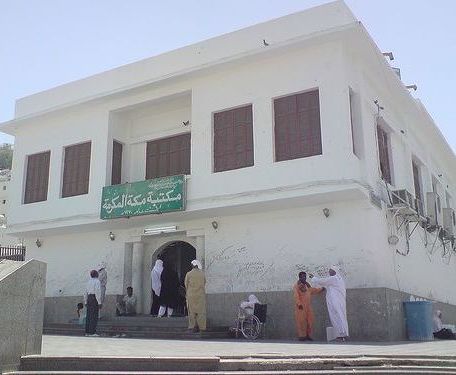
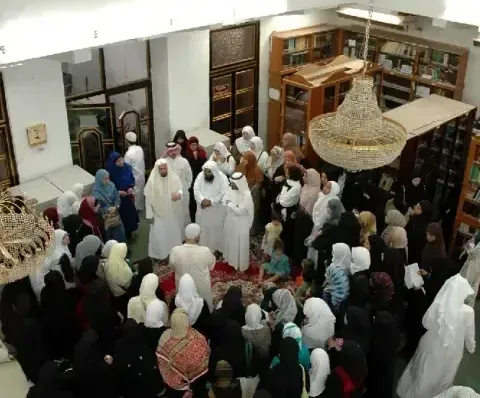
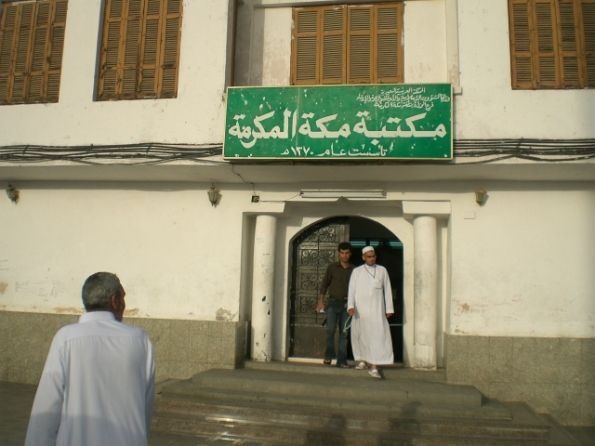
ABOVE VIDEO FROM:
https://www.dailymotion.com/video/x2ujz5m
https://www.dailymotion.com/video/x2ujz5m
if above dont work try bottom 2:
https://www.dailymotion.com/embed/video/x2ujz5m
https://www.dailymotion.com/embed/video/x2ujz5m
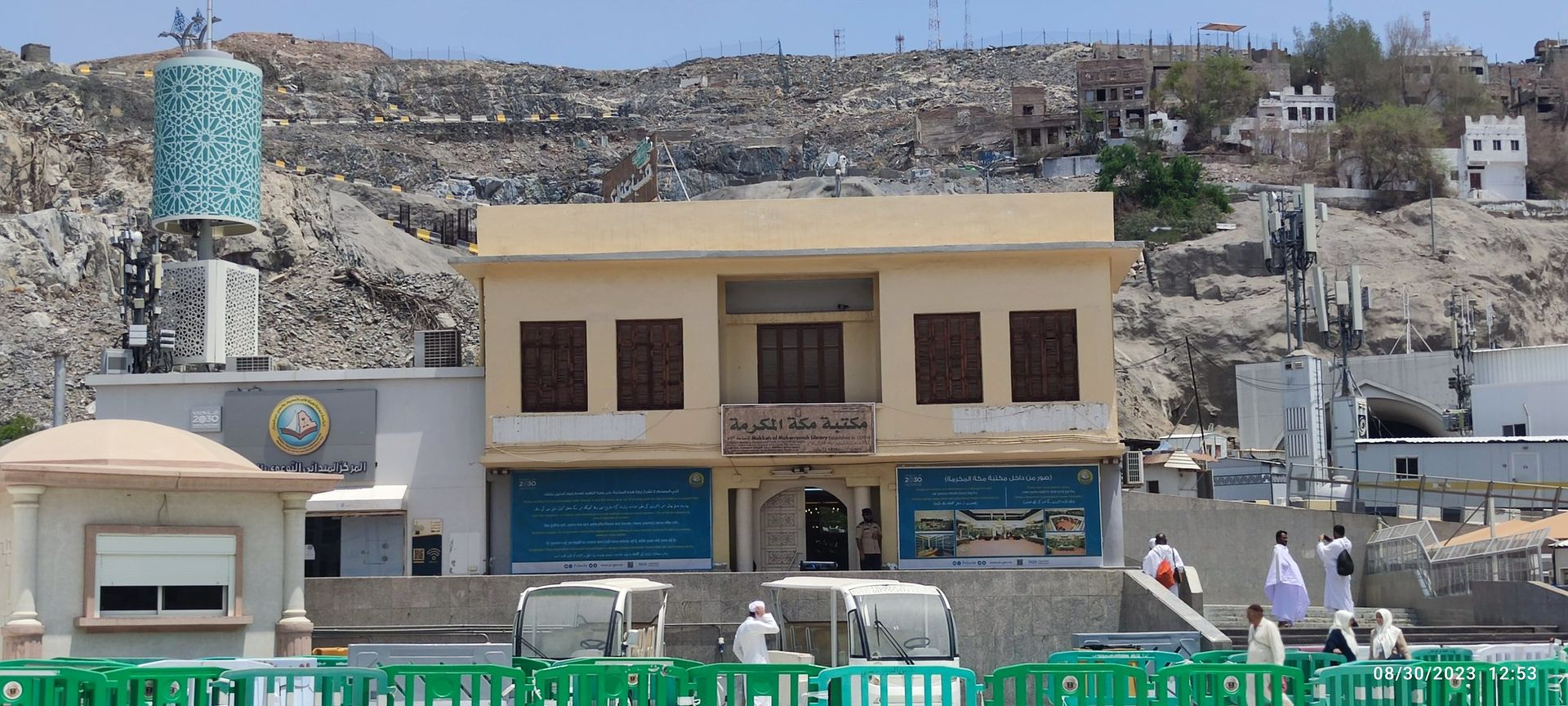
After 2008, entry into the interior of the Birthplace was reduced before being prohibited /halted altogether. Thereafter, Pilgrims were only permitted to come up the building view the outside only at close.... since DPHOTOS OF PILGRIMS STANDING OUTSIDE THE DOORS OF THE BP
Maktabat Makka al-Mukarrama ---Makkah Public Library (Mecca Public Library)
https://digitallibrary.al-furqan.com/our_publications_item/bookid/100515
Status:Institutional
Status Details:Public library (governmental)
Condition of accessOpen to all readers. MSS can be consulted within the library. Photographic copies can be made after obtaining authorization from the Ministry of Ḥaij and Endowments. The library is open throughout the week except Thursdays and Fridays.
Total number of Islamic MSS:1,200.
Description of Collection:
The library has suffered from neglect in the past. Now, under the patronage of the Ministry of Ḥajj and Endowments, it is in better condition. MSS in need of binding have been bound. However, some MSS require repair and periodic decontamination.
The MSS cover various fields: copies of the Qurʾan, recitation, tafsir, Qurʾanic sciences, Ḥadith and related sciences, jurisprudence, doctrine, Arabic language sciences, literature, history, biography and Sufism. A limited number of MSS deal with astronomy, arithmetic, medicine and geography. Most MSS were copied between the 10th and 13th centuries AH, but there are some from the 8th and 9th centuries. There is a rare collection of ornamented Qurʾans in fine calligraphic hands.
The holdings of the library include some famous private collections of Mecca which have been donated to it, such as that of Shaykh Muḥammad Majid al-Kurdi (d. 1349 AH).
Rarities include Mabariq al-anwar fi sharḥ Mashariq al-Anwar by ʿAbd al-Laṭif al-Ḥanafi (dated 832 AH) and Bahjat al-Nufus wa-Taḥliyatuha wa-bayan ma Laha wa-ma ʿalayha by ʿAbd Allah ibn Saʿd al-Andalusi (Maghribi script).
Handlist of Manuscripts in the Library of Makkah al-Mukarramah: History Section
Prepared by Muhammad Habib el-Hila
Date:1994
This catalogue describes 124 of the manuscripts held in the History section in the Library of Makkah. Most of the subjects of the catalogue revolve around the biography of the Prophet, praises of the Prophet, his birthday celebrations, the history of the Ḥijāz, lineage, ijāzāt as permissions to teach and virtues.
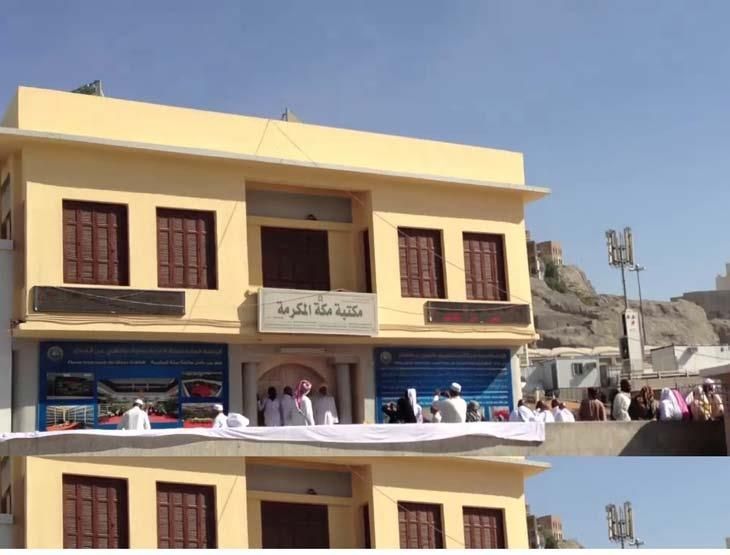
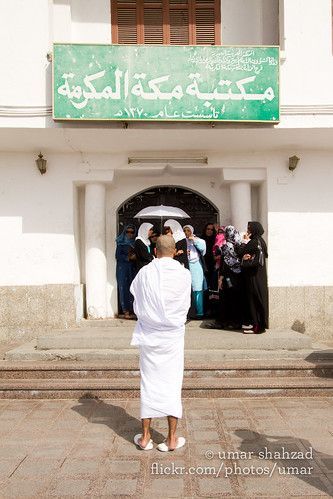
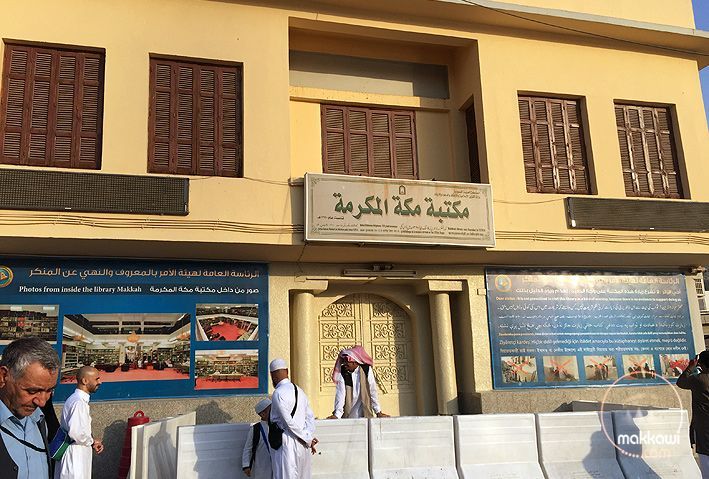
by the time, that Diriah was complete and being promoted, pilgrims were no longer even allowed to get close to the Birthplace, but view it at a distance.
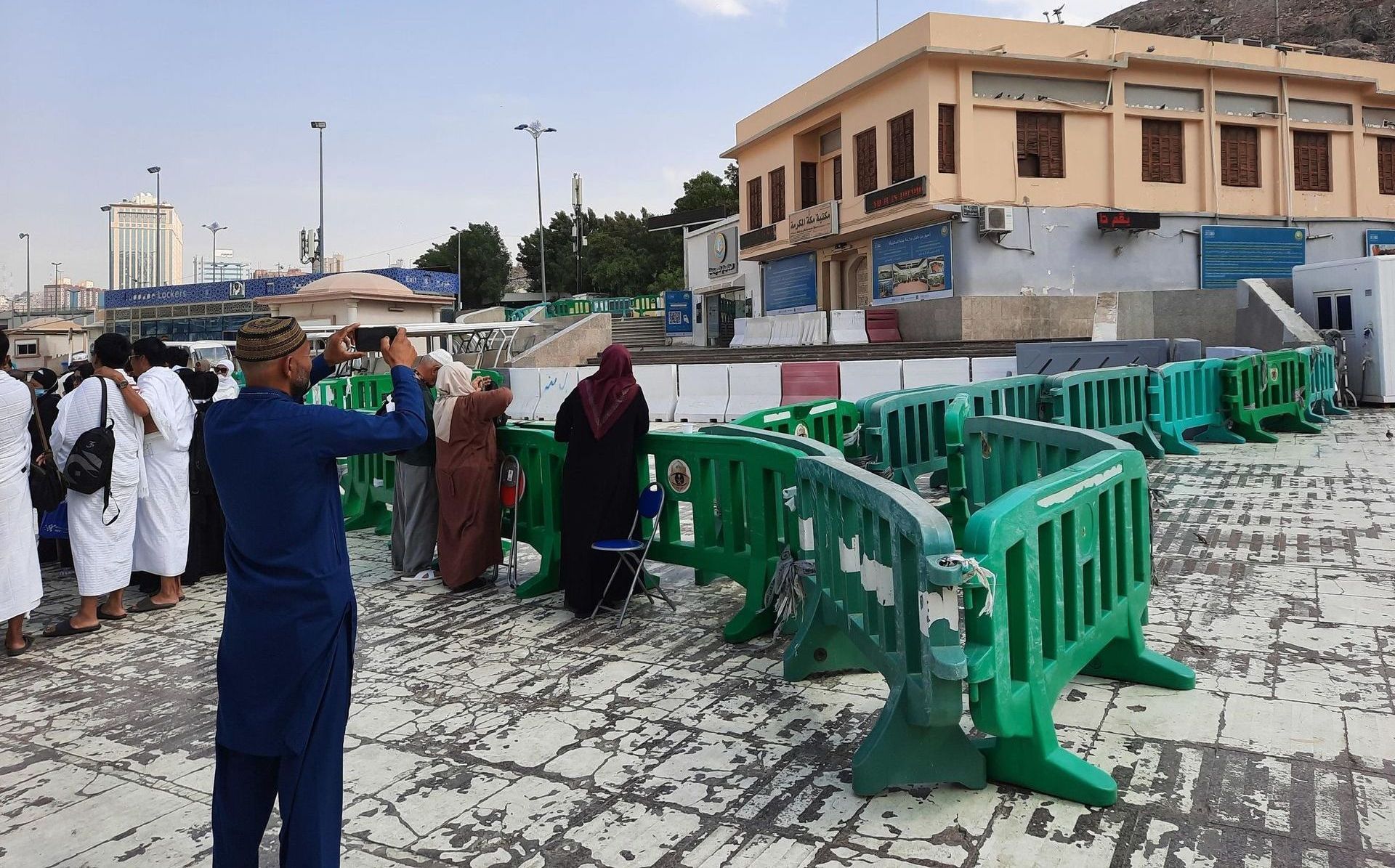
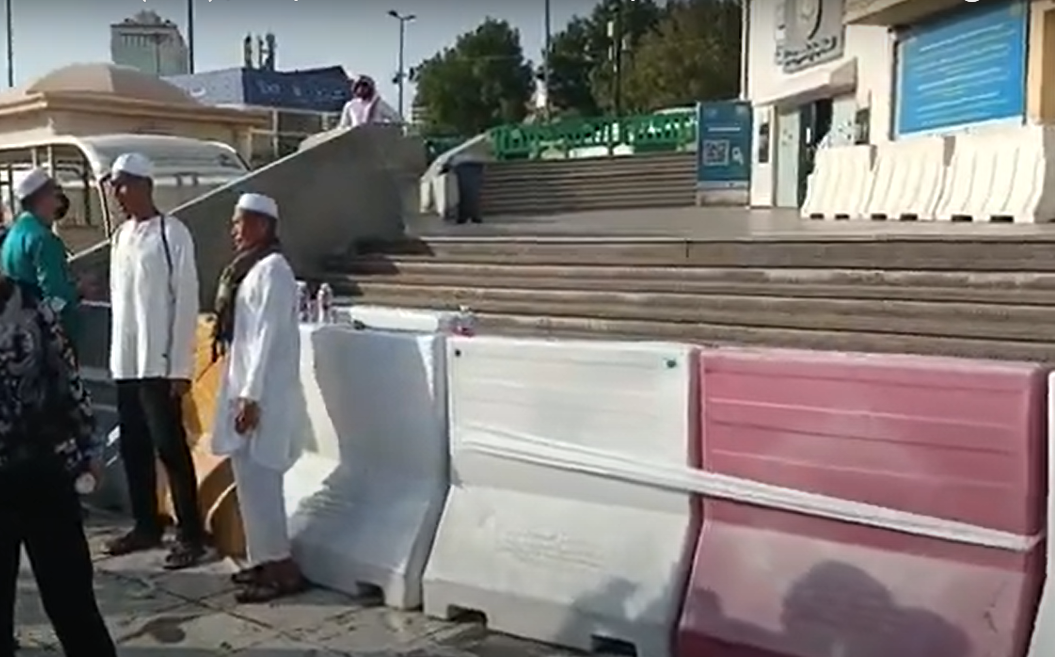
The Front
The area immediately in front of the site is used as a car park for parking vehicles which have no connection to the Birthplace site.

The Right
When looking at the Birthplace from the front, the land adjacent to the right side of the site is used as a storage yard. Since 2023, the land has been used to house a portable toilet, and various other paraphernalia unrelated to the Birthplace.
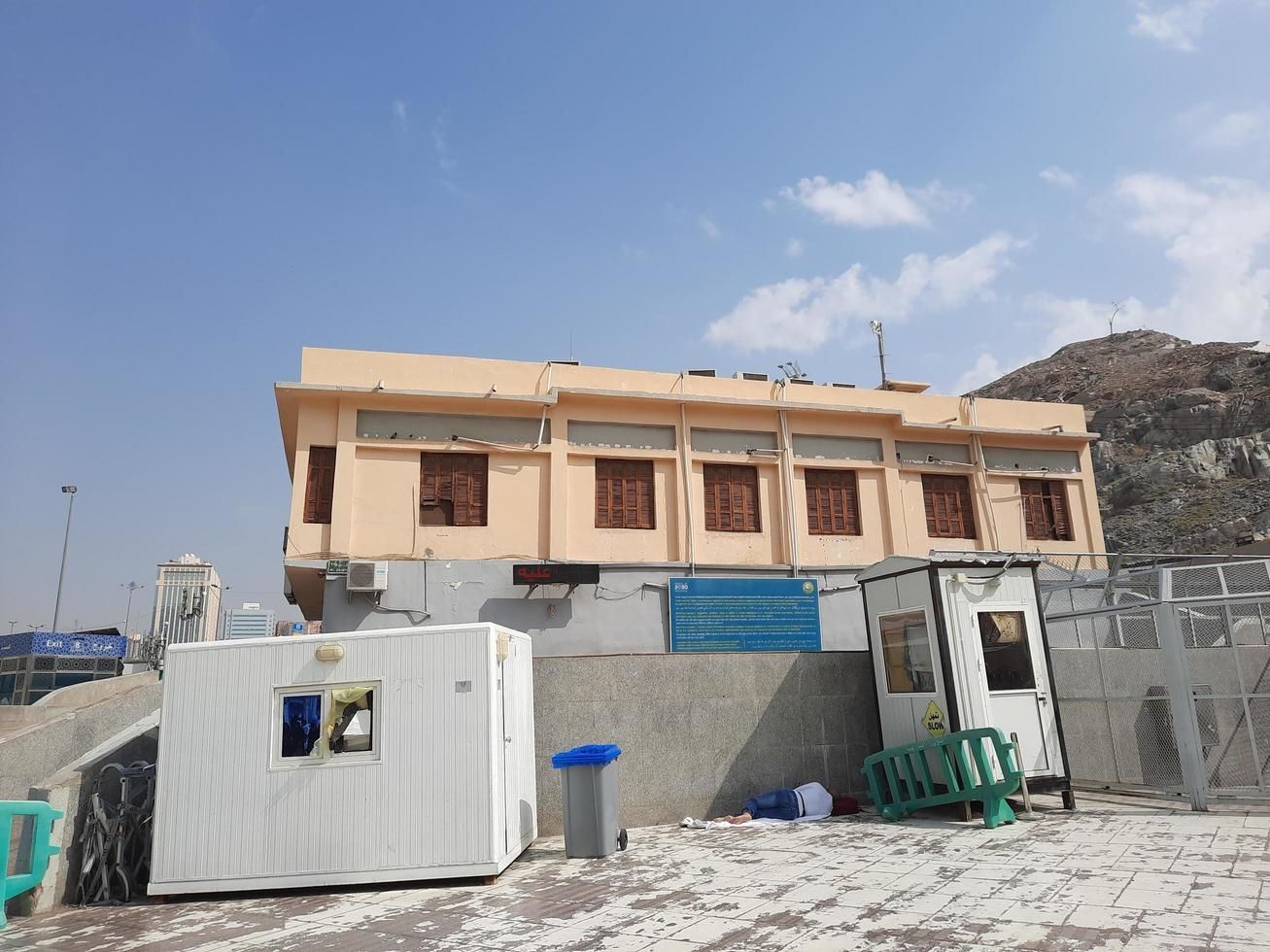
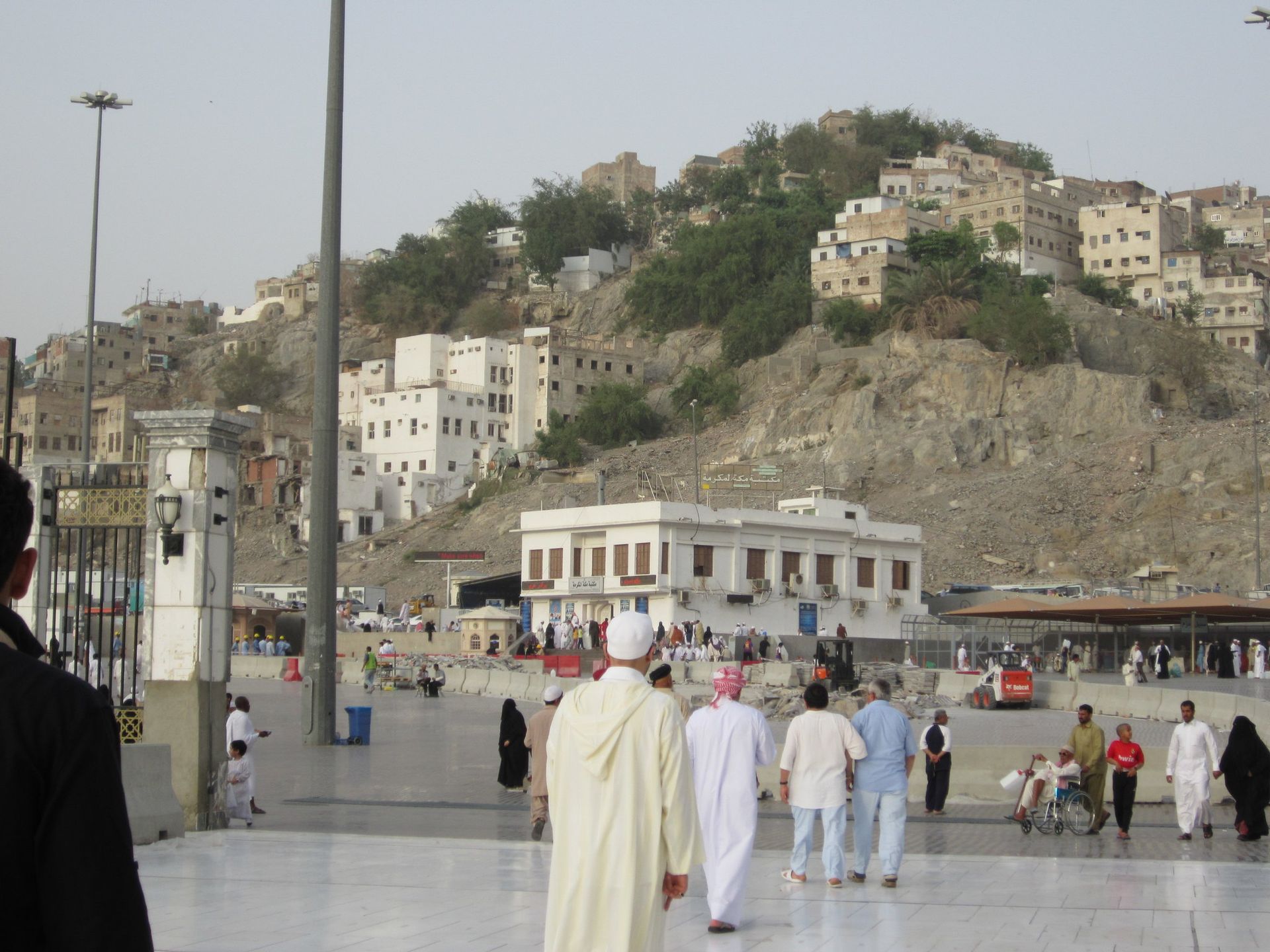
The Rear
A two-lane road is situated to the rear of the Birthplace.
The Birthplace has become a fast-food style, "road-side", heritage site. One can drive right up to the site and park their vehicle immediately behind it.
No appropriate space has been left between the Birthplace and the road - a feature which even the most insignificant residential homes, possess.
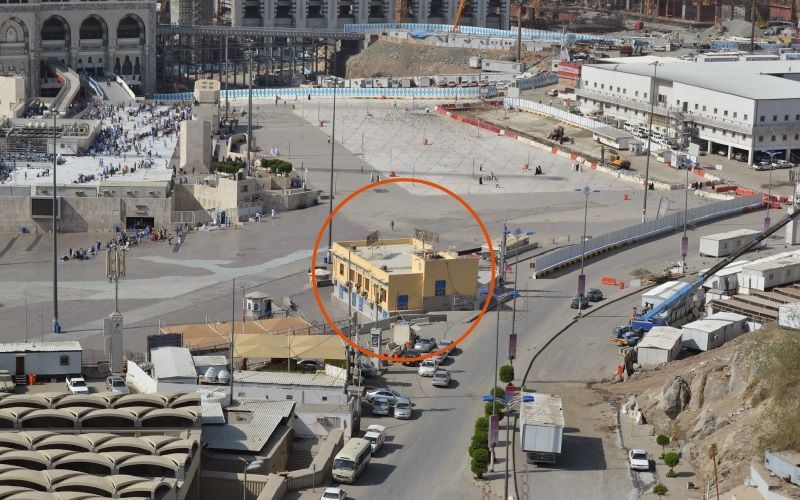
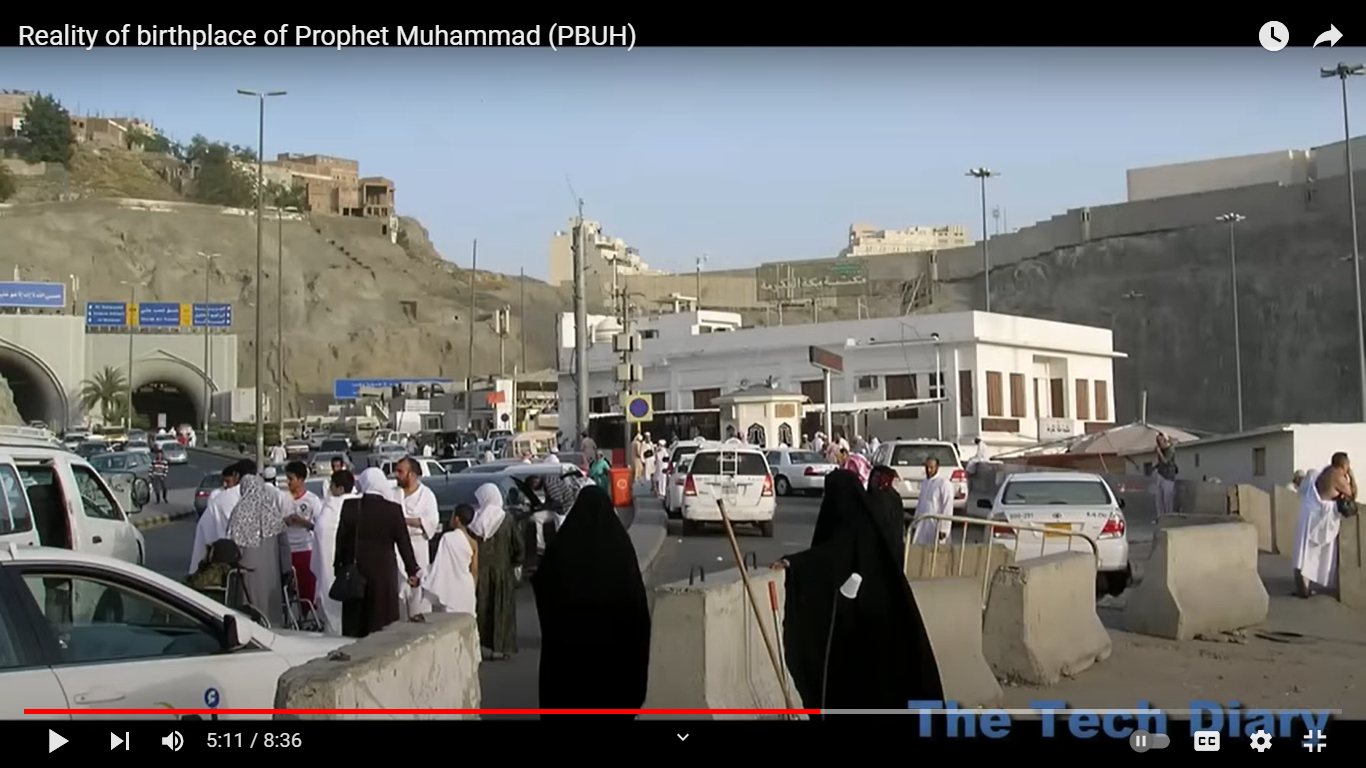
The Left
When looking at the Birthplace from the front, on the land adjacent to the left side of the site, a modern building has been constructed which adjoins the Birthplace. The building is used as an office, but one which has no connection with the Birthplace.
with all the space around the Birthplace, why pit this office right next to the site.
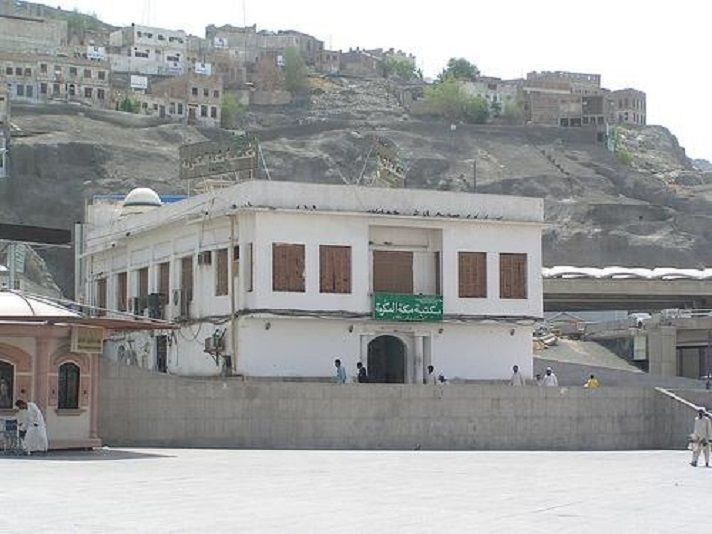
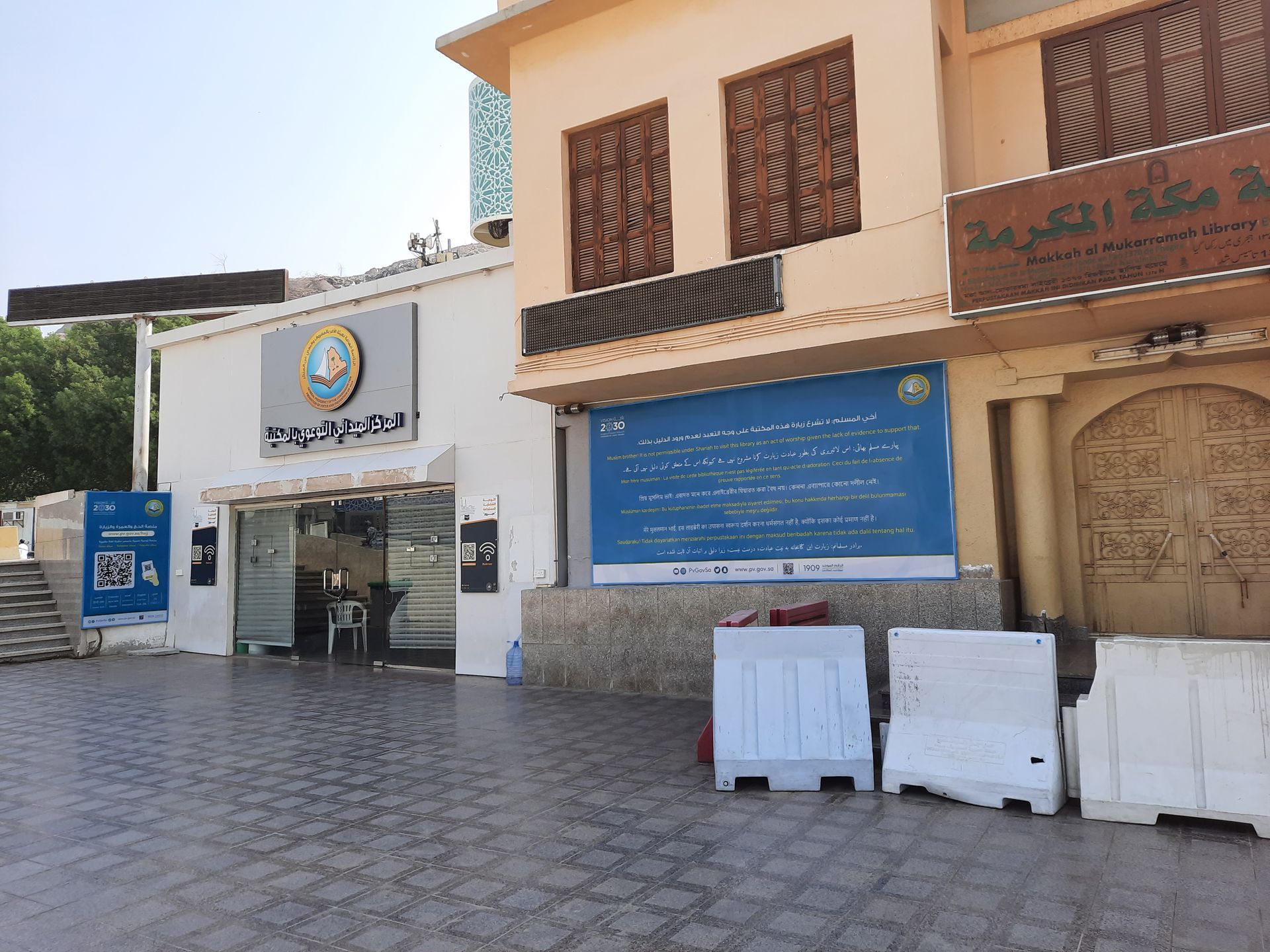
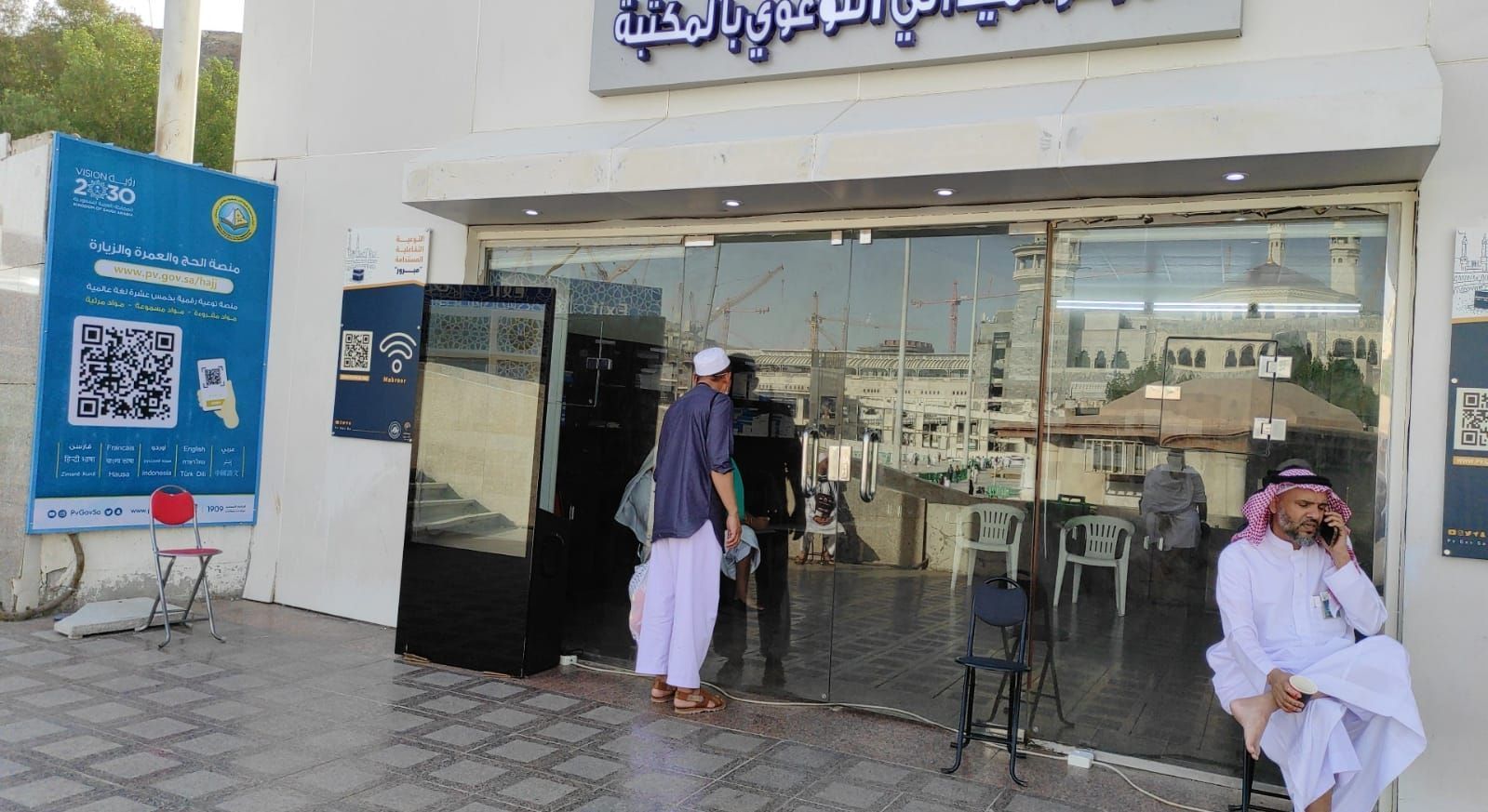
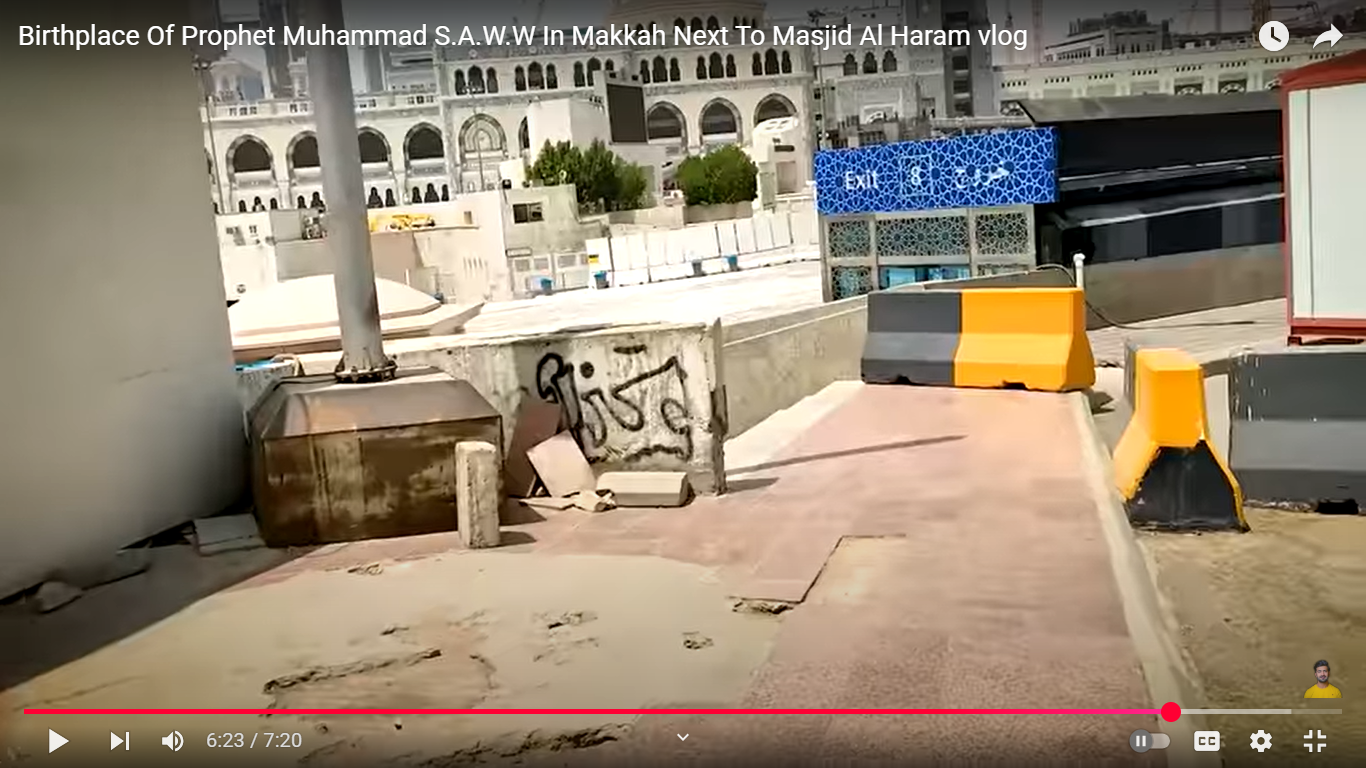
Al Masjid Al Haram Road [TT]
The initial blueprint for the third expansion of the Grand Mosque, required the destruction of the Birthplace. Under this design, the new Al Masjid Al Haram Road, was to follow its current route, which passes directly behind the Birthplace, concealed in tunnels under the expanded Mosque building.
However, the publicising of the proposals drew international criticism, particularly, from Muslim-majority countries, as well as American and European media. As a result, the planners of the expansion modified the layout of the extension to conserve the Birthplace, and bring the Mosque's eastern perimeter upto and around the Birthplace.
The planners also changed the height level of the road, so that the section which was to run by the Birthplace, would no longer be hidden in tunnels, but exposed at ground level.
Heritage specialists petitioned the authorities to ensure that any road in the vicinity of the Birthplace, be constructed either subterranean, or if a surface level road was absolutely necessary, then to follow a route sufficiently distant from the birthplace so as to display respect for the sacredness of the site, and to achieve an ambiance around the site of..... - similar to that desired by the developers of the heritage site in Diriyah. And as with Diriyah, it was feasible, both financially and logistically, to route a road in Mecca so as to avoid disturbing the environs of a significant heritage site. However, in Mecca's case the appeals were rejected.
Name Change
The entire stretch of road behind the Birthplace (The Road) is not all called the 'Al Masjid Al Haram Road'. When the road emerges from a nearby tunnel, it is called 'Al Rahmah Street', and it is only as it nears the Birthplace - approximately 90 metres away from the Birthplace - that the road's name is changed to 'Al Masjid Al Haram Road'.
It is not immediately apparent as to why, of the all the roads around the Grand Mosque - Aiyad Street, the First Ring Road, Umm Al Qura Road, King Abdul Aziz Road, and Al Rahmah Street - this particular road has been chosen to be named after the Grand Mosque. Prior to the third extension of the Mosque, which demolished hundreds of buildings to the east of the Mosque, and extended it right up to the location of the road, the location of the road has never had any connection to the mosque, as blocks containing hundreds of residential buildings, and numerous lanes, have lain between them for the past thousand years. In fact, the road which may have a greater claim to be called after the Mosque, because it is of greater service to the Mosque, would be the First Ring Road - which encircles the Grand Mosque.
Commentators have suggested that naming the road after the Grand Mosque was part of the strategy to stifle the criticism which would follow the planned destruction of the Birthplace, by insinuating, falsely, that the space taken up by the road, as well as the surrounding land had some, hitherto unknown, allegiance to the provision of ancillary services (Services) related to the Mosque, and that any such service, no matter how tenuous its link to the Mosque or how trivial the use - including the storage of abandoned equipment or the parking of buses/vehicles - had a greater claim on the land than Islam's fourth holiest site and its continued existence.
The fact that:
(i) after the outcry over the intended destruction of the Birthplace, those services were able to be swiftly relocated elsewhere, without any loss to the expansion;
and,
(ii) the planners did not utilise any of the solutions deployed in Diriyah and other parts of Mecca, such as the placement of roads, car parking, warehousing, and maintenance facilities underground, and re-routing of transport infrastructure, which would allow the Birthplace to remain, while enabling the other land uses, that the planners claimed were necessary in the area, to be installed;
demonstrates the disingenuity of the planners' case for obliterating the Birthplace.
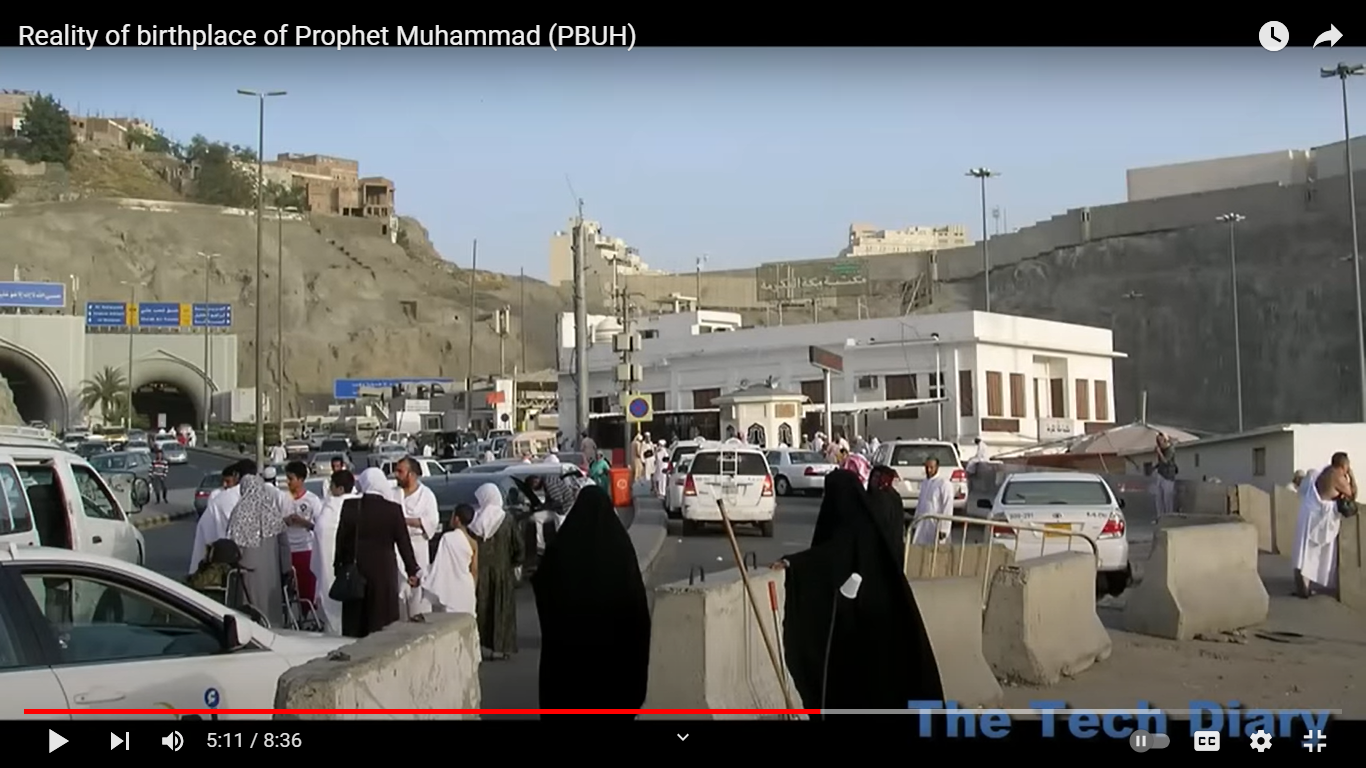
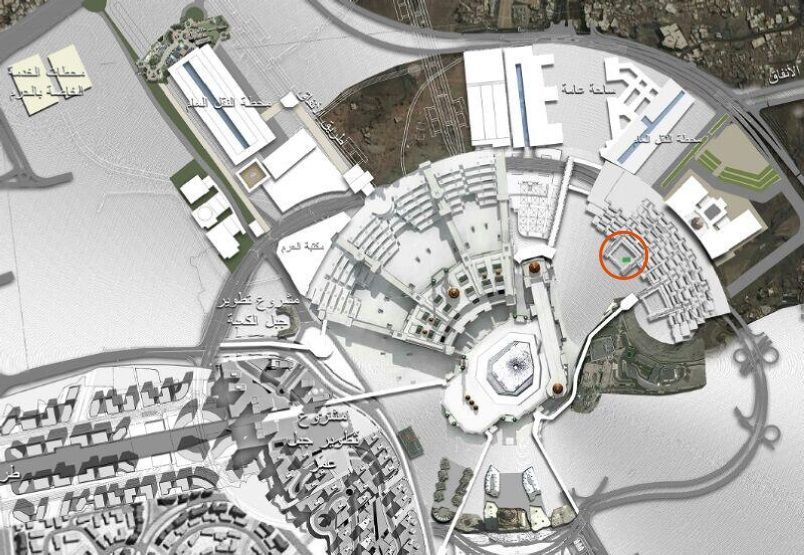
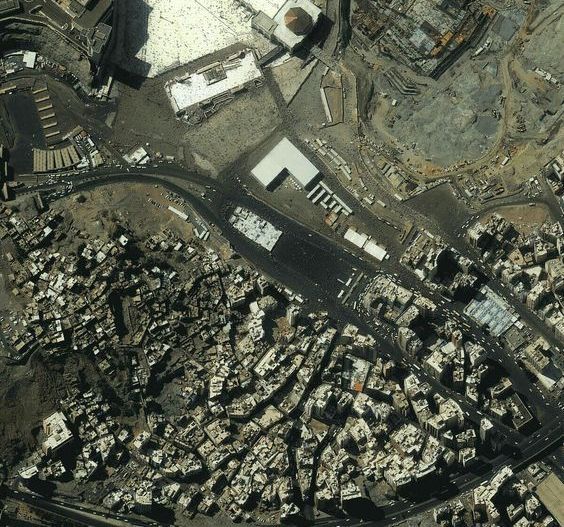
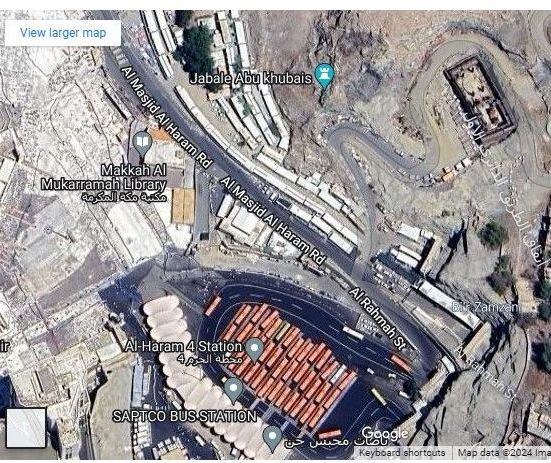
THE ROAD:::
It was inside the valley of Bani Hashim, which was recently called (Shaab Ali neighborhood), surrounded by houses and markets. The urban development of Makkah in general, and the organization and opening of roads in particular, led to the demolition of many houses, so the library building now overlooks directly the main Al-Qashashiyah Street, which extends from the tunnels of Mount Abu Qubays from north to south at the entrance to Shaab Ali. In 1411 AH, the expansion of the Al-Qashashiyah neighborhood and the construction of a large square for the Holy Mosque on the eastern side necessitated the complete removal of the Shaab Ali neighborhood (Shaab Bani Hashim in the past). Accordingly, two new tunnels were opened for vehicle traffic, penetrating Mount Abu…..In the past), two new tunnels were opened for vehicle traffic, penetrating Mount Abu Qubais from east to west, leading to Al-Ghaza Street. Thus, the Makkah Library building became the only existing building in that area, surrounded by wide courtyards and organized paved roads. It is bordered on the eastern side by the newly constructed street extending from the Aziziyah tunnels, turning west, leading to the tunnels of Mount Abu Qubais, then Al-Ghaza. On the western side, there is the eastern courtyard of the Haram, parallel to the Mas’a. On the northern side, there is Al-Ghaza Street. On the southern side, there is the courtyard, an extension of the eastern courtyard, and the southern part of Mount Abu Qubais, topped by the Safa Palaces.
New Paragraph
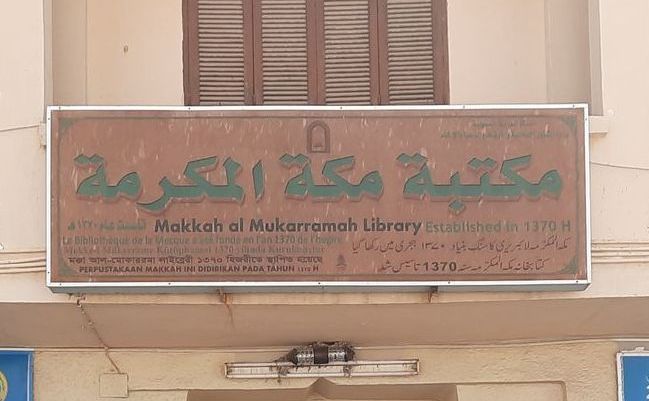
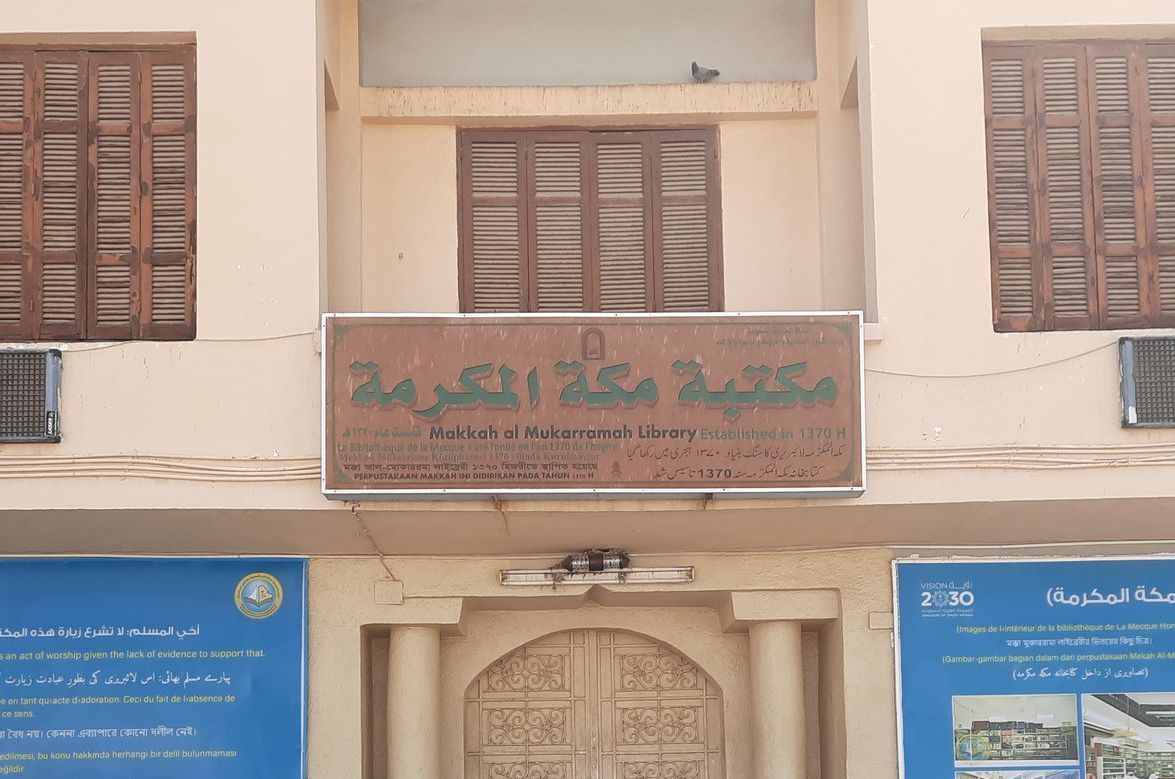
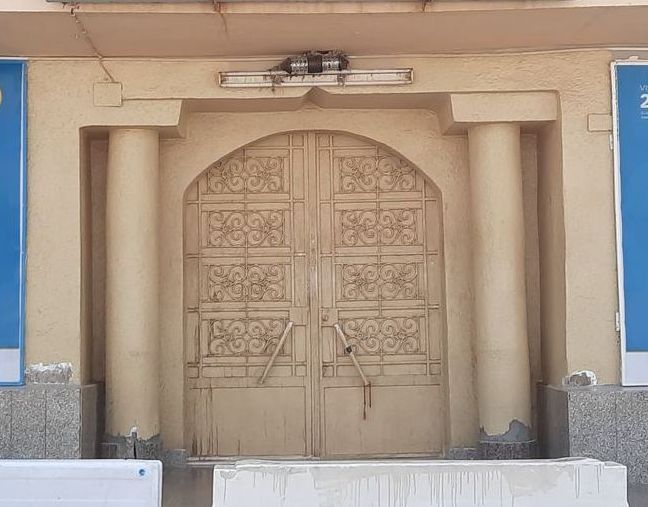
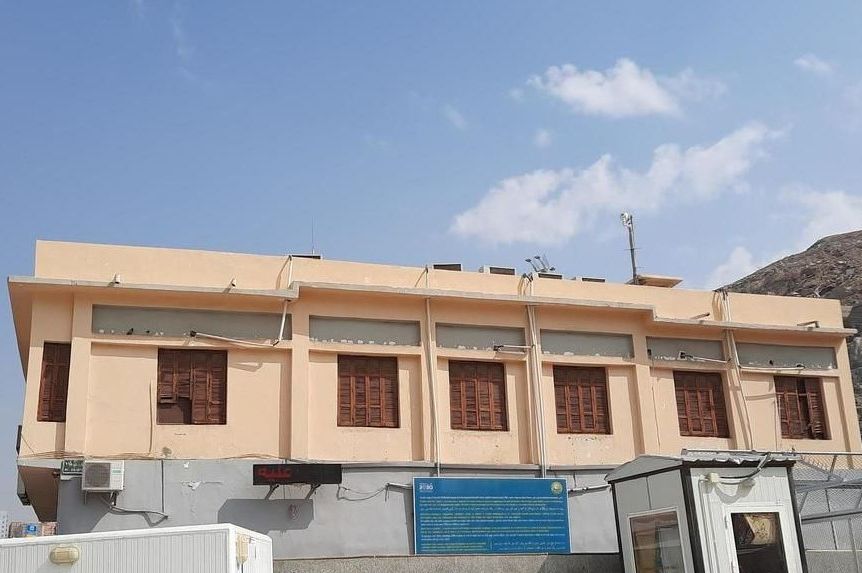
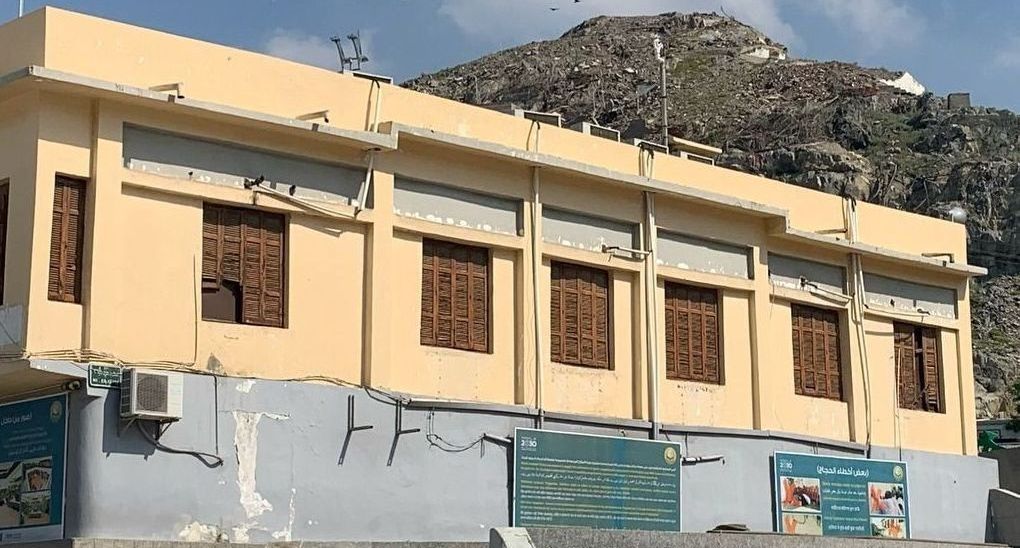
New Paragraph
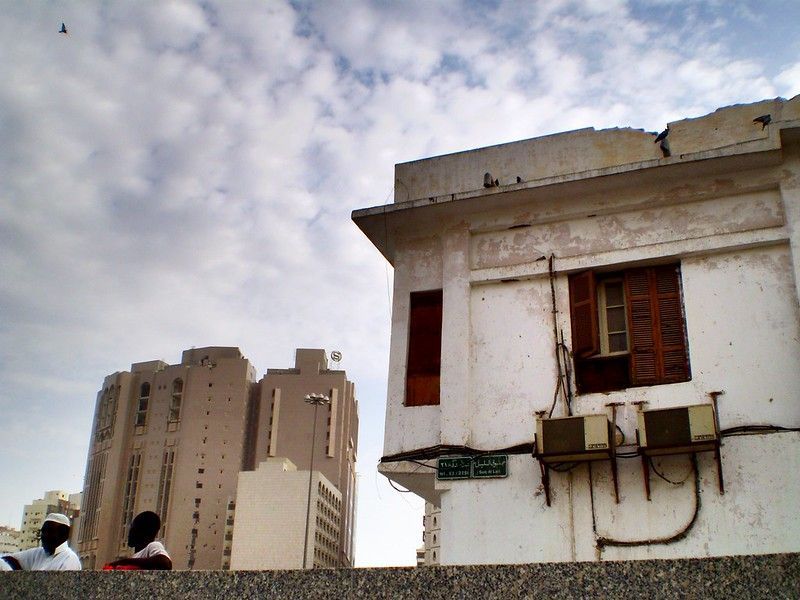
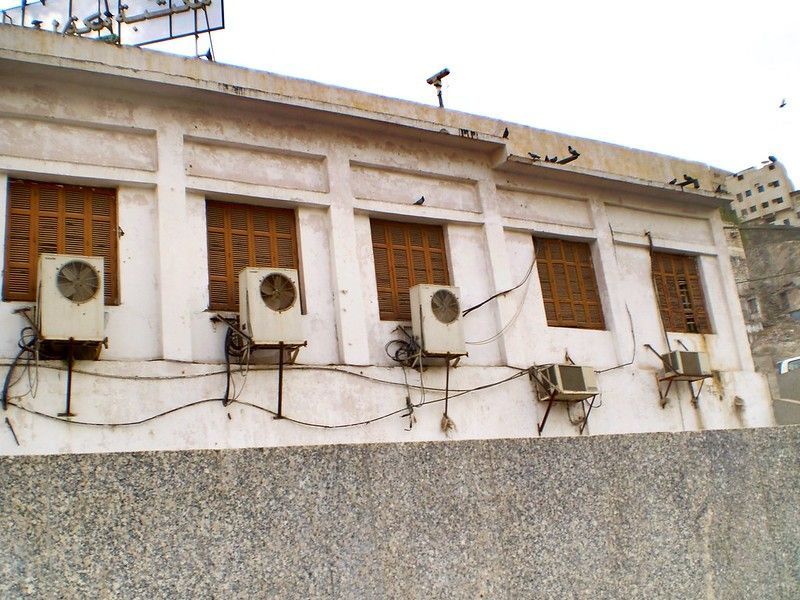
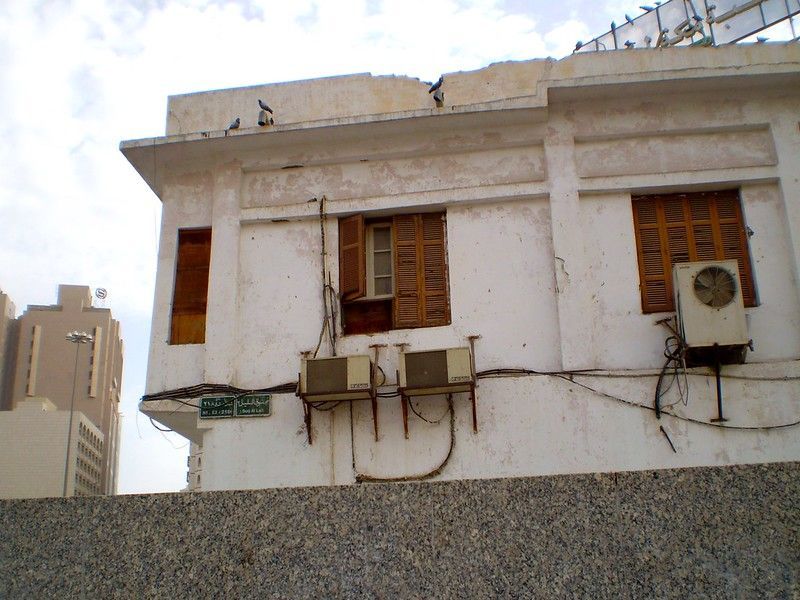
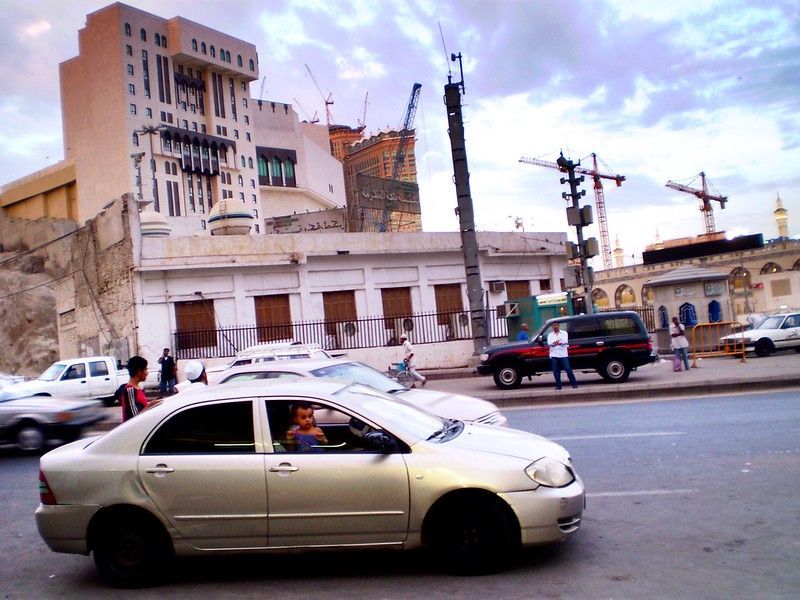
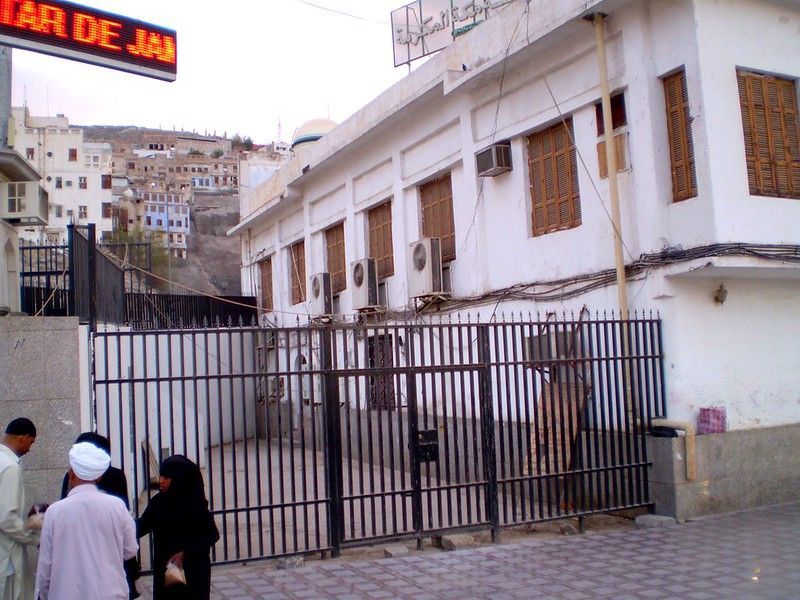
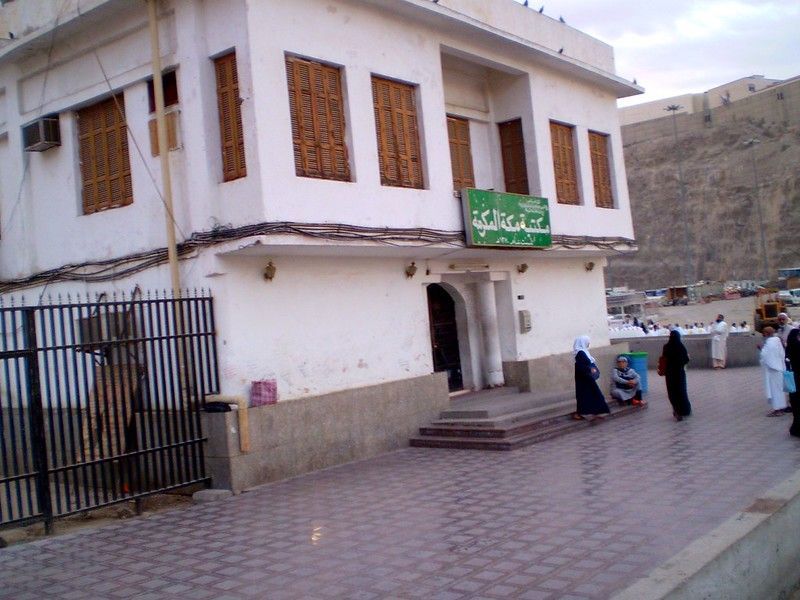

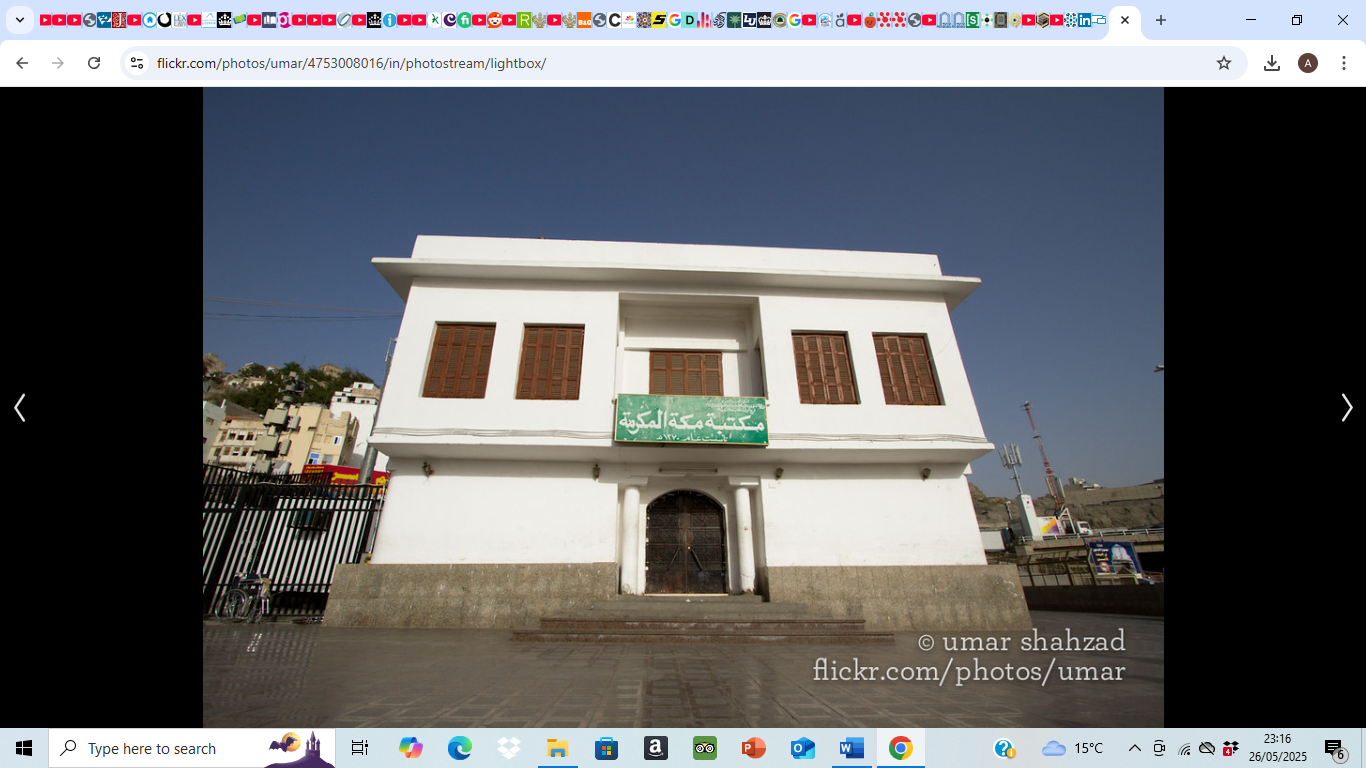
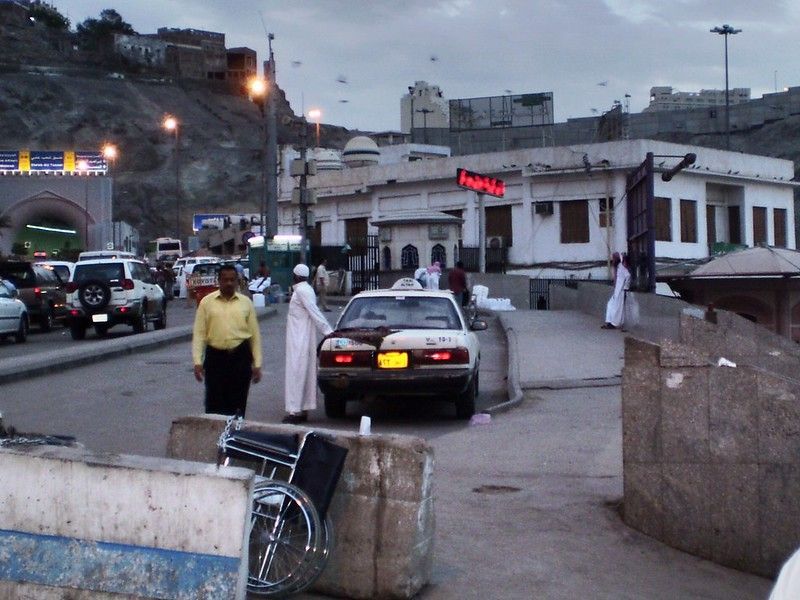
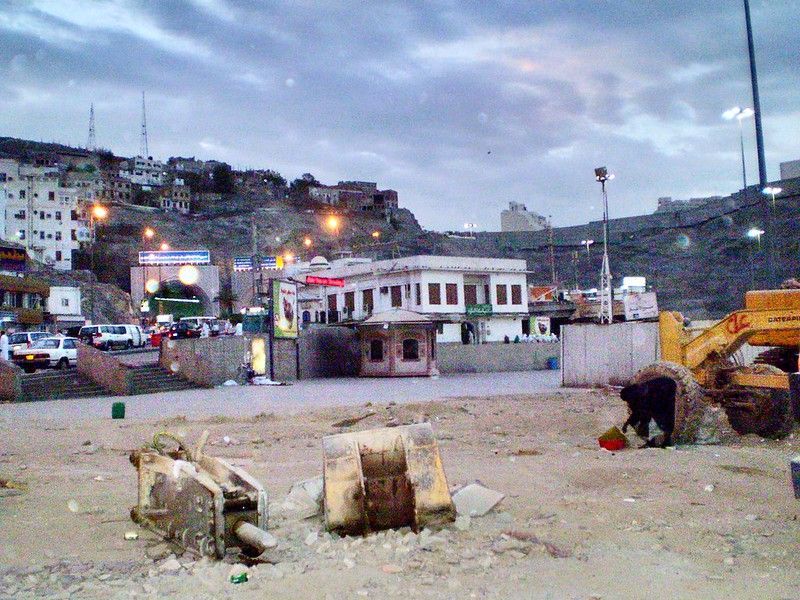
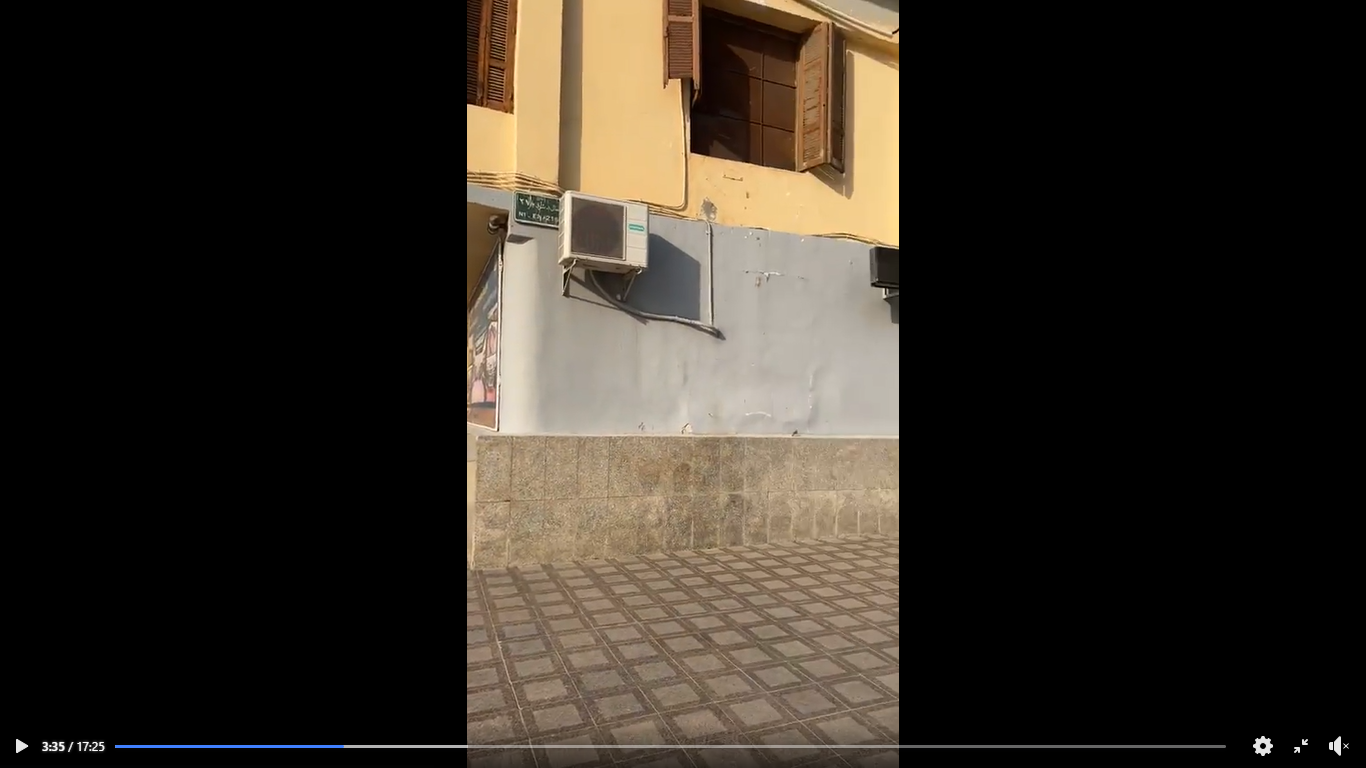
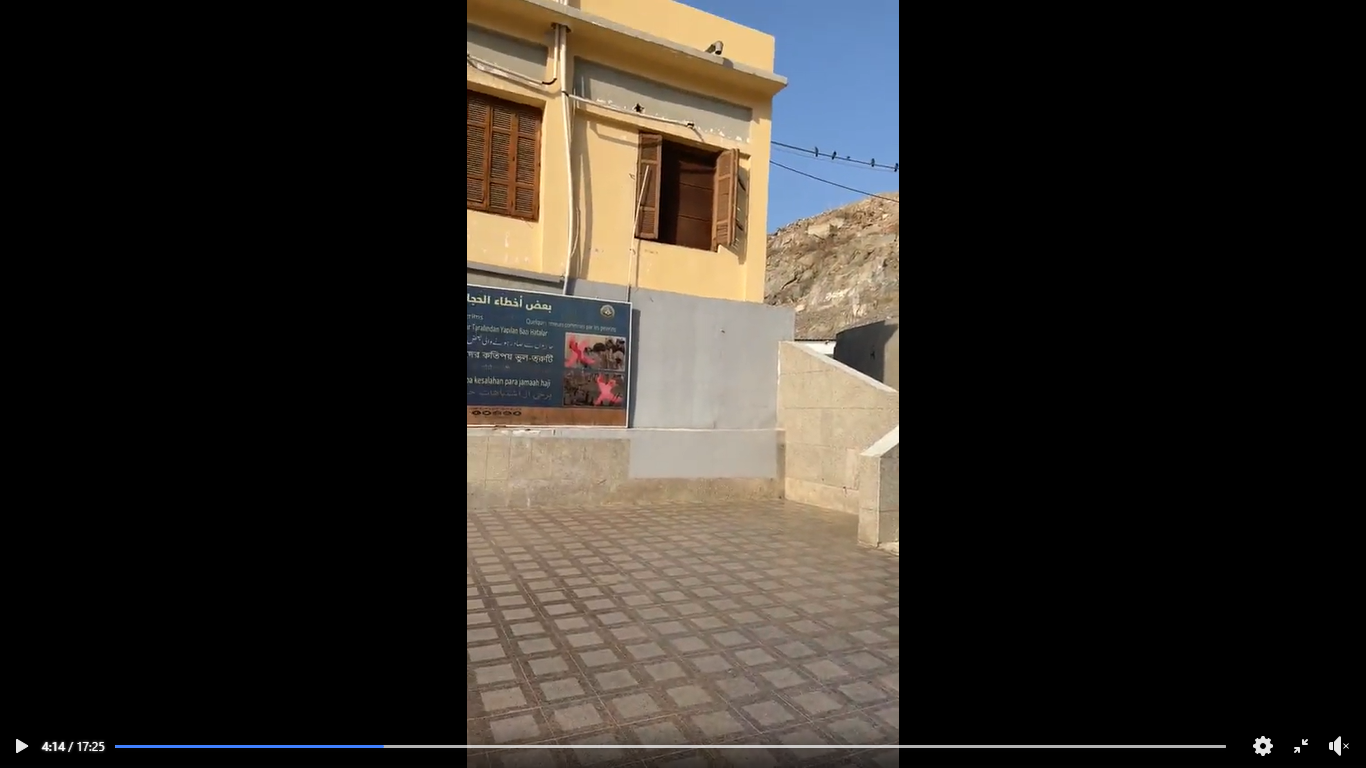
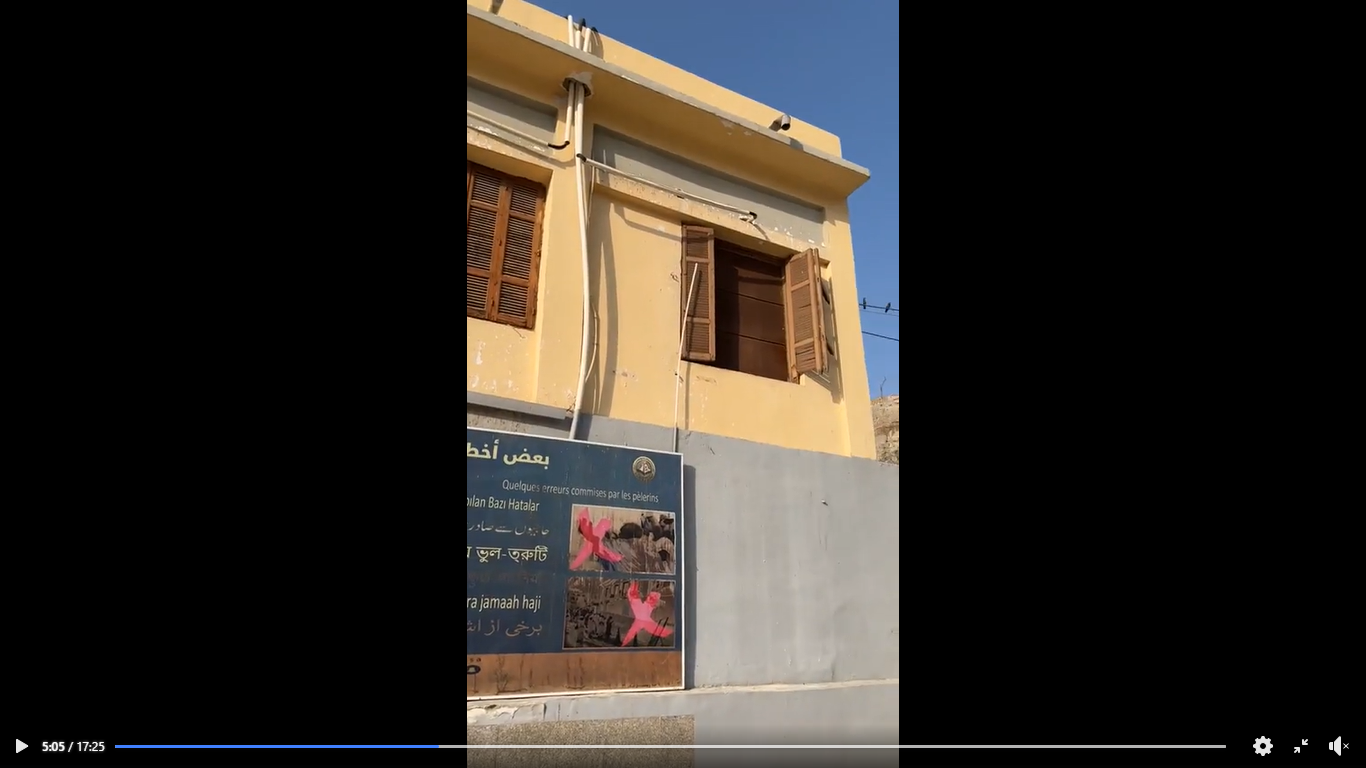
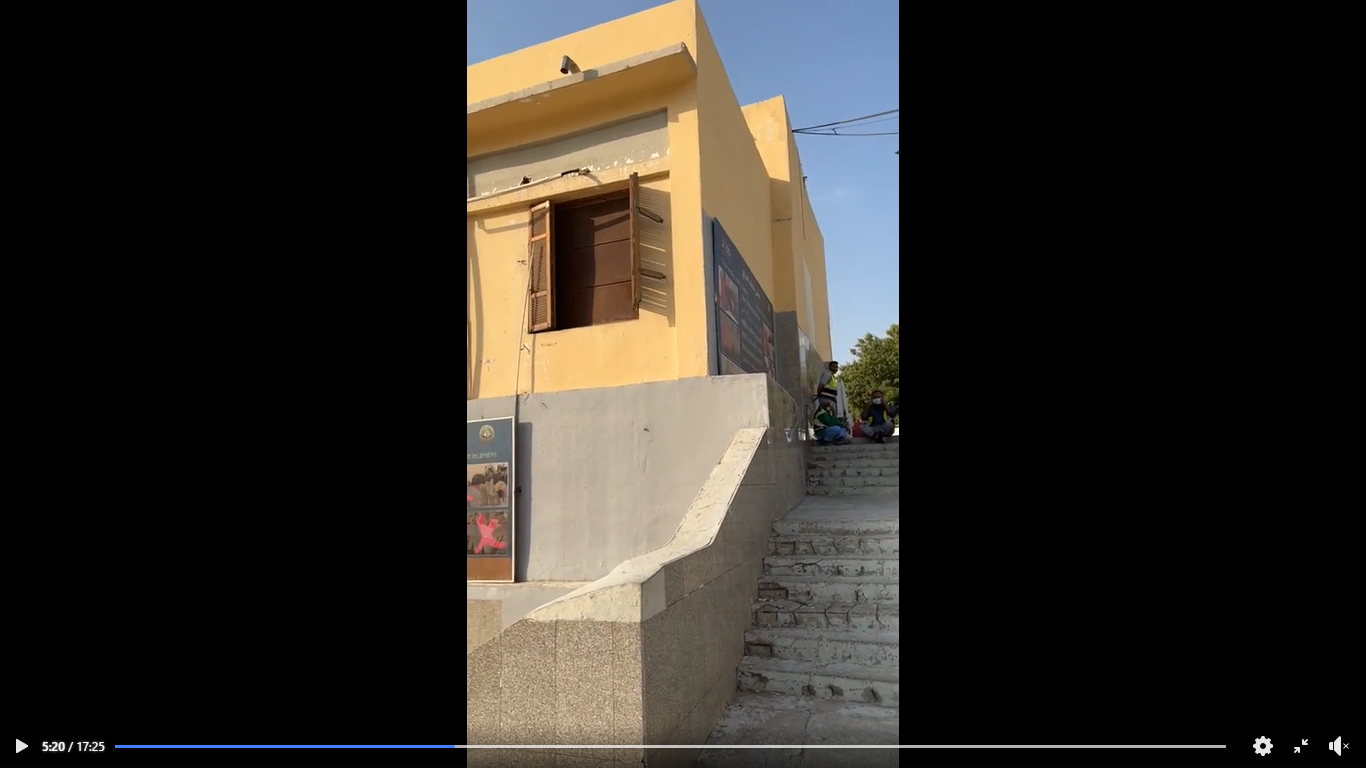
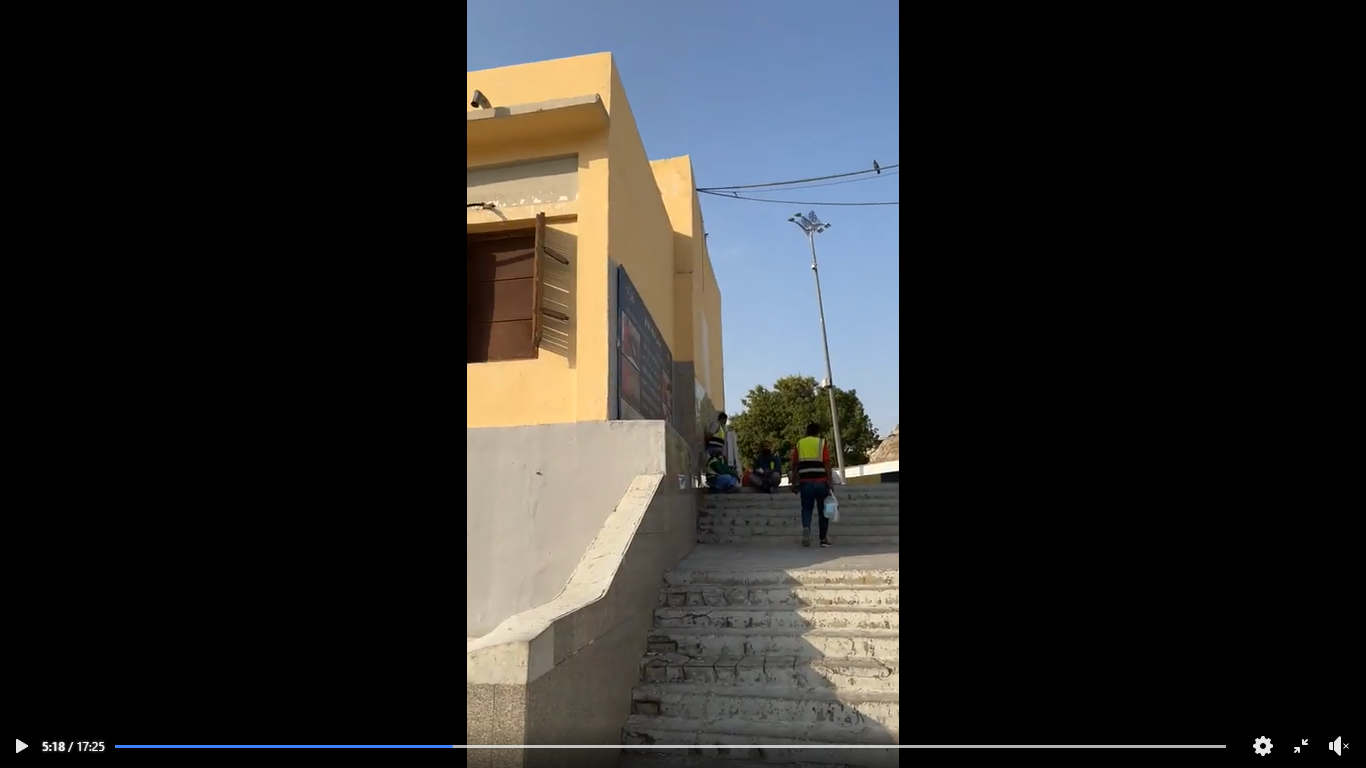
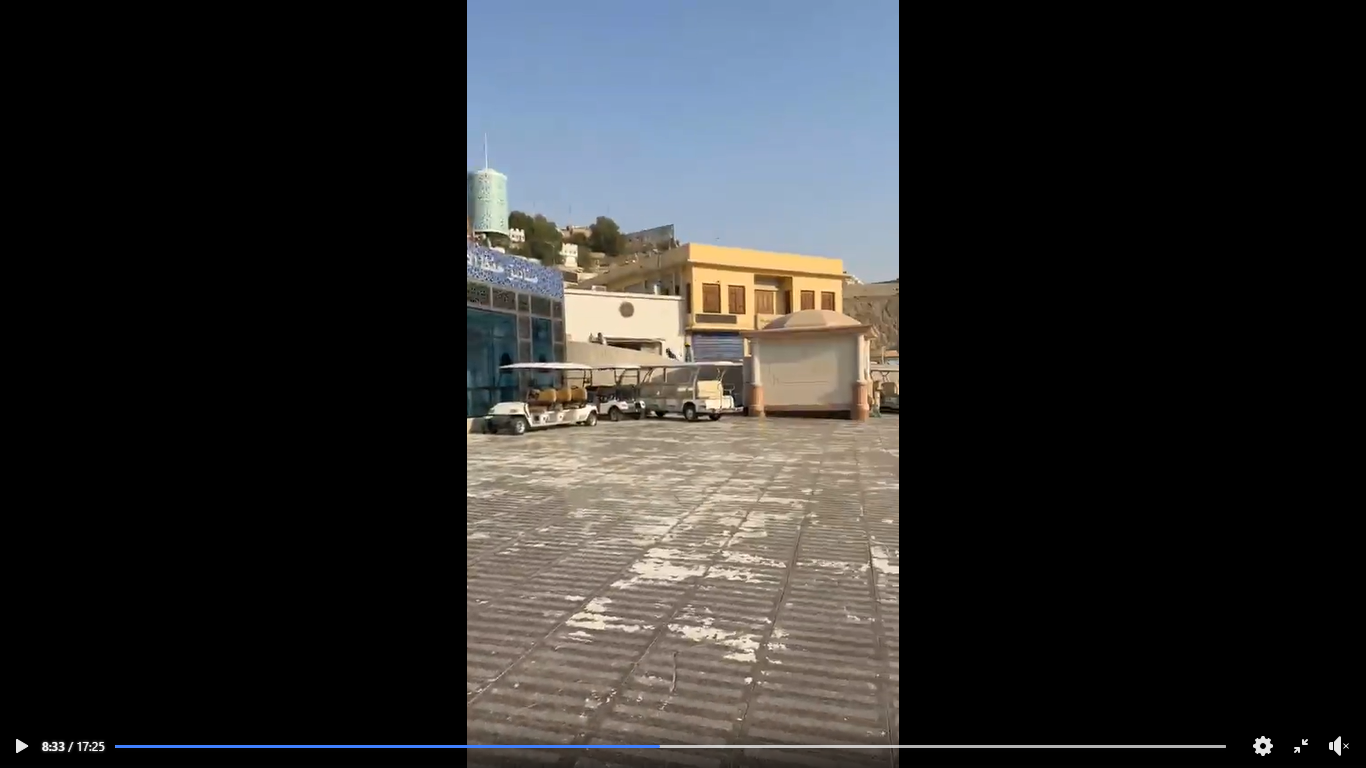
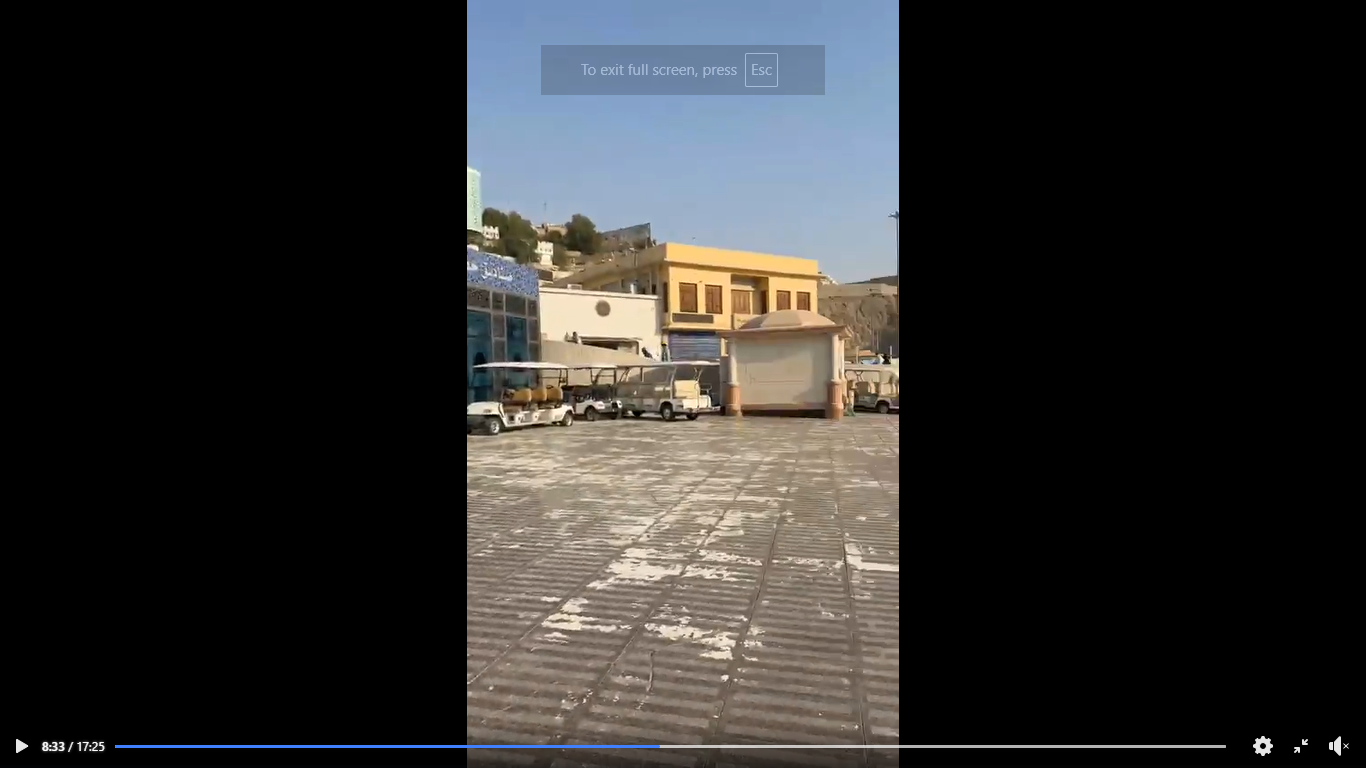
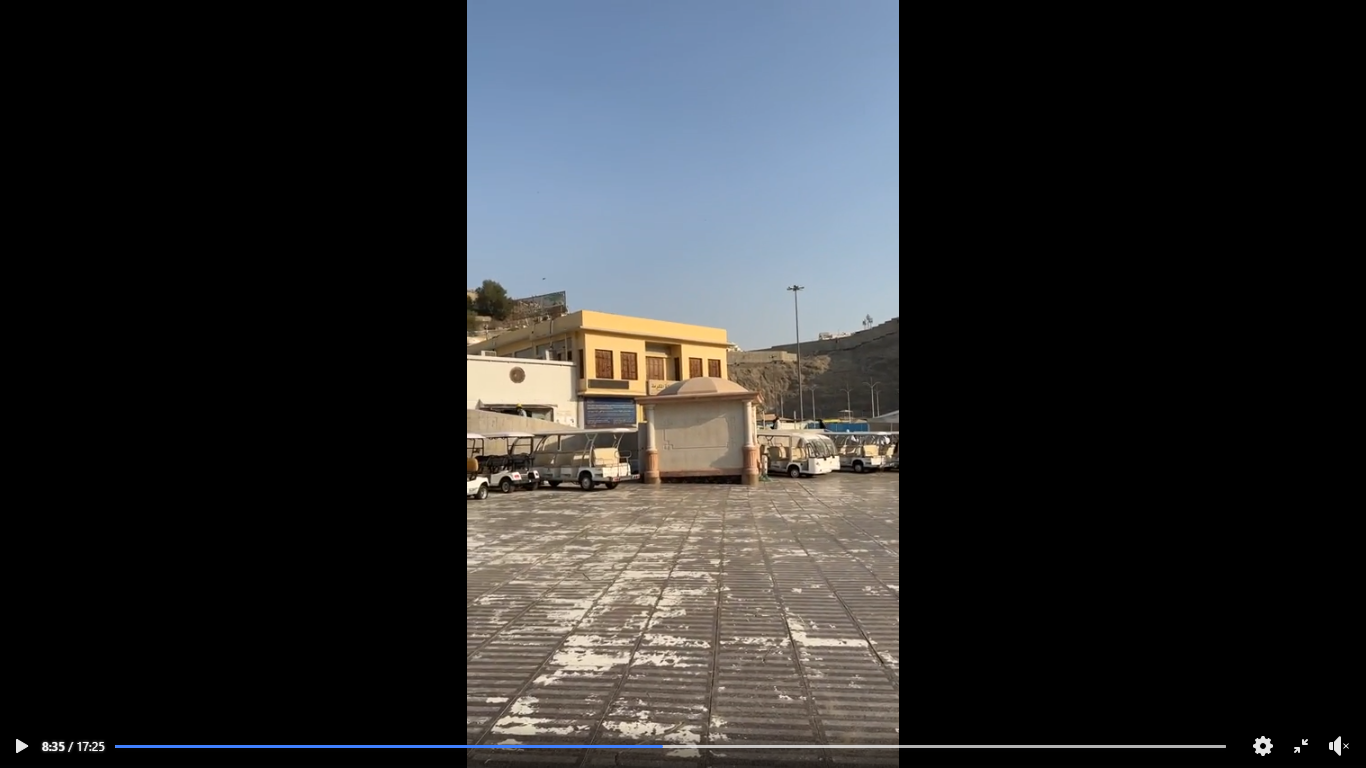
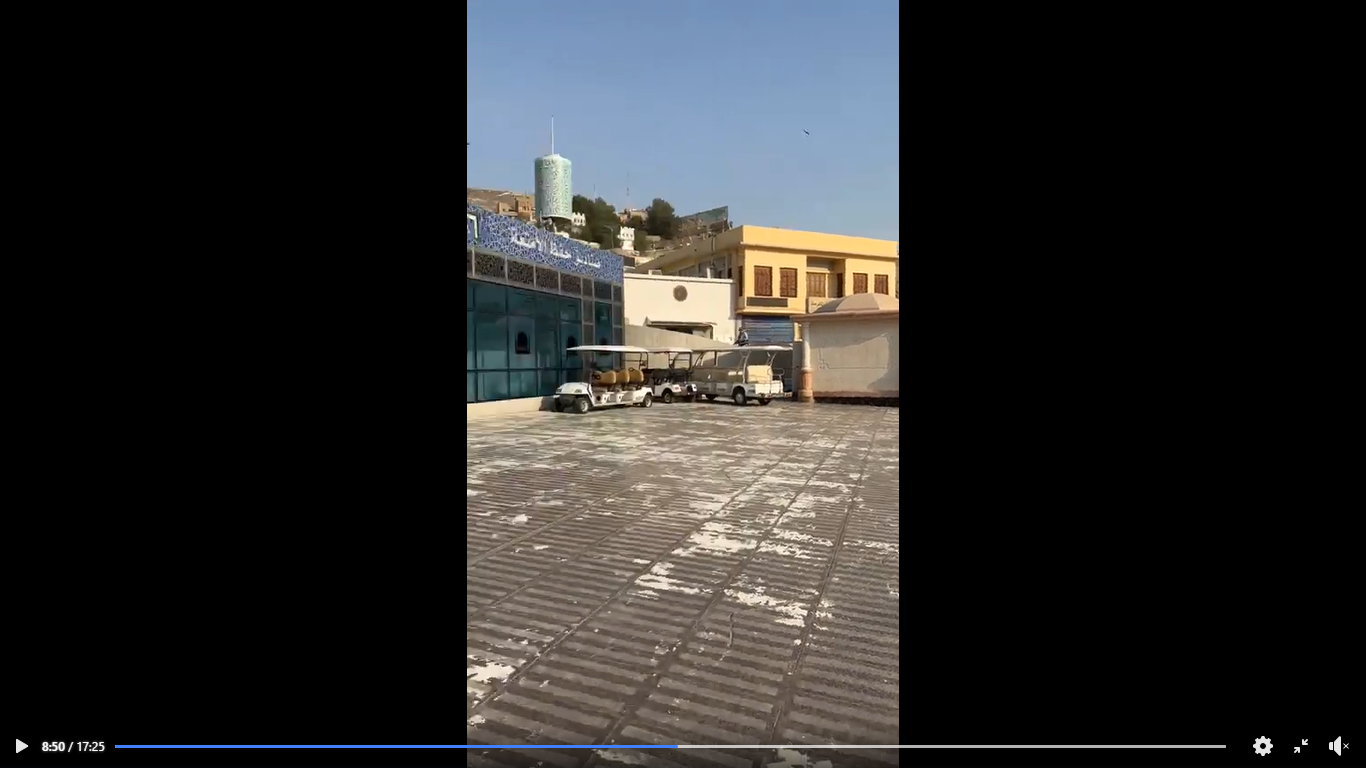
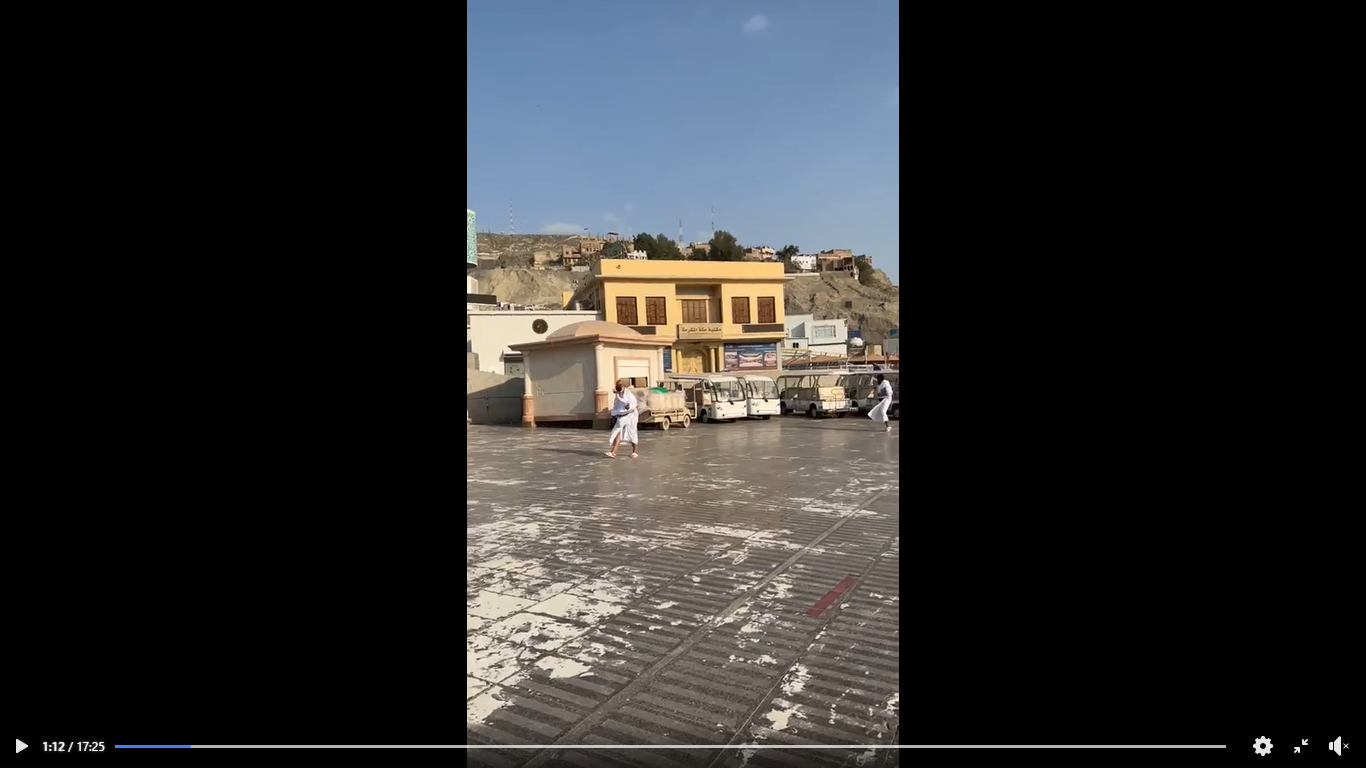

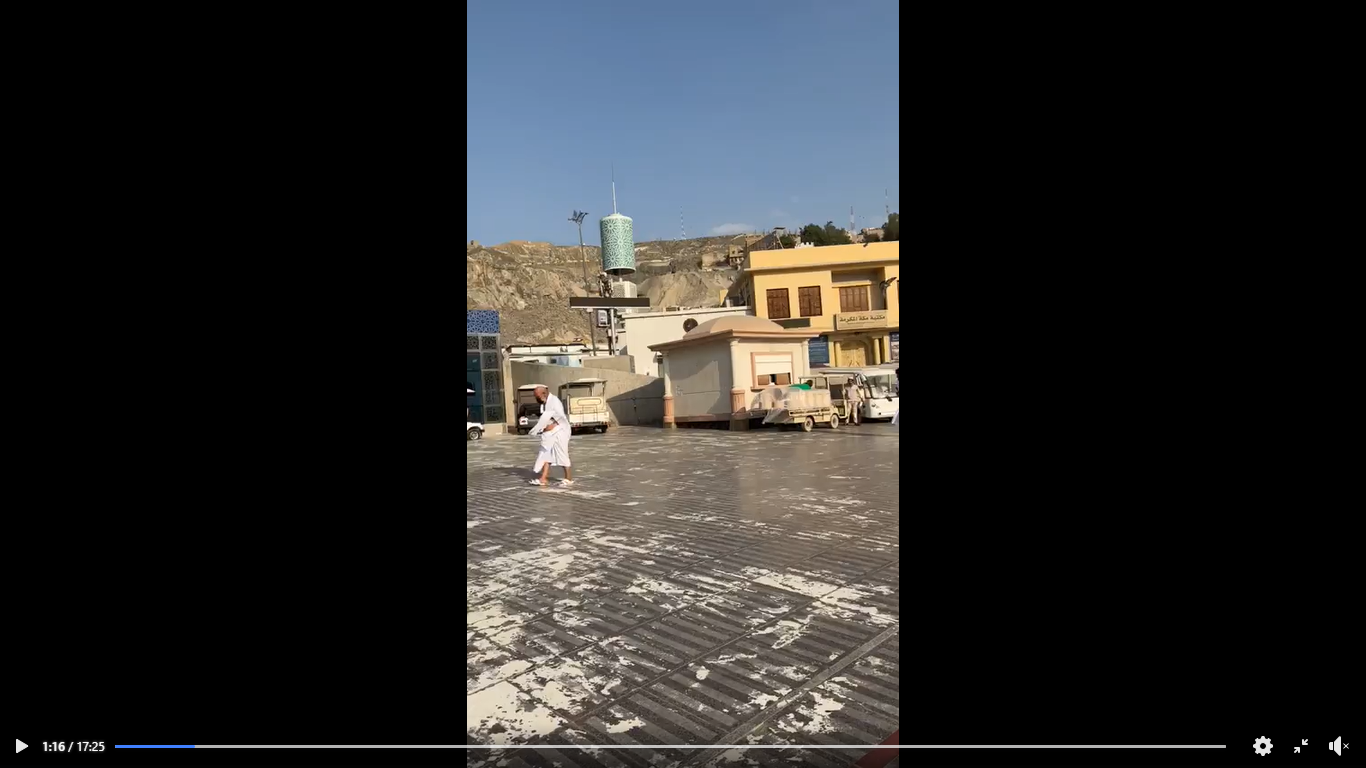
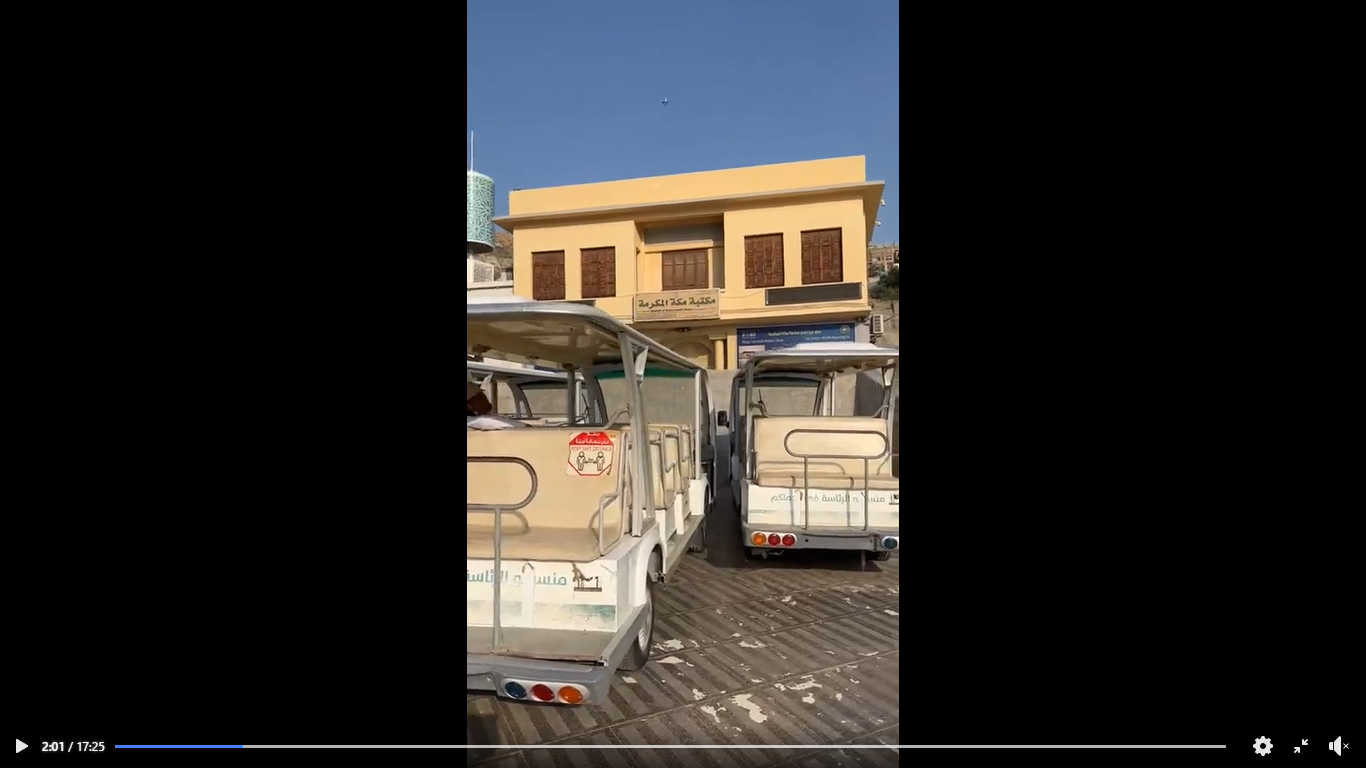

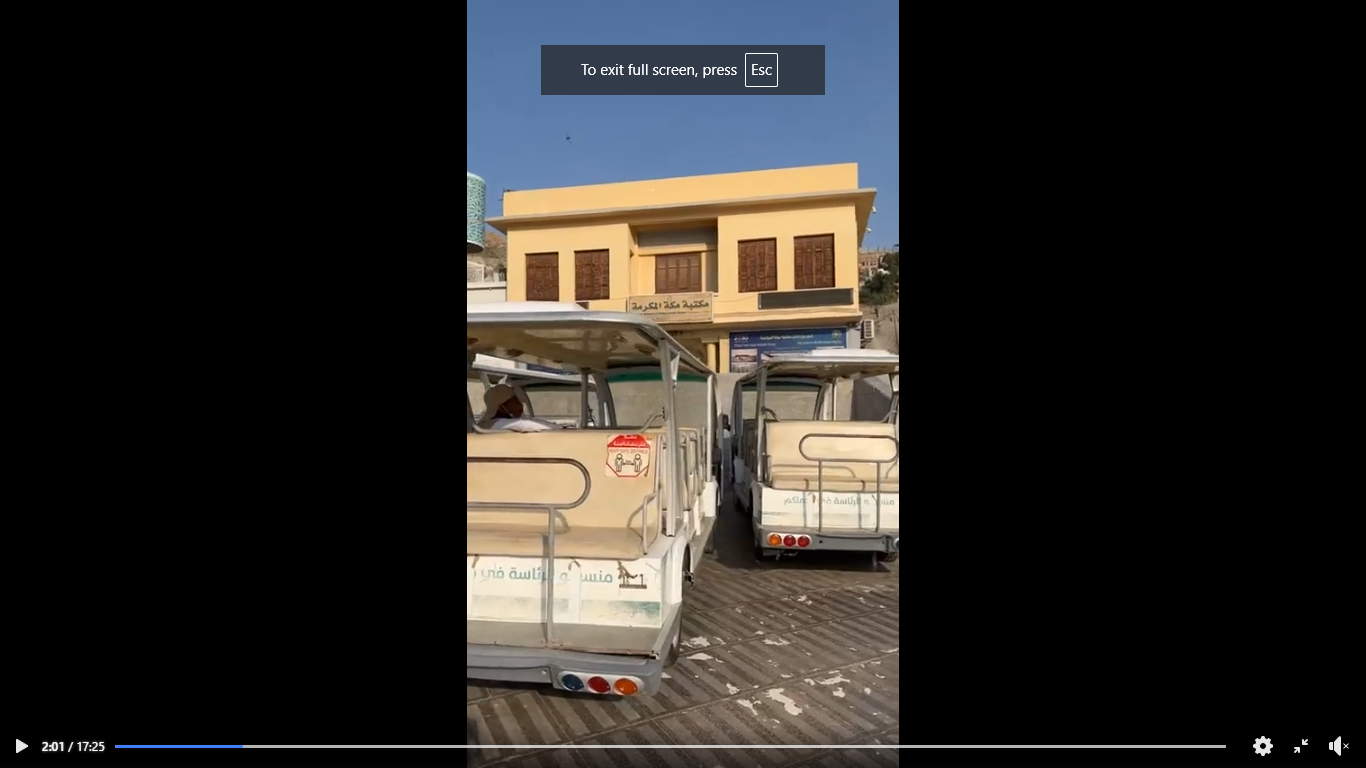
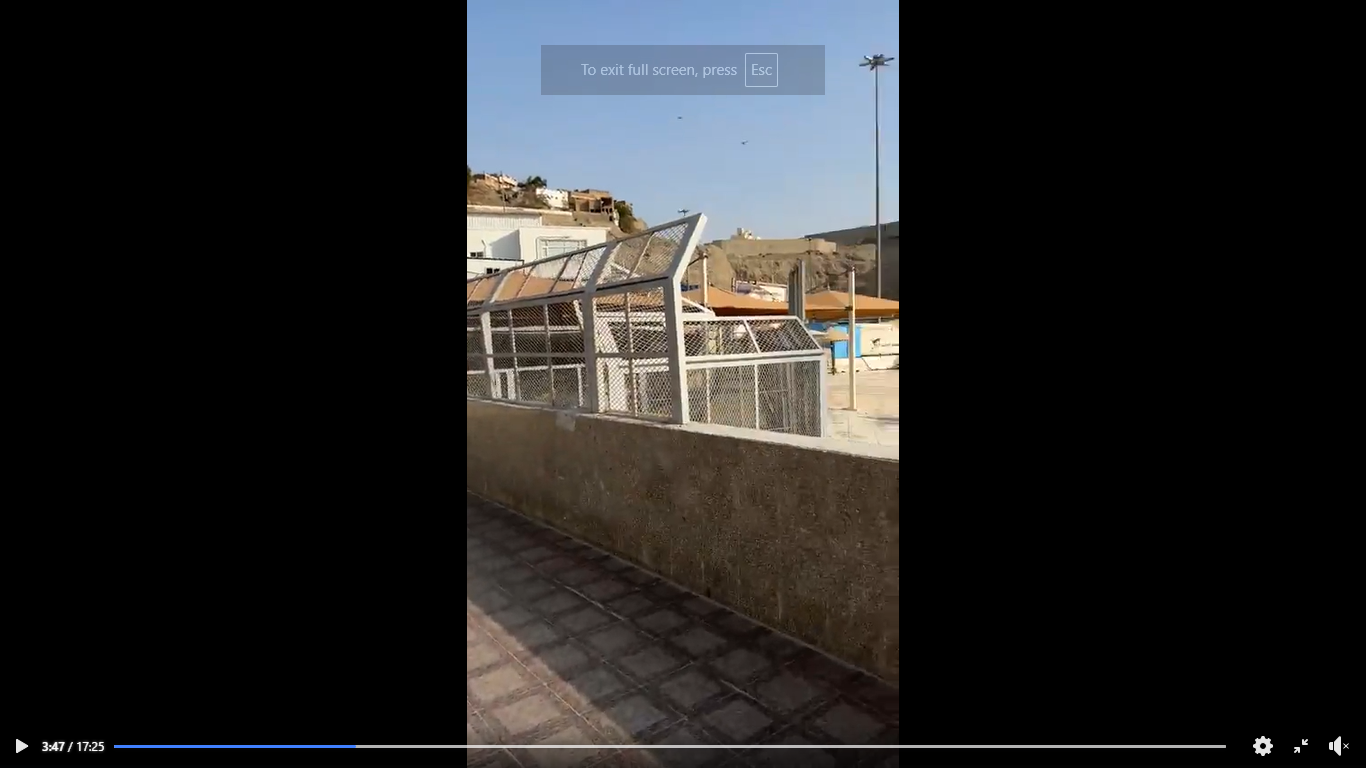

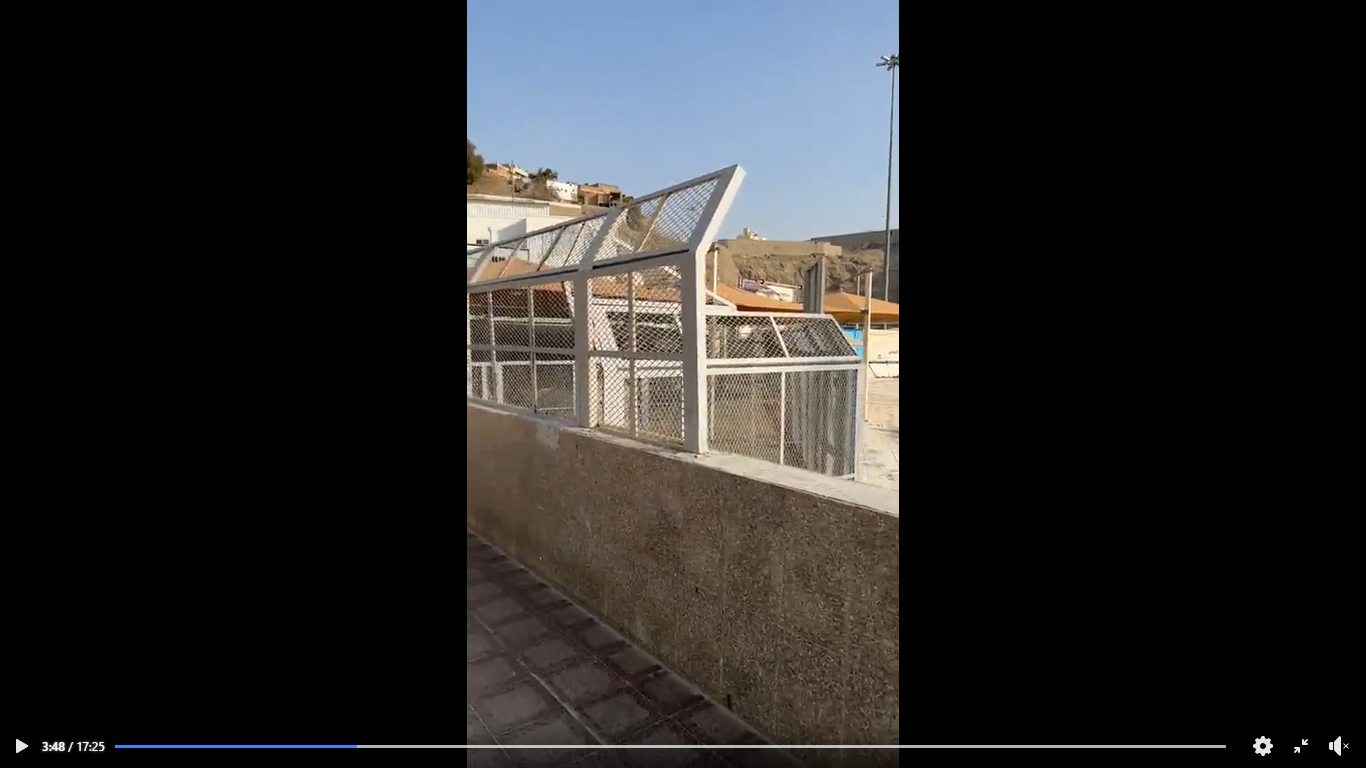
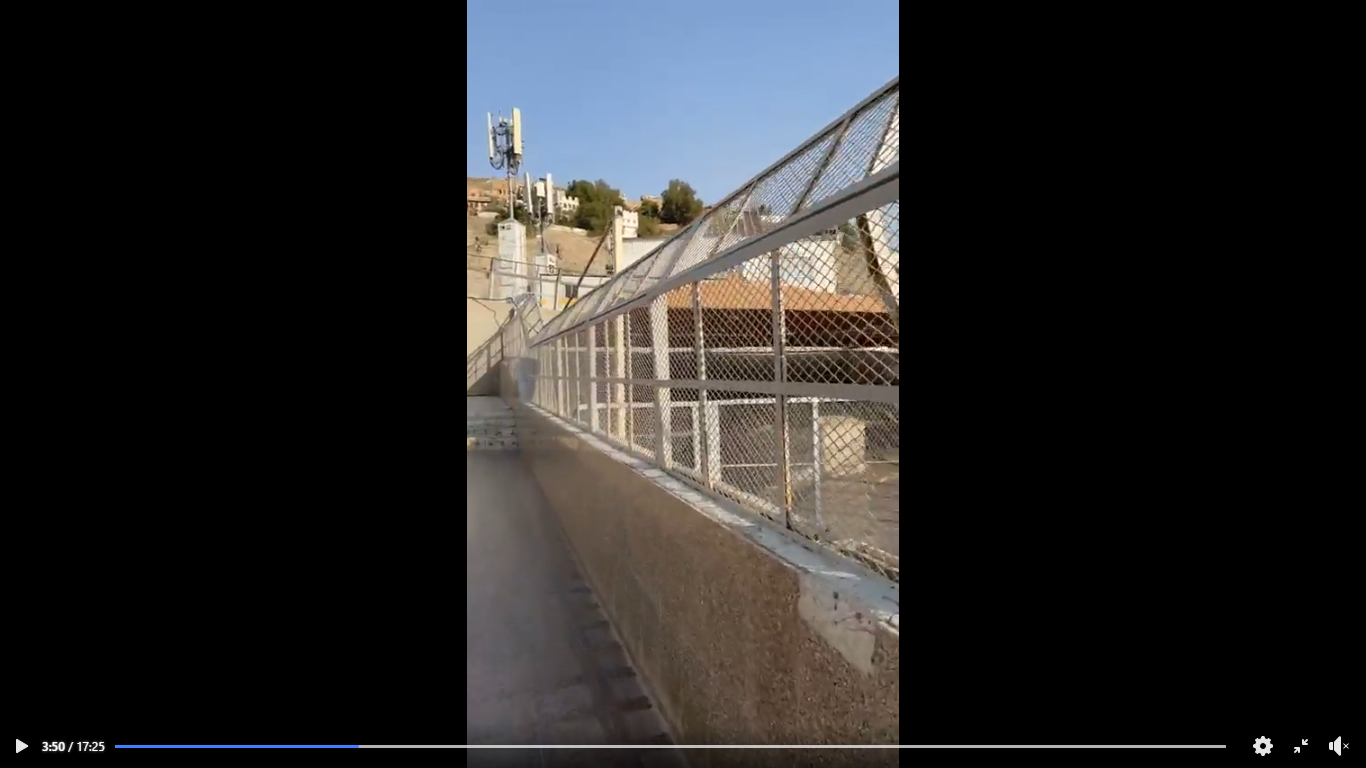
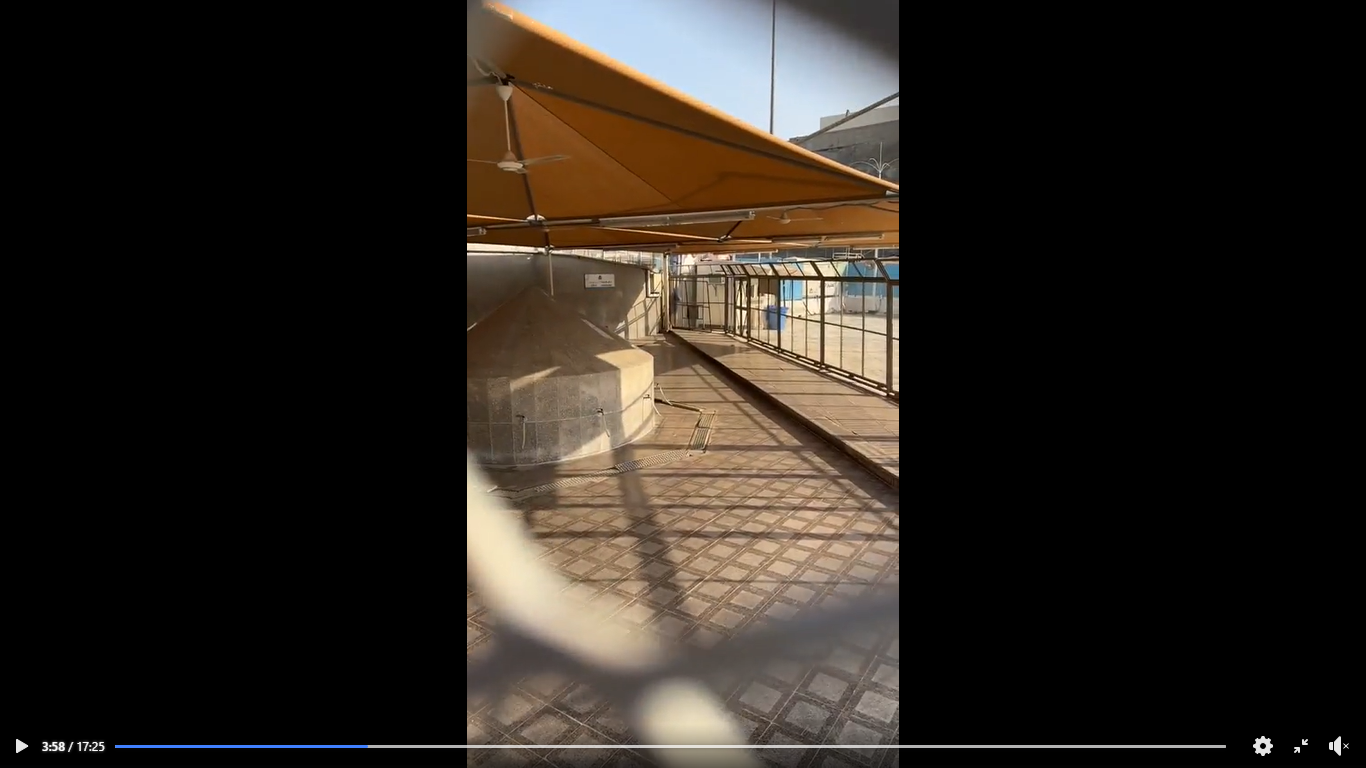
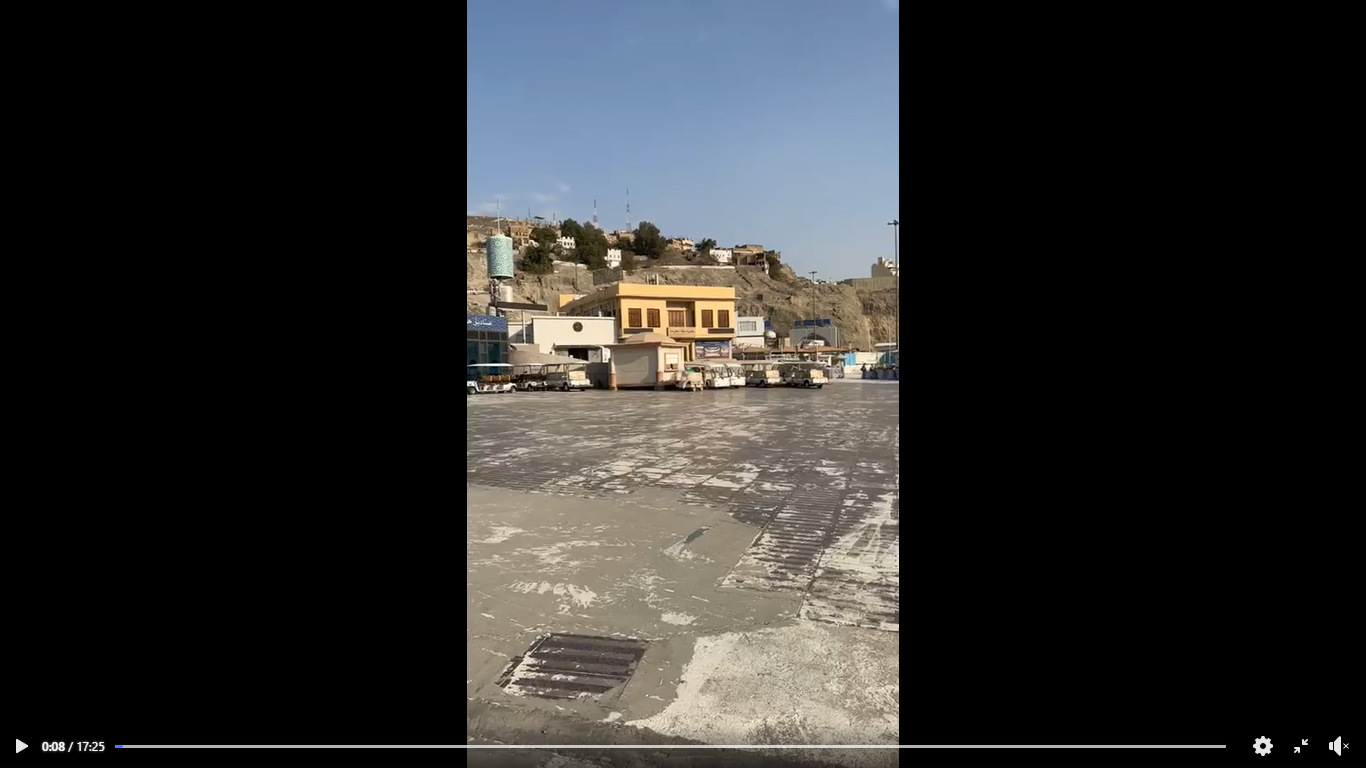
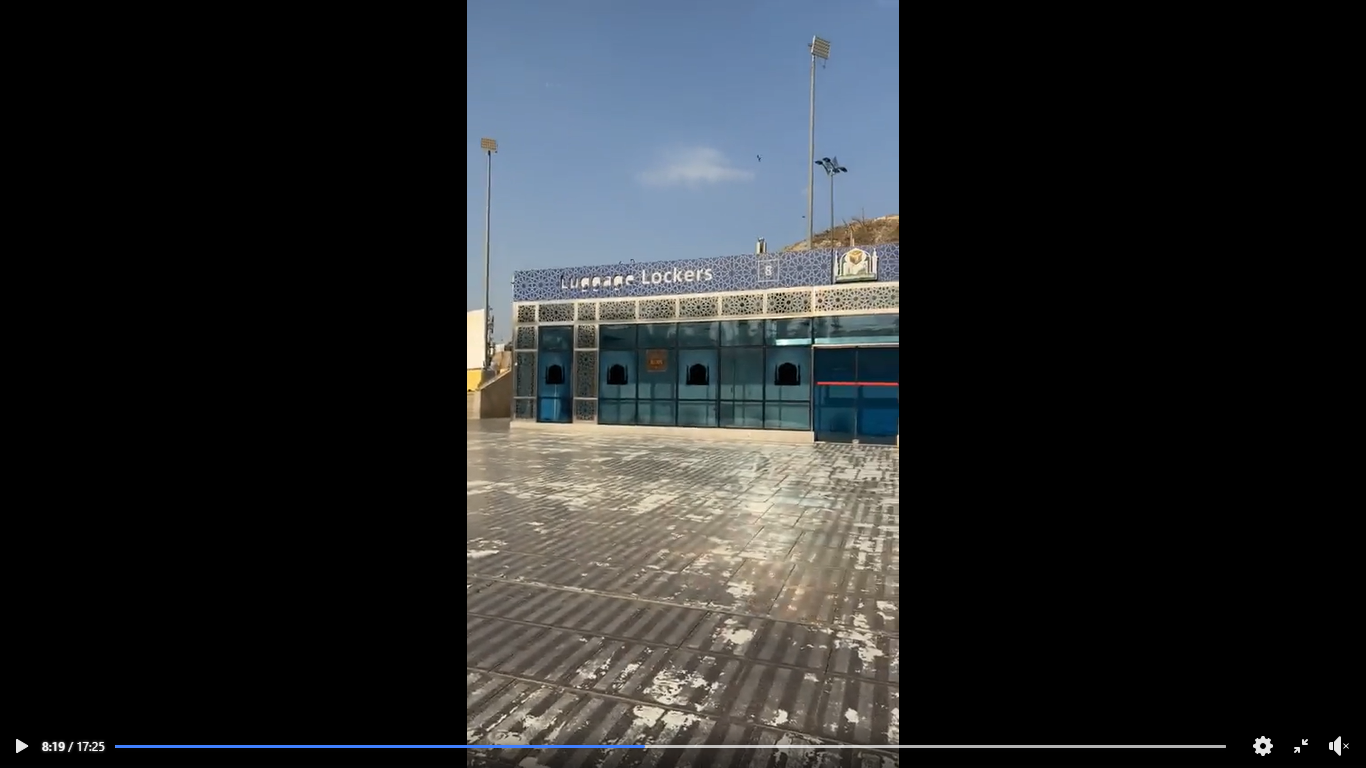
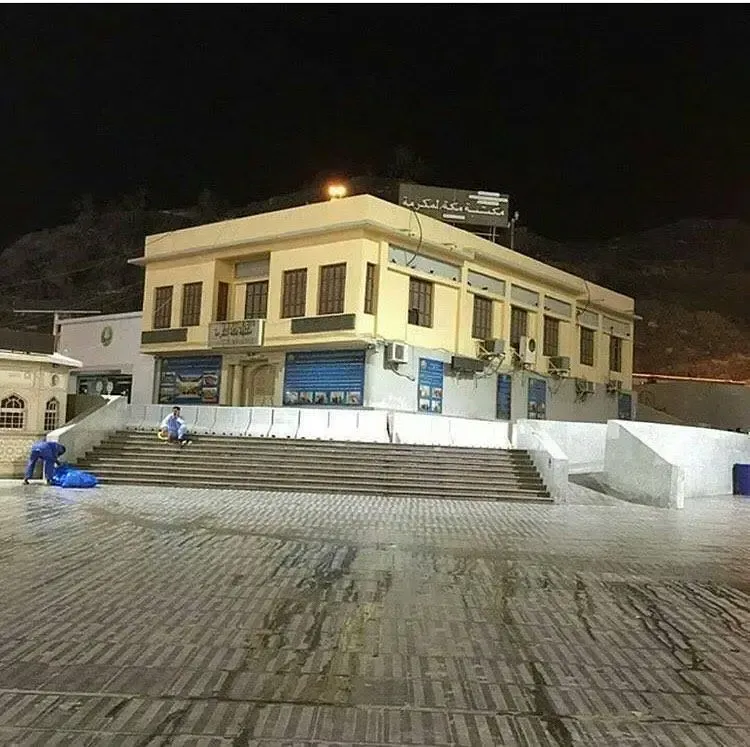
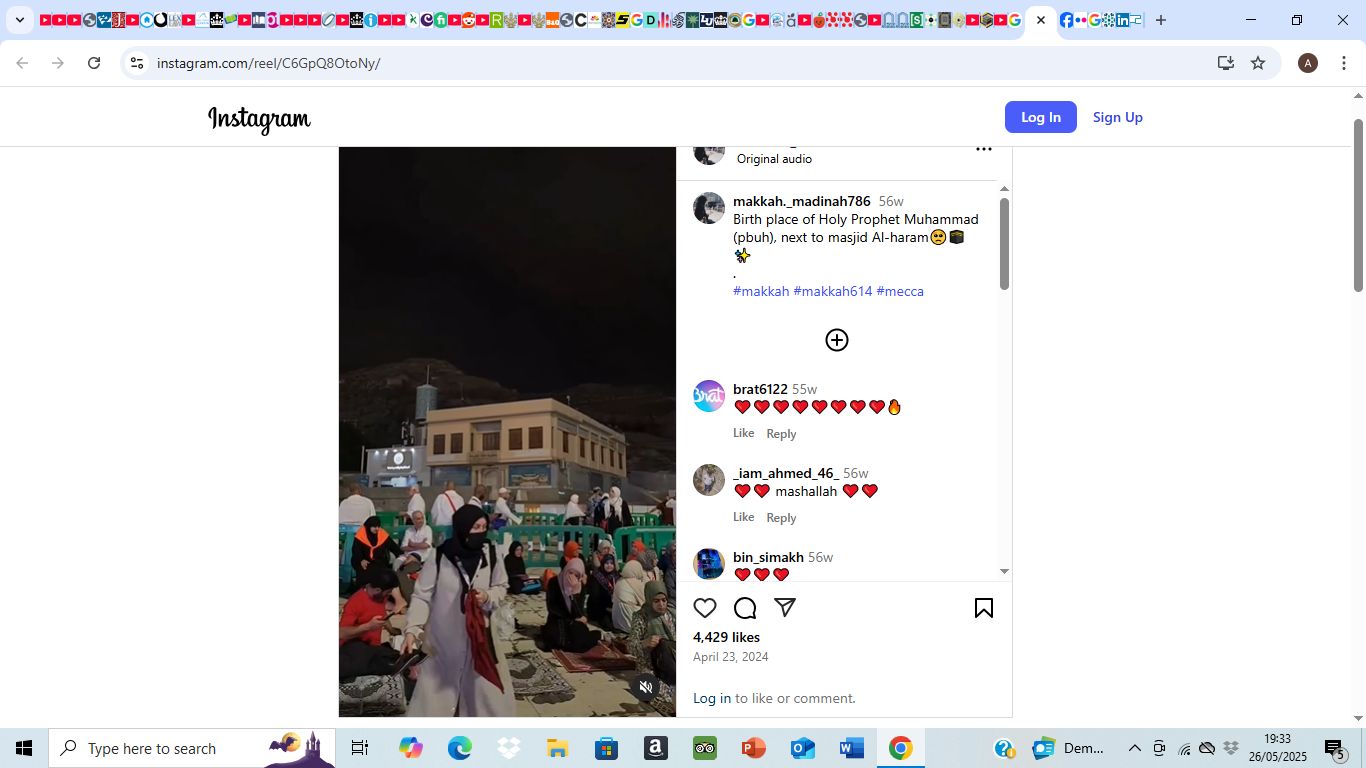
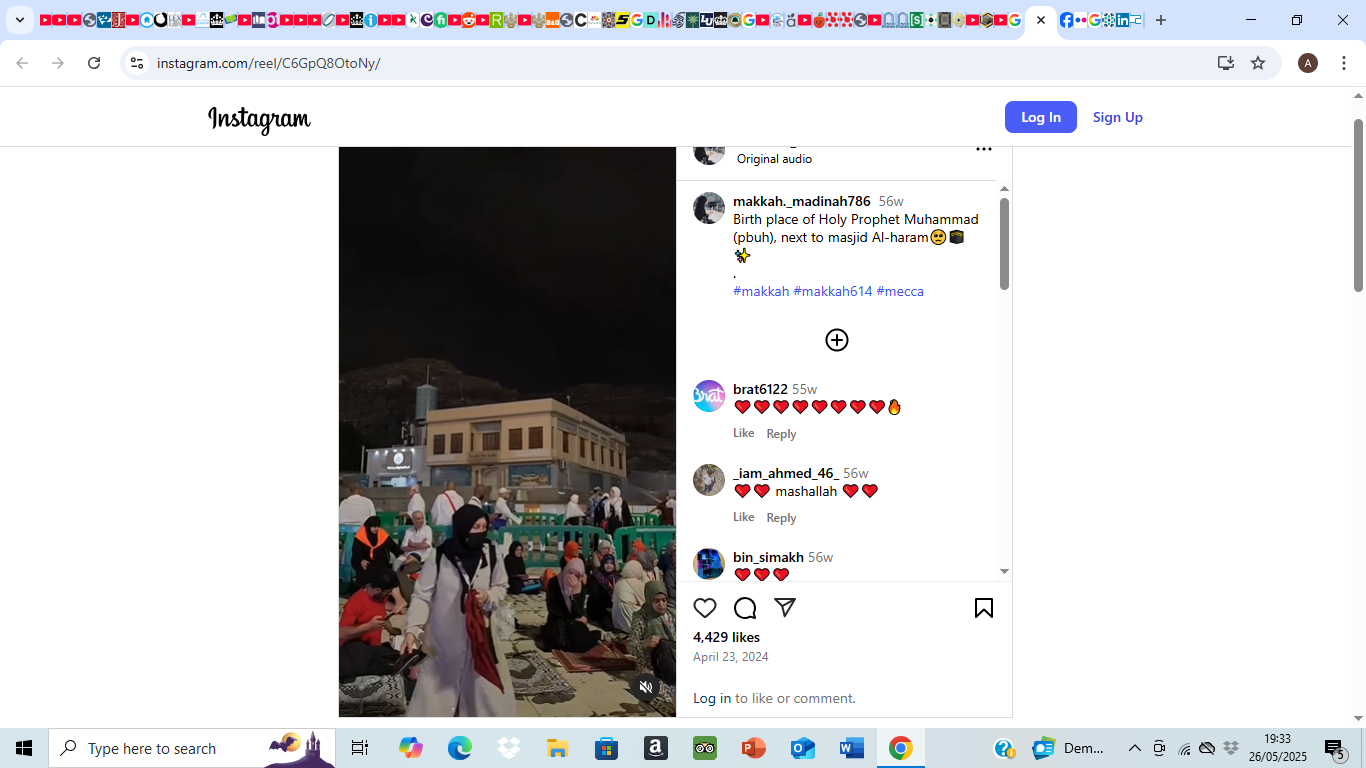
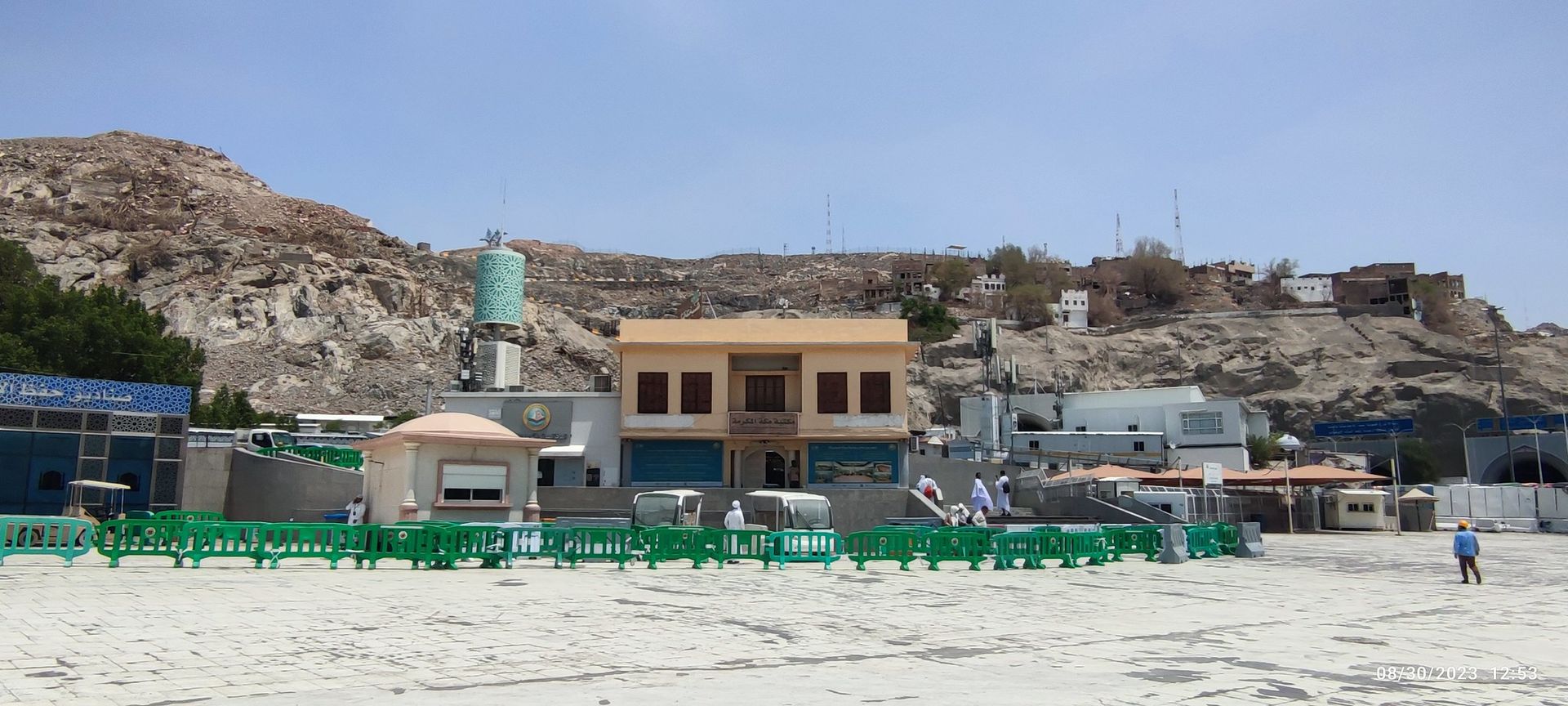
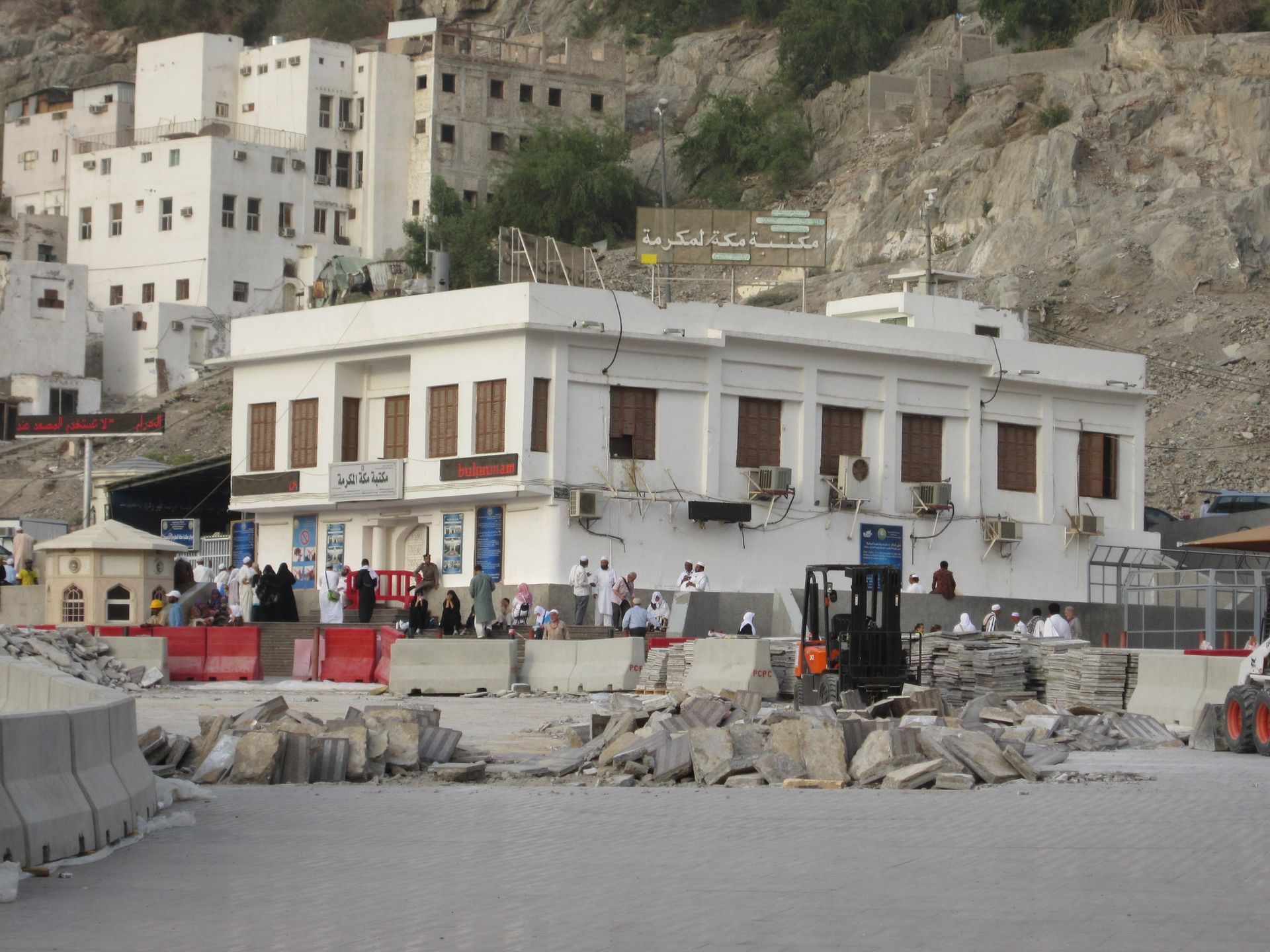
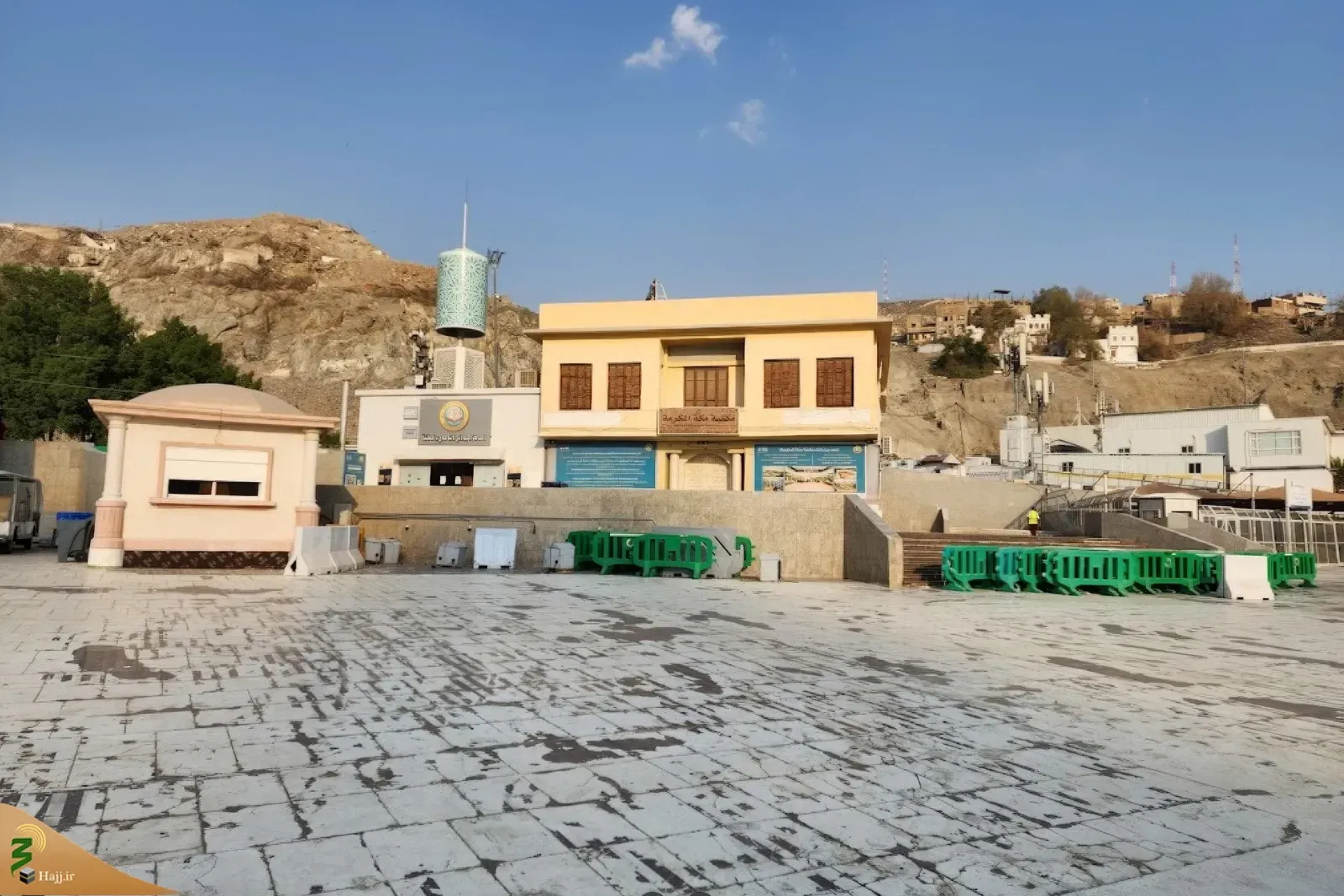
From 1951 to the 2008, despite millions of pilgrims visiting Mecca, and the international community's highlighting of the site's authenticity, the ews refrained from taking any tangible steps to deter pilgrims from visiting and entering the Birthplace.n
In 2008, however, the ews implemented the first of a series of measures aimed at discouraging pilgrims from visiting the Birthplace or regarding it as authentic, or in way significant.
The policy change coincided with the commencement of efforts to promote the birthplace of their sect's founder, Diriyah.
Two years earlier, in 19/7/2006, a Royal Decree (MB/5455) was issued that assigned the Saudi Commission for Tourism and Antiquities (SCTA) with the task of registering the At-Turaif district in Diriyah within the list of the World Heritage Sites of the UNESCO. On October 16, 2006, the SCTA formally nominated the site of At-Turaif district to UNESCO’S WHS. The application would be considered in the meeting of the World heritage Committee in 2010.
At-Turaif was inscribed by UNESCO on the World Heritage List in July 2010.
The whs listing achieved immense prominence for Wahhab's birthplace, and gave the ews a major platform to promote Wahhab's beliefs, over the Prophet's saw beliefs. From then on, Wahhab's birthplace was to be the only birth site to be a publicised in the Kingdom, and this required a concerted campaign to undermine the authenticity of the Prophet's saw Birthplace.
From it's inception in the 1800s, the ews's primary aim has been to replace the peaceable and conciliatory form of Islam brought by the Prophet saw, with the puritanical and aggressive version devised by Wahab. This has necessitated doctoring hadiths (records of the Prophet's sayings), altering historical accounts, and the negating, as much as possible, the Prophet's saw presence in the Kingdom by acts such as destroying, allowing to decay, covering up, or denying access, to sites linked to the Prophet saw, confiscating his saw relics, removing his name from the Kiswas and from the, changing the colour of the dome on the Prophet's saw mosque from his saw favoured colour, green, to silver, and lobbying the government to desecrate the body of the Prophet saw in the Prophet's saw mosque and re-bury it in an unmarked grave in an another location.
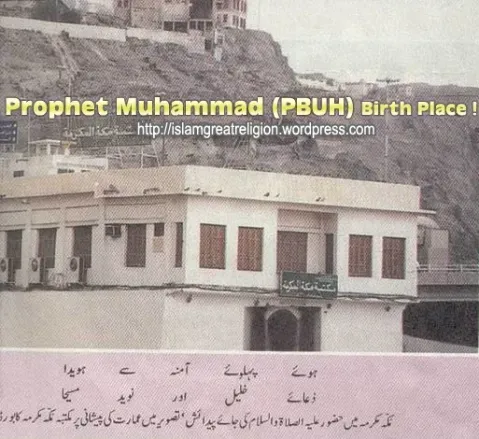
In their zeal to “save” Muslims from shirk (associating partners with Allah) and bida‘ (innovations in the deen), the Wahhabis have been involved in the destruction of historic buildings and sites for decades. “It is not permitted to glorify buildings and historical sites,” proclaimed Sheikh Abdul-Aziz bin Baz, the kingdom's chief alim, in a much-publicized fatwa in 1994 when he was alive. He went on: “Such action would lead to shirk (polytheism). … So it is necessary to reject such acts and to warn others away from them.” But the Wahhabi zealots are not content with mere warnings. They have embarked on a plan, in conjunction with the hordes of Saudi princes, to destroy Islam's heritage. One is constrained to ask how many Muslims have become mushriks by visiting these places and what right the Wahhabis have to prevent Muslims from doing so?n,
they said thry neede to demolish for logistical reasons, yet after the protest against house, they built an area.. they said fatwa, but only applied it to the Prophet's saw sites, not their ownsites or pre-islamic sites.
THIS FATWA ONLY SEEMS TO APPLY TO SITES ASSCIOTED WITH THE PROPHET SAW, NOT TO SITES RELATED TO WAHAB, OR HISTORIC SITES, OR NON-MUSLIM SITES - POLYTHEISTIC BELIEF SYSYTEMS.
file:///C:/Users/Adamm/Downloads/MAKKAH%20AS%20CREATIVE%20CITY%20-SAEED%20ALAMOUDY%202017.pdf
For example, Abdul Aziz Ibn Baz (1919-1999), the Grand Mufti of the Kingdom of Saudi Arabia for decades, opposed the restoration of monuments, for reasons he explained in his Fatwa:
“It is Wajib (obligatory) to prevent the revival of monuments in order to avoid that which could lead to further corruption. It is known that the Companions of the Prophet (PBUH) […]. However, they did not revive or sanctify these monuments, or even advise others to revive them […] Moreover, if reviving these monuments or visiting them were a lawful act, the Prophet (PBUH) would have done so in Makkah and after the Hijrah (Prophet's migration to Madinah) or ordered people to do so, or his Companions would have either done so themselves or recommended others to do it, knowing that it has been previously mentioned that they were the most knowledgeable among people of the Law of Allah, the most loved by the Messenger of Allah (PBUH), and the best to give advice to the servants of Allah..."
(Fatwas of Ibn Baz n.d., Part No. 3; Page No. 334).
but There is an explanation for this apparent disregard for ancient artifacts and structures, which is that the religious leaders and Saudi authorities are fearful that such items could become the object of veneration as holy relics, a practice which is unacceptable in Islam.
m. but the have been o display in other countrues for decades and incidence if above
New Paragraph
